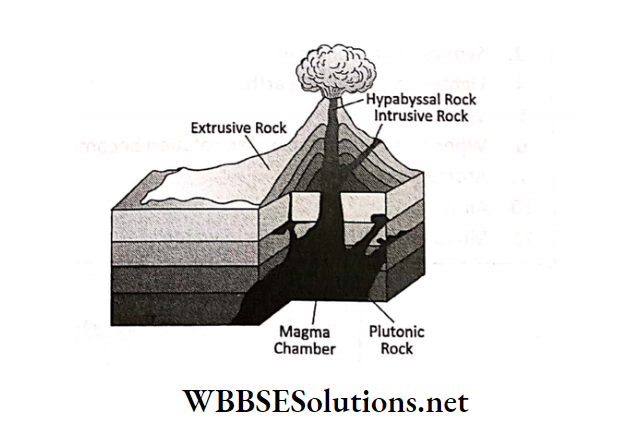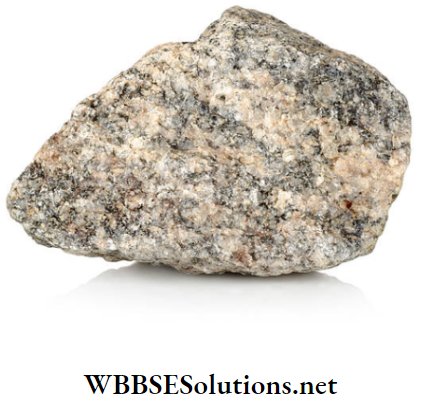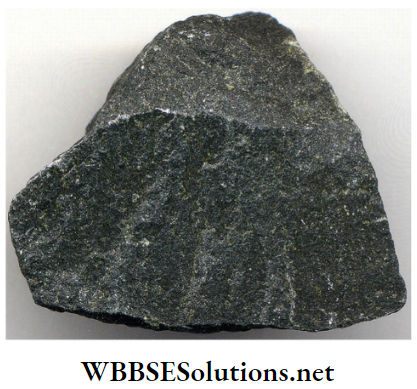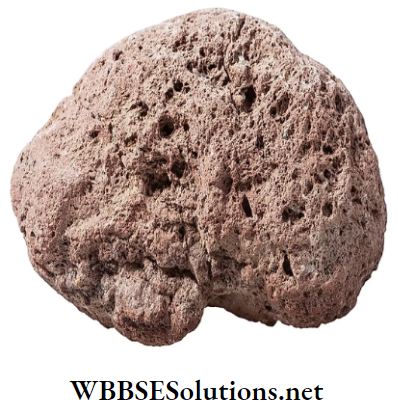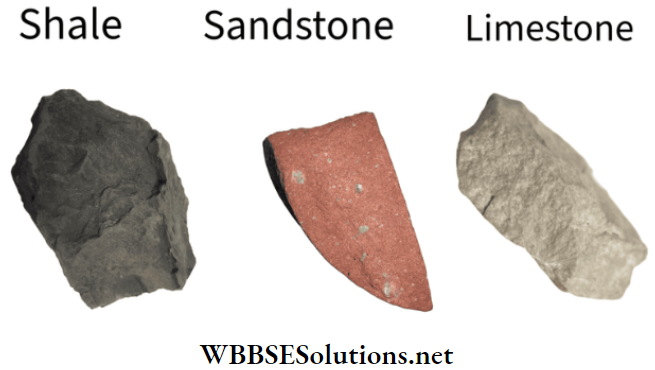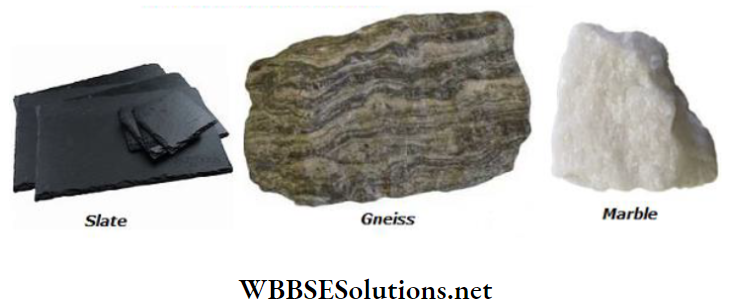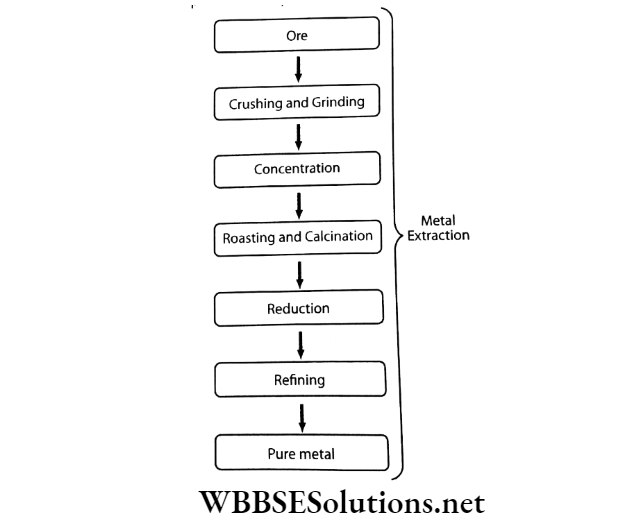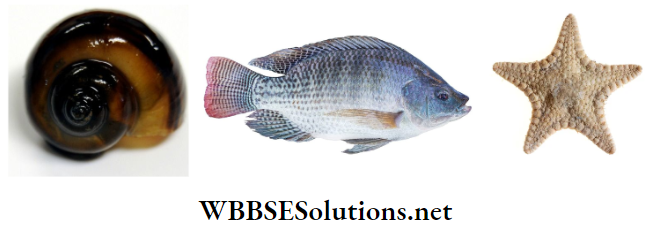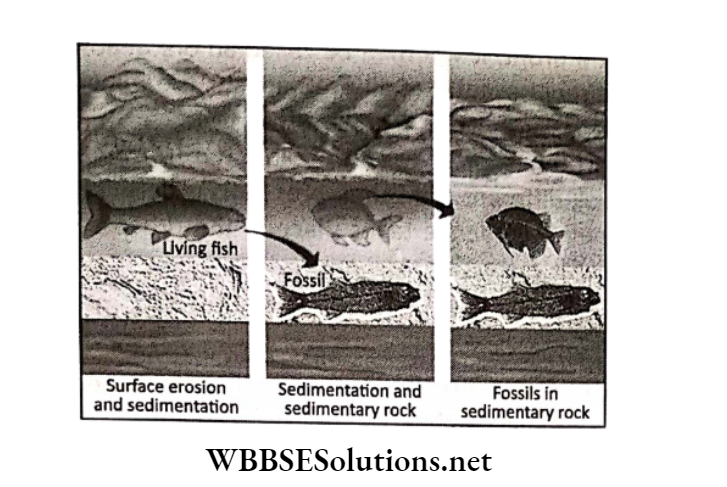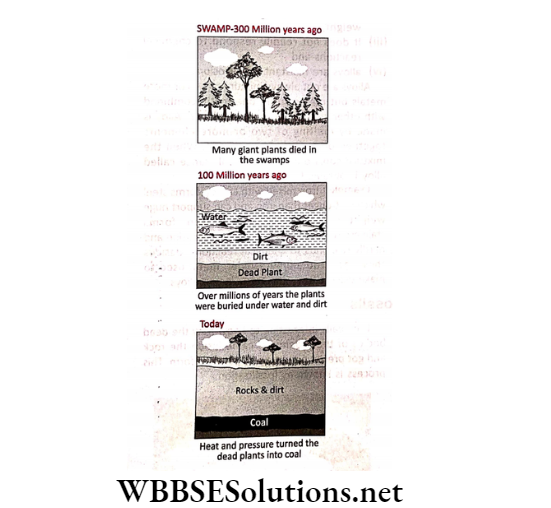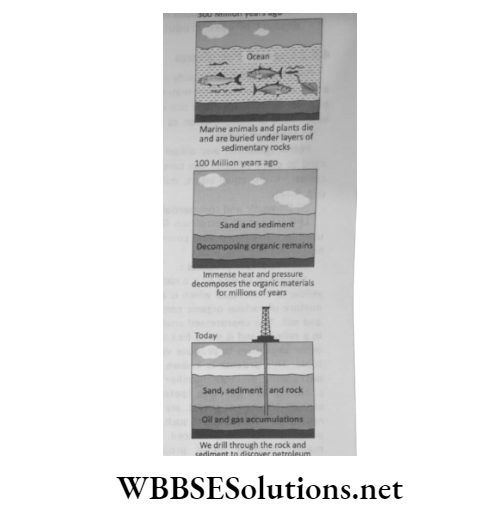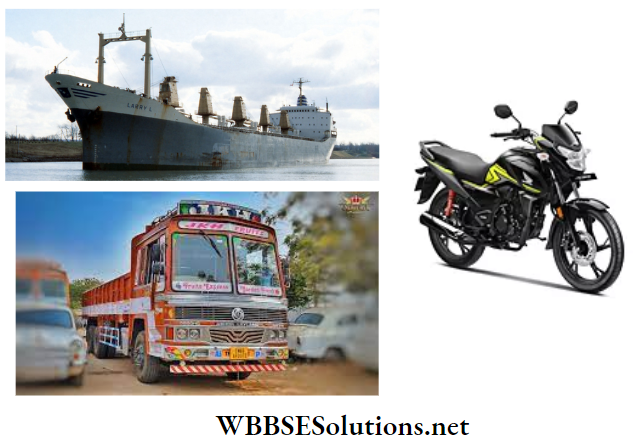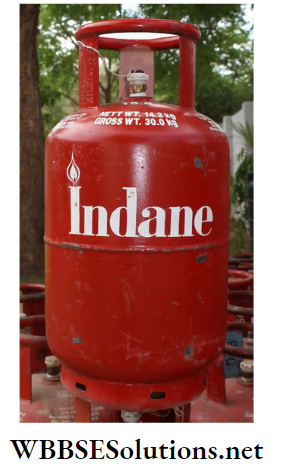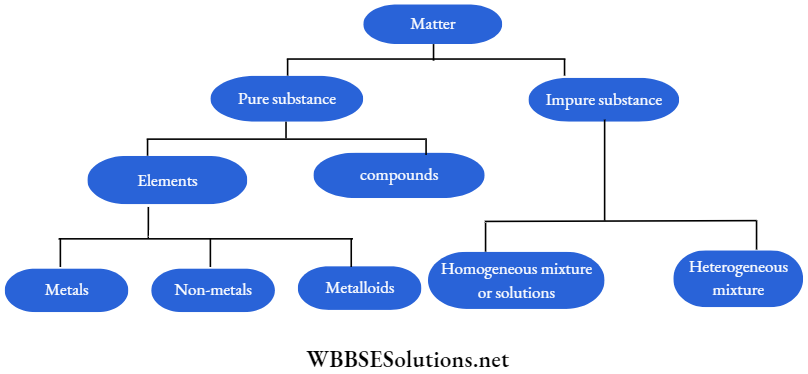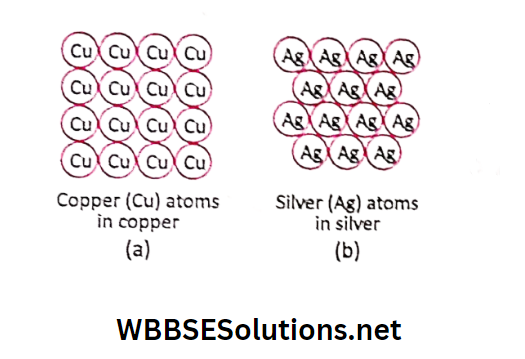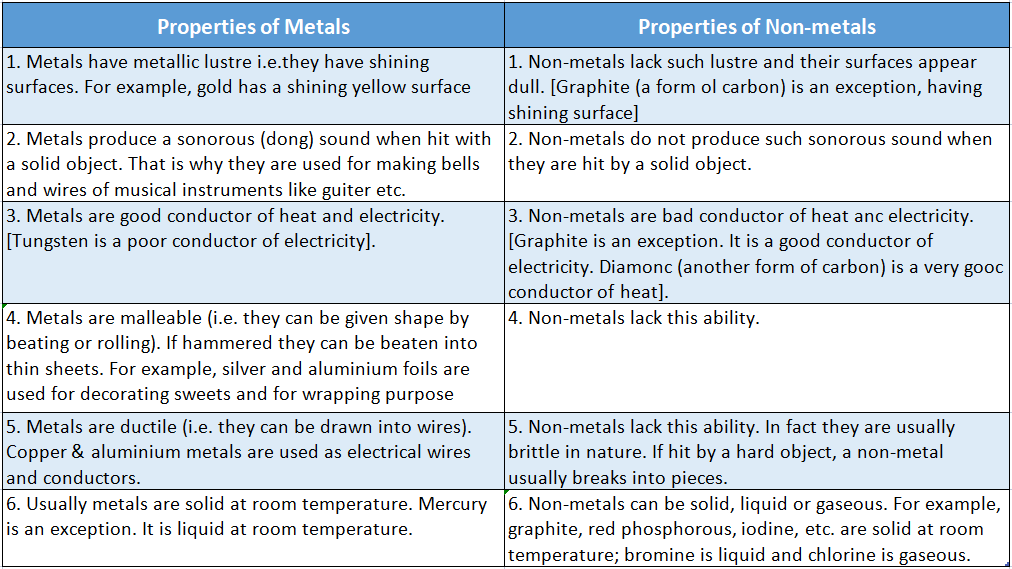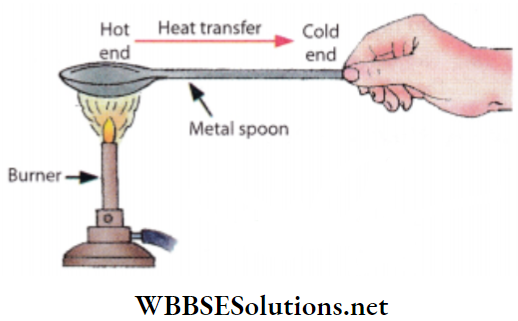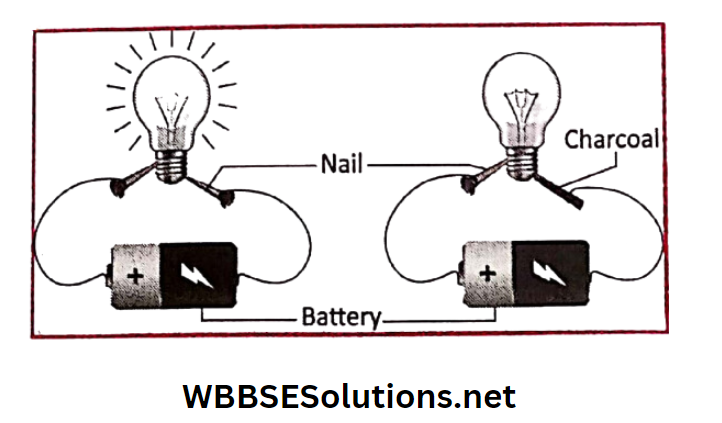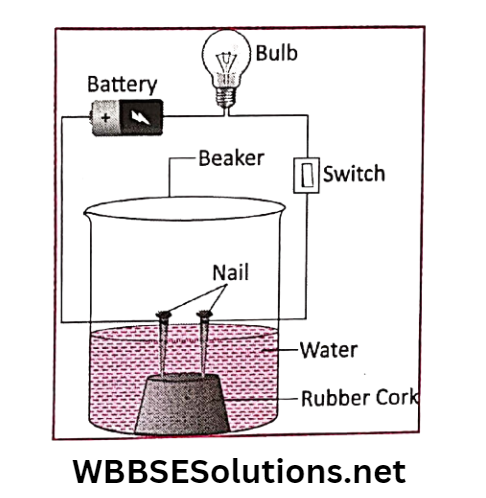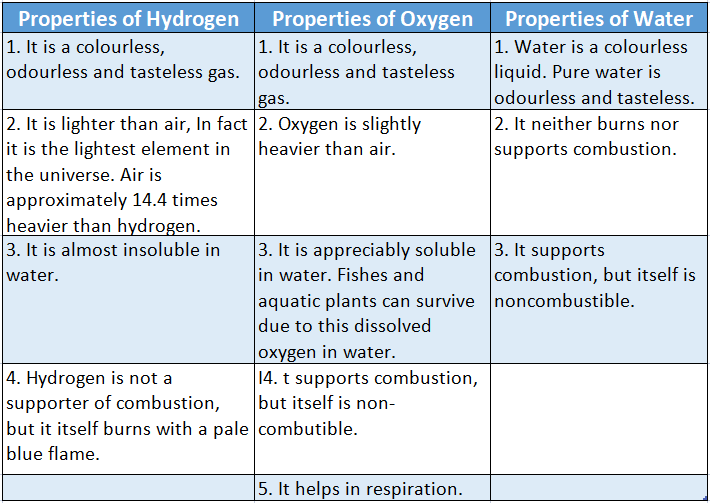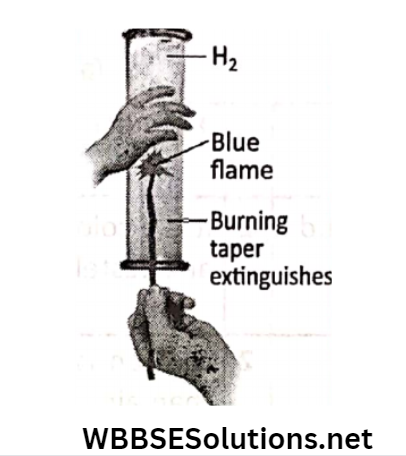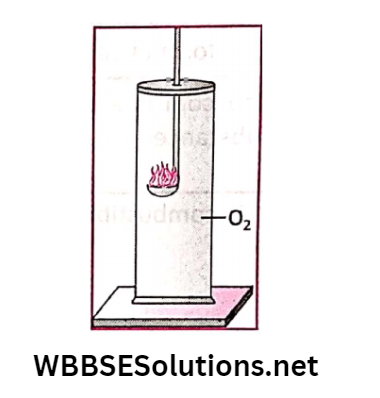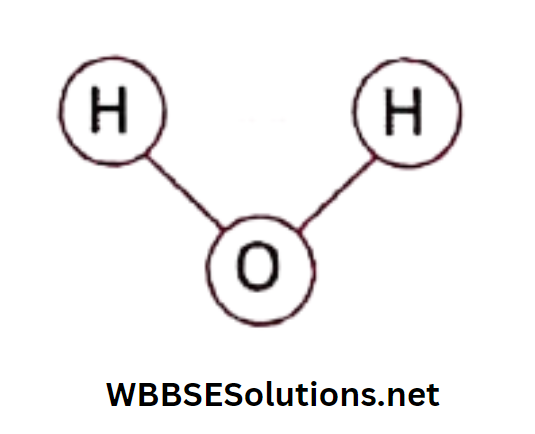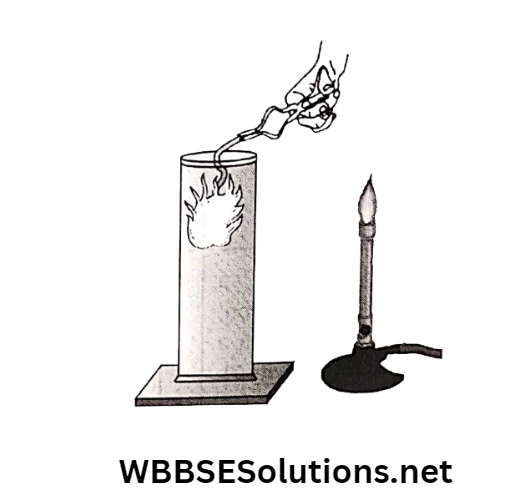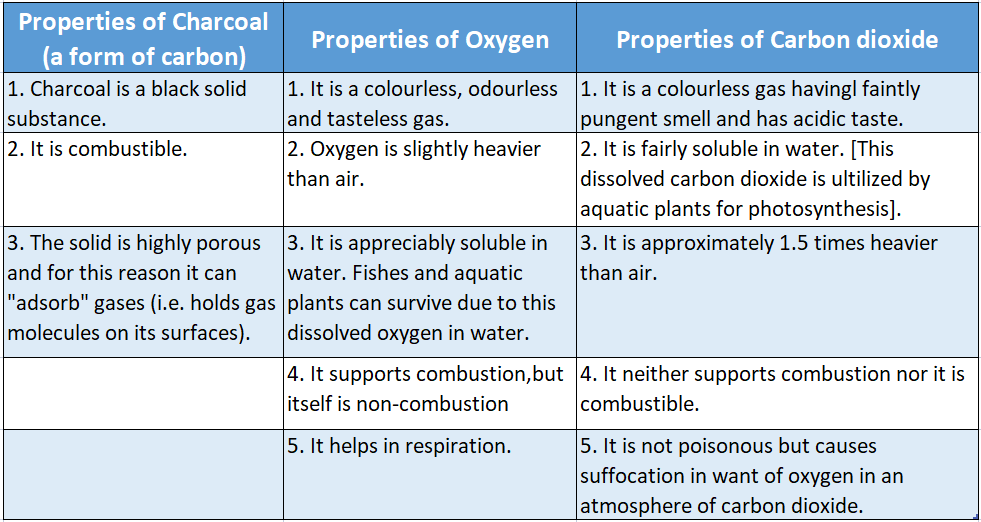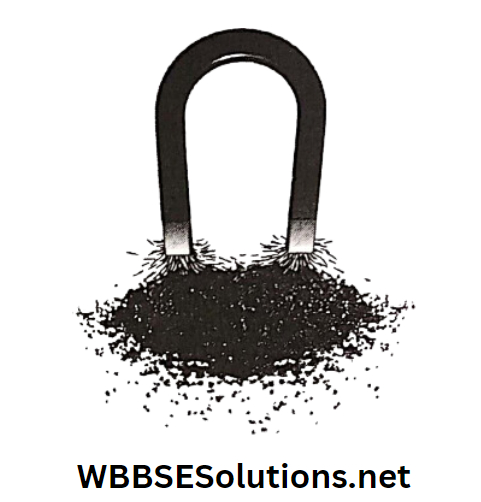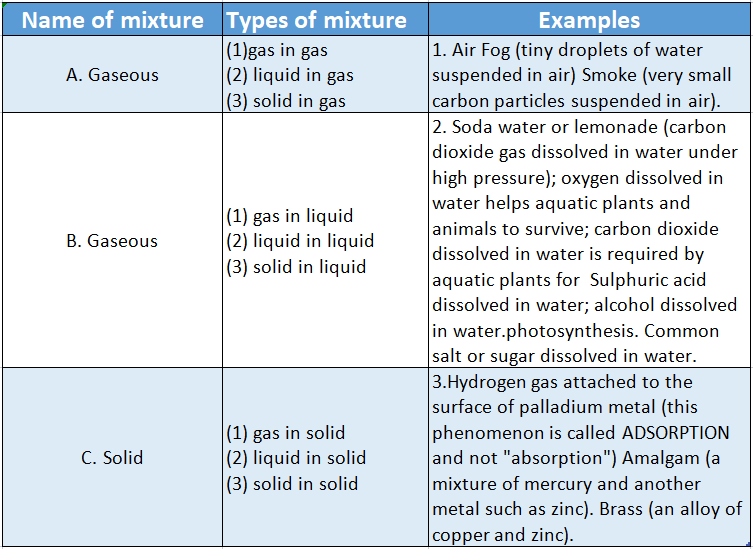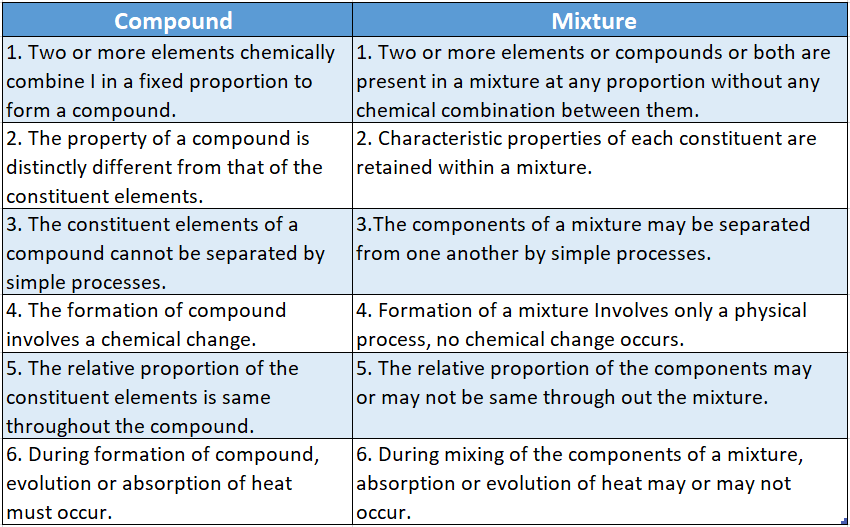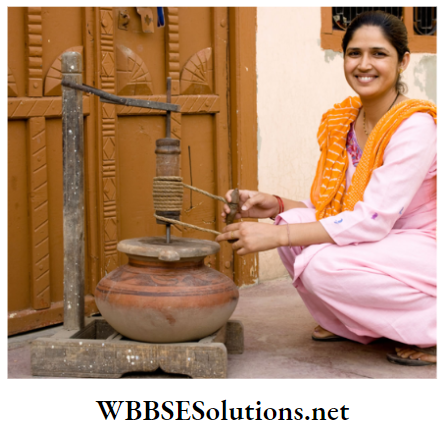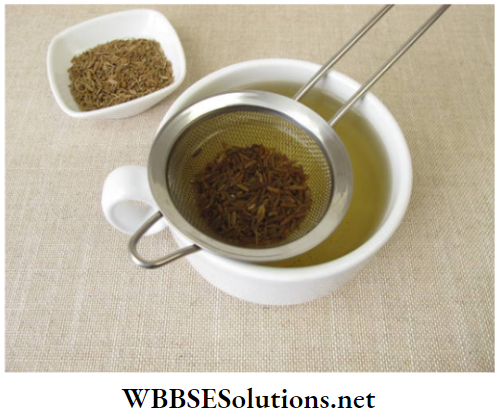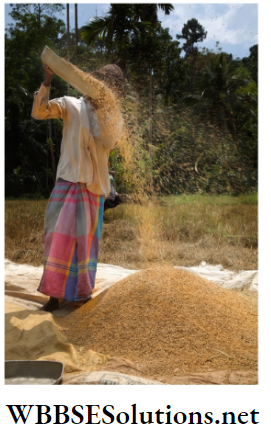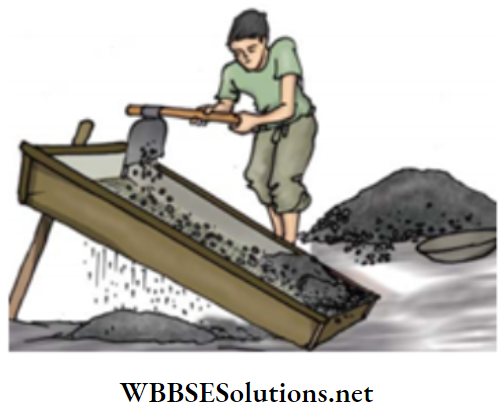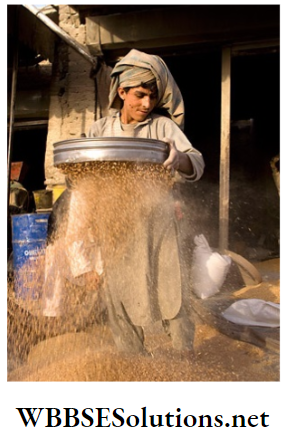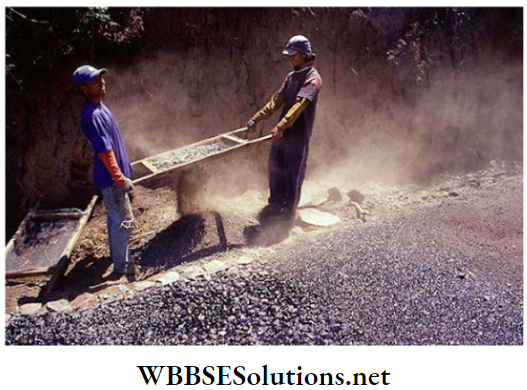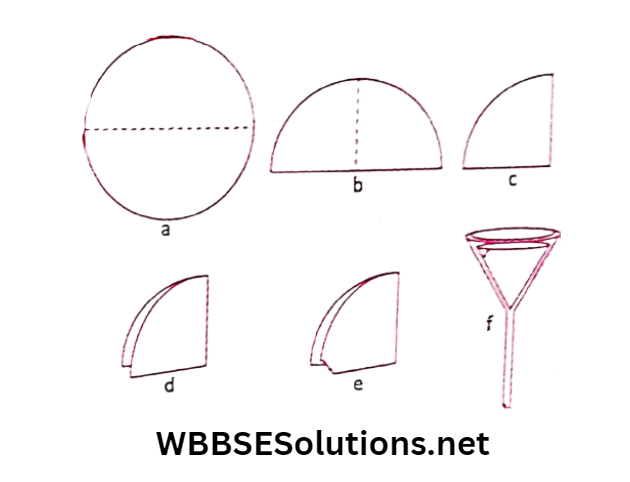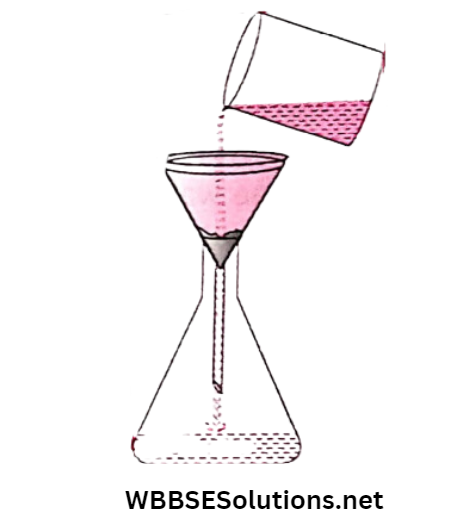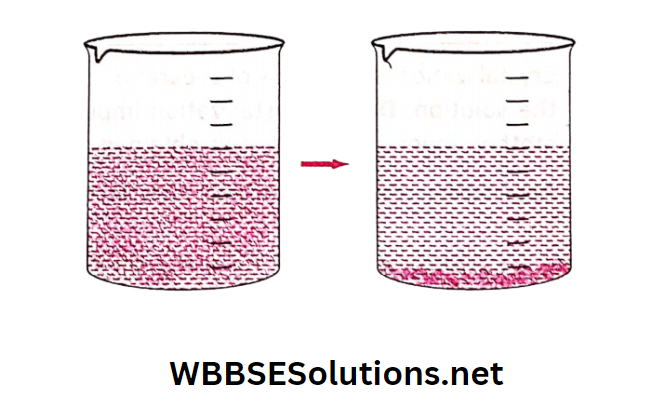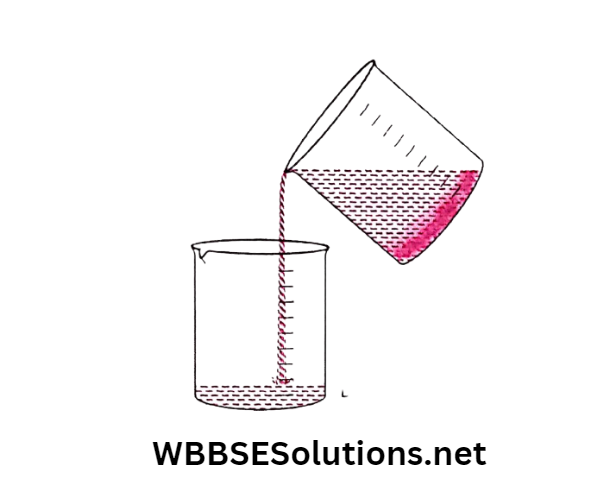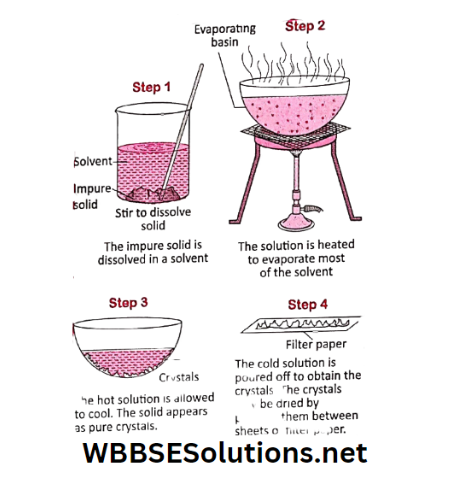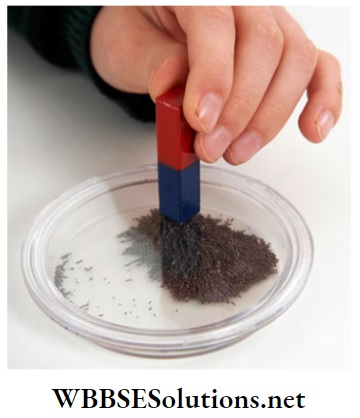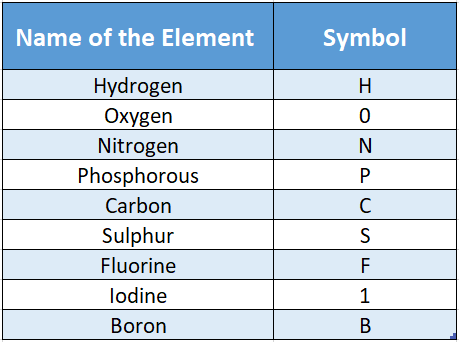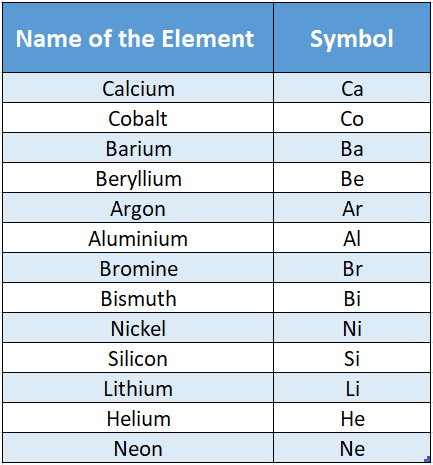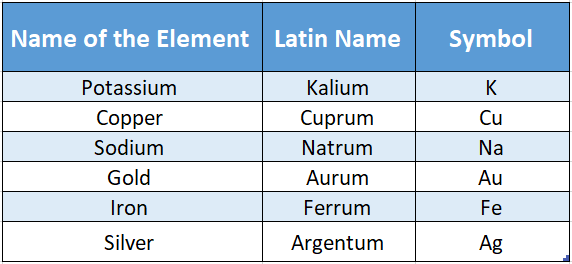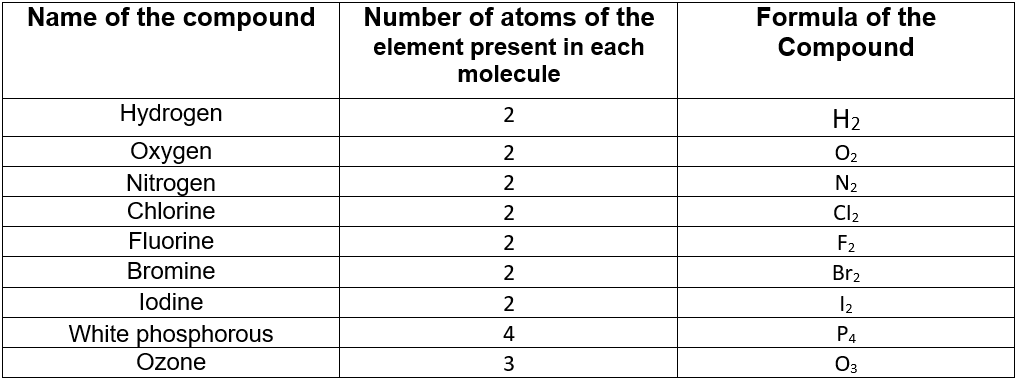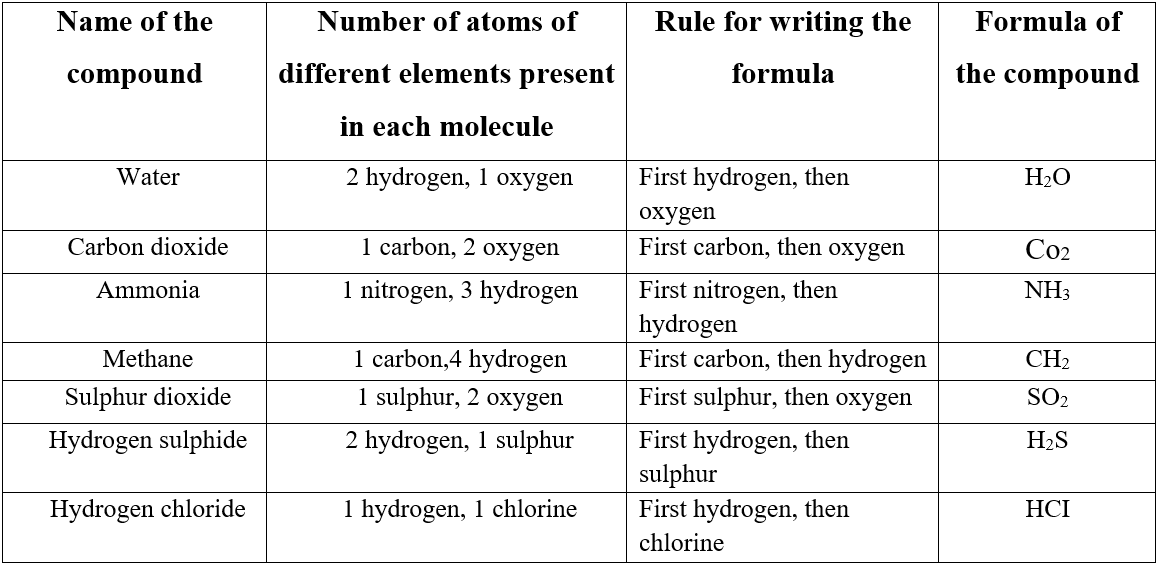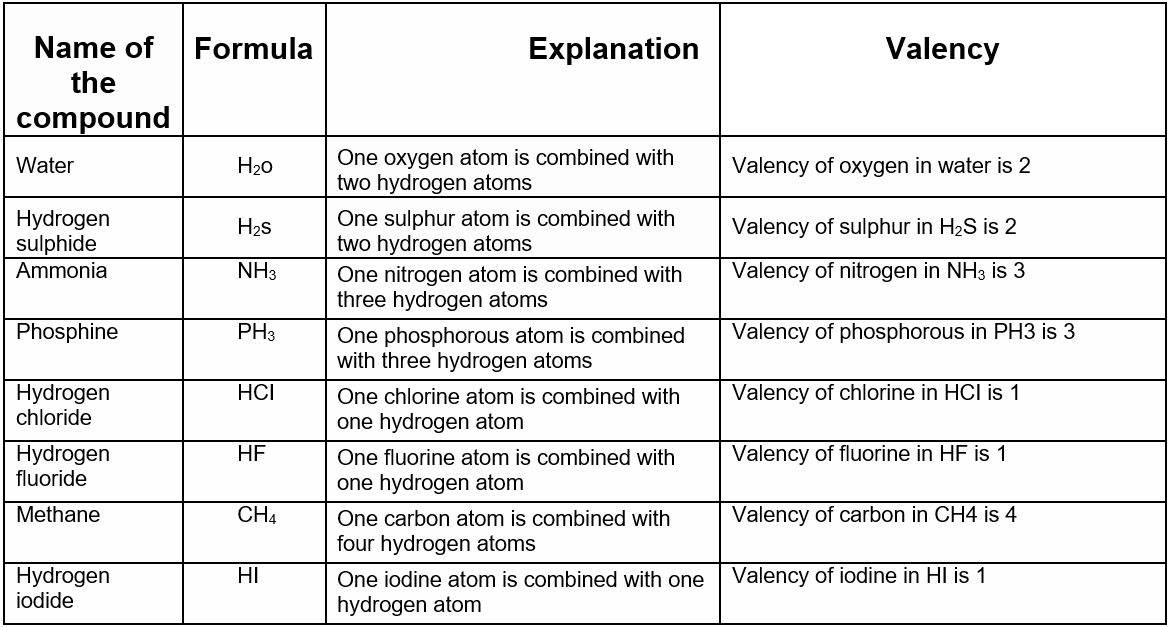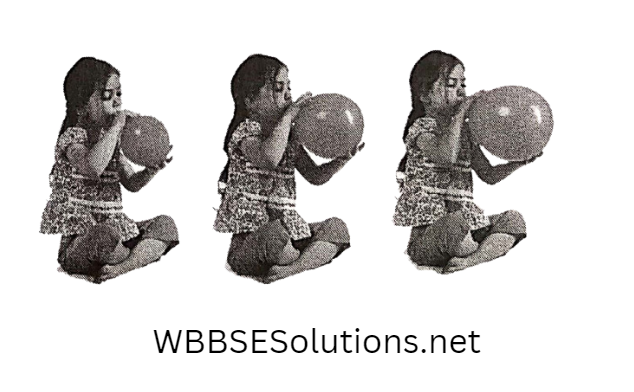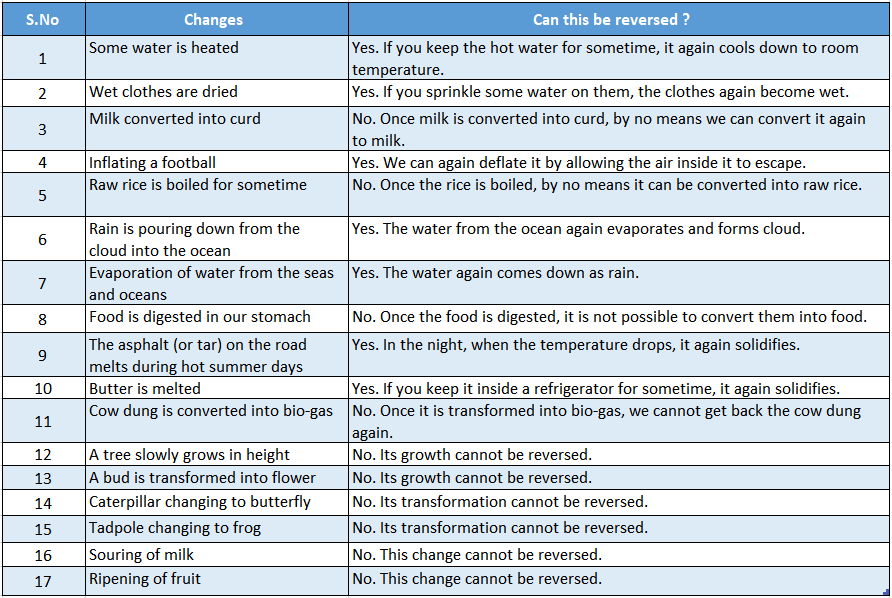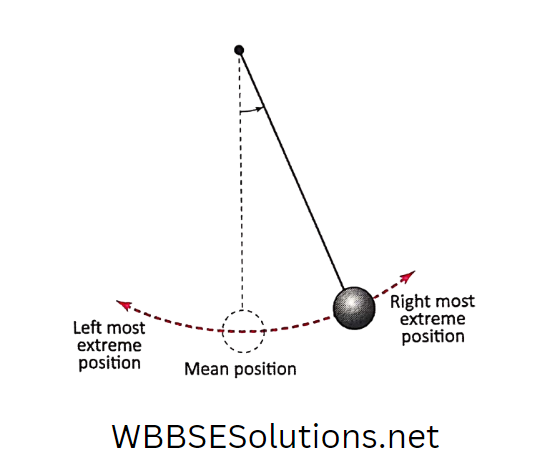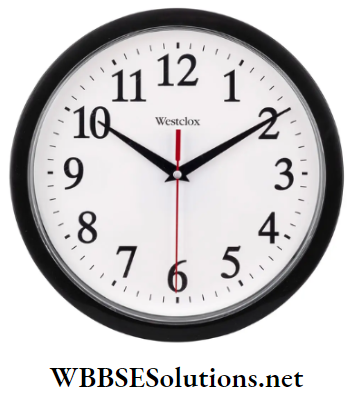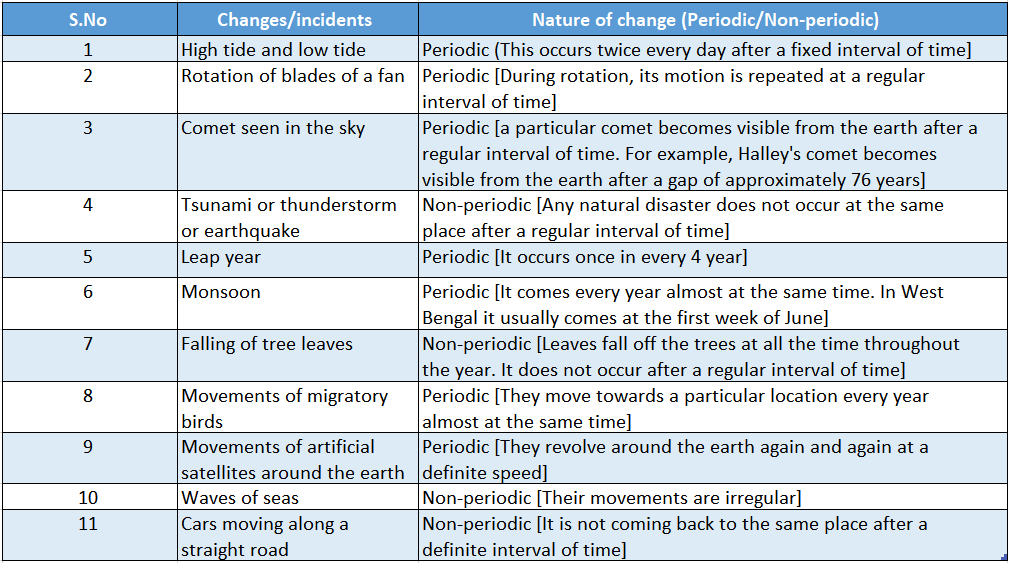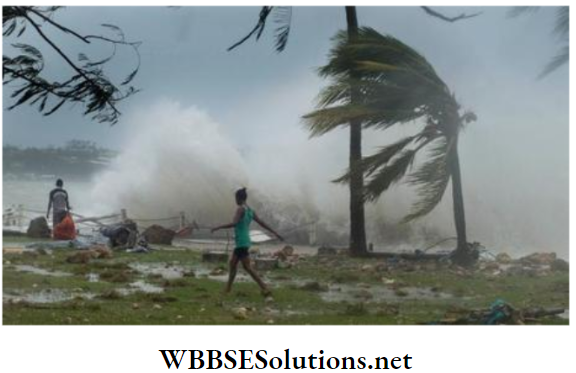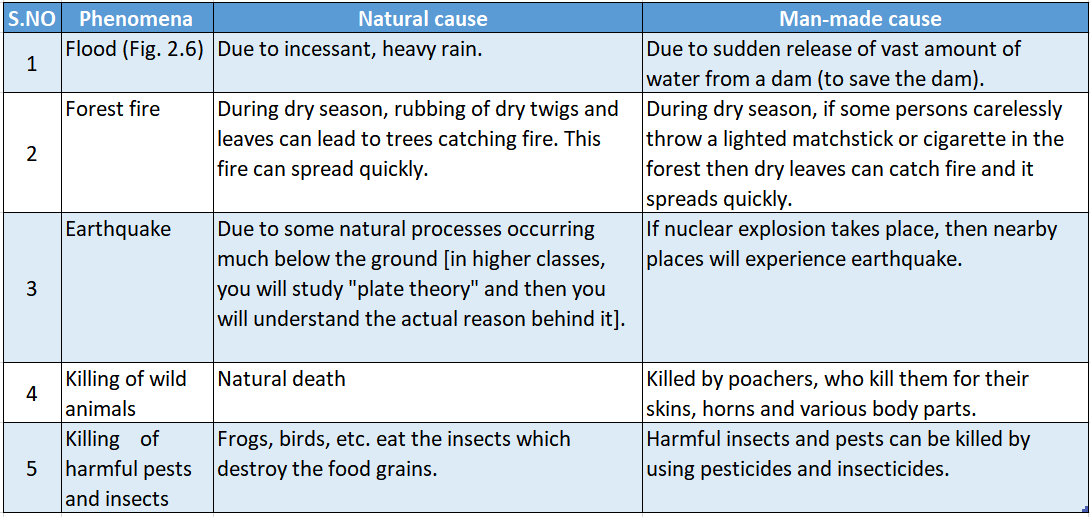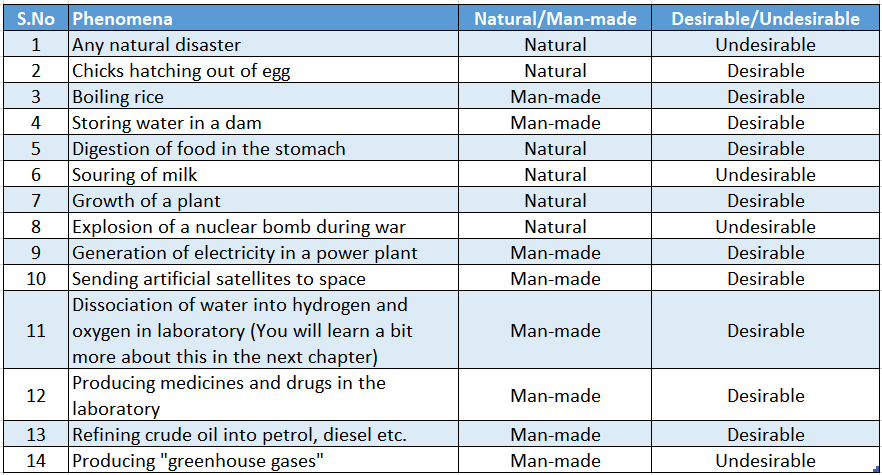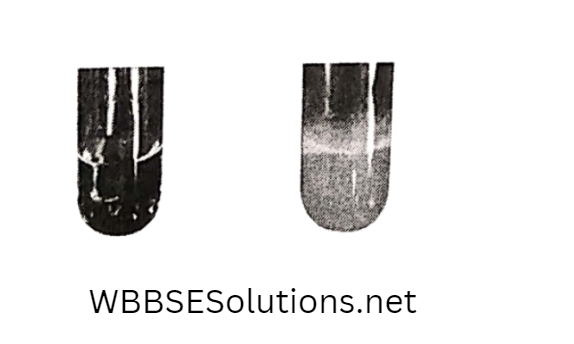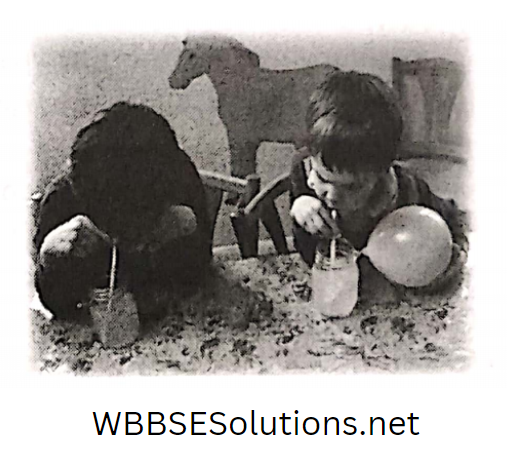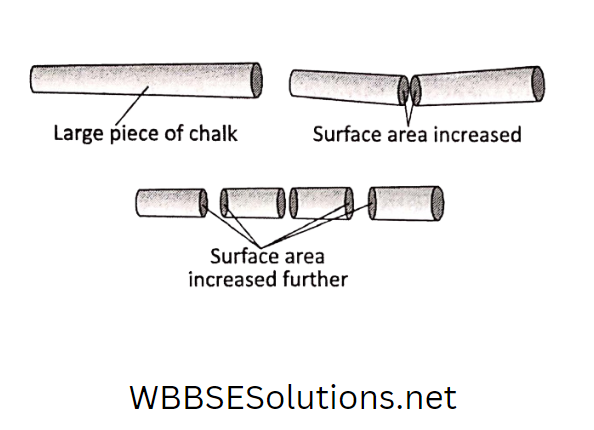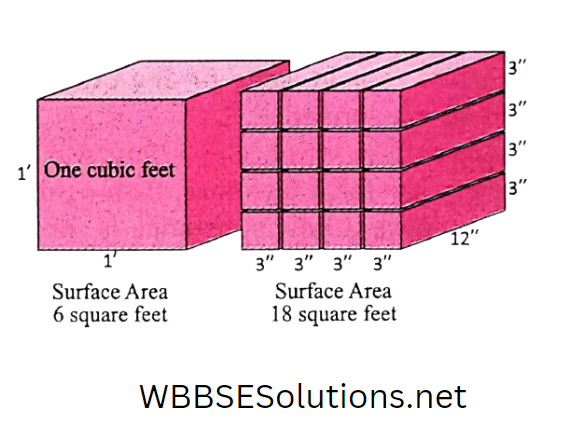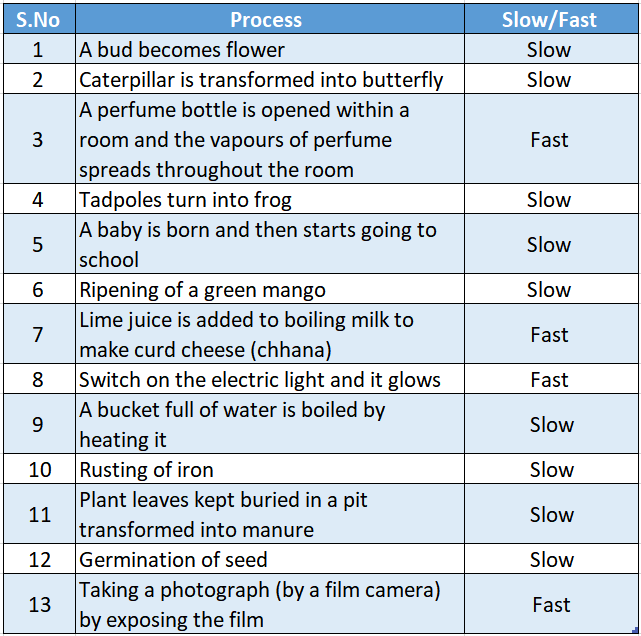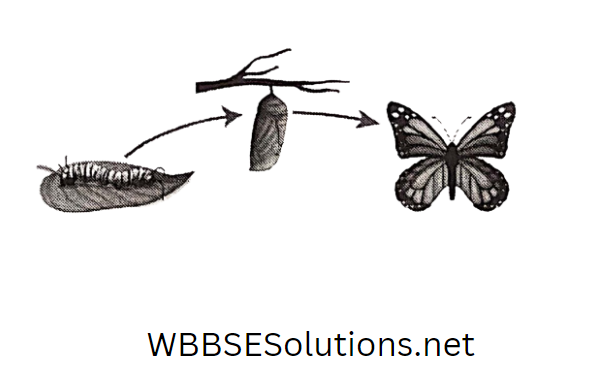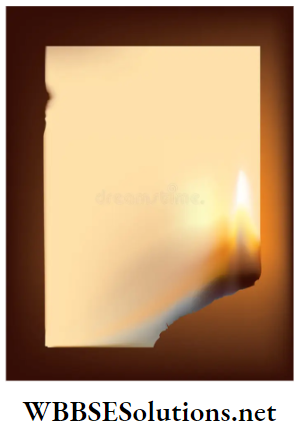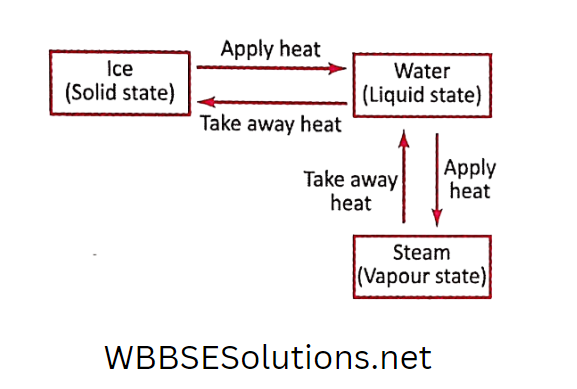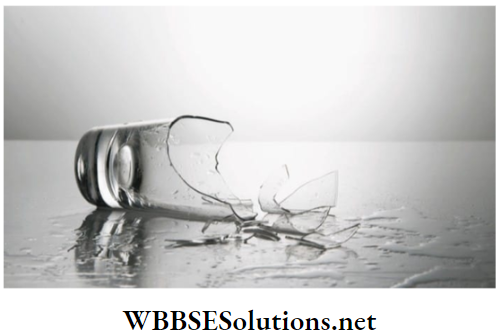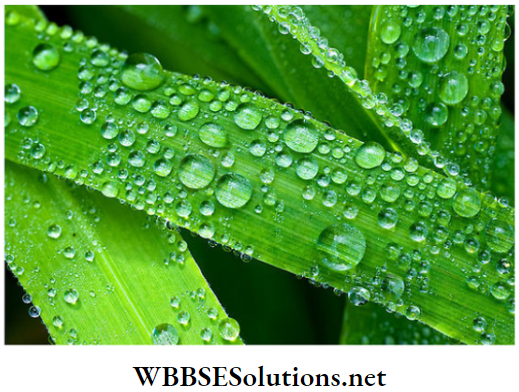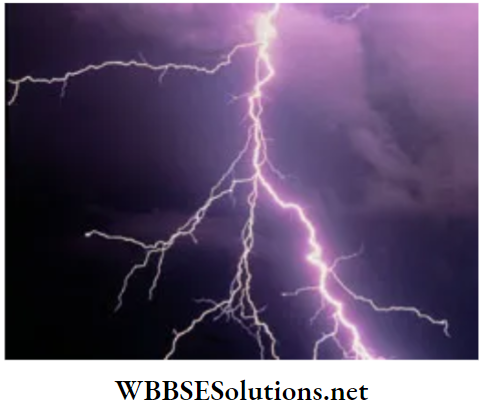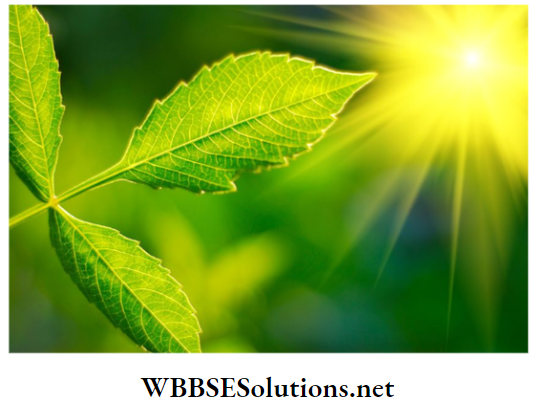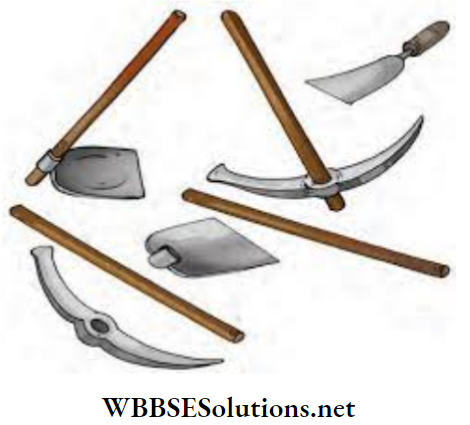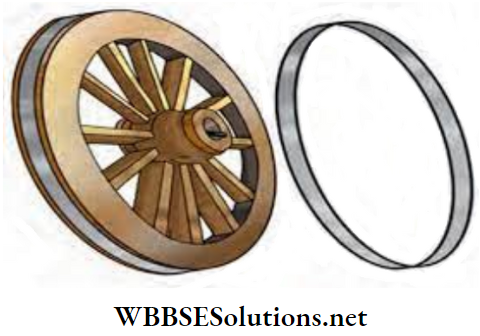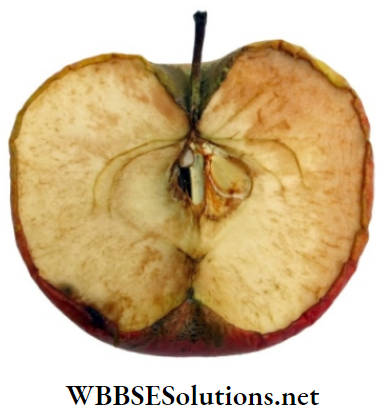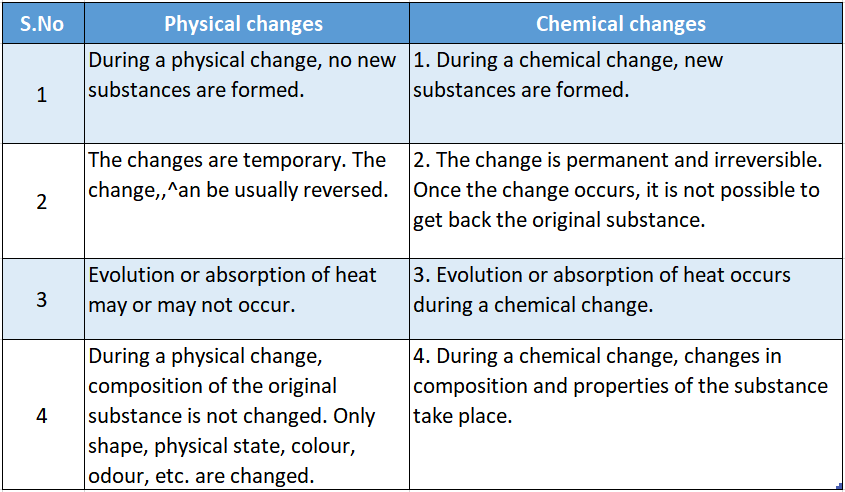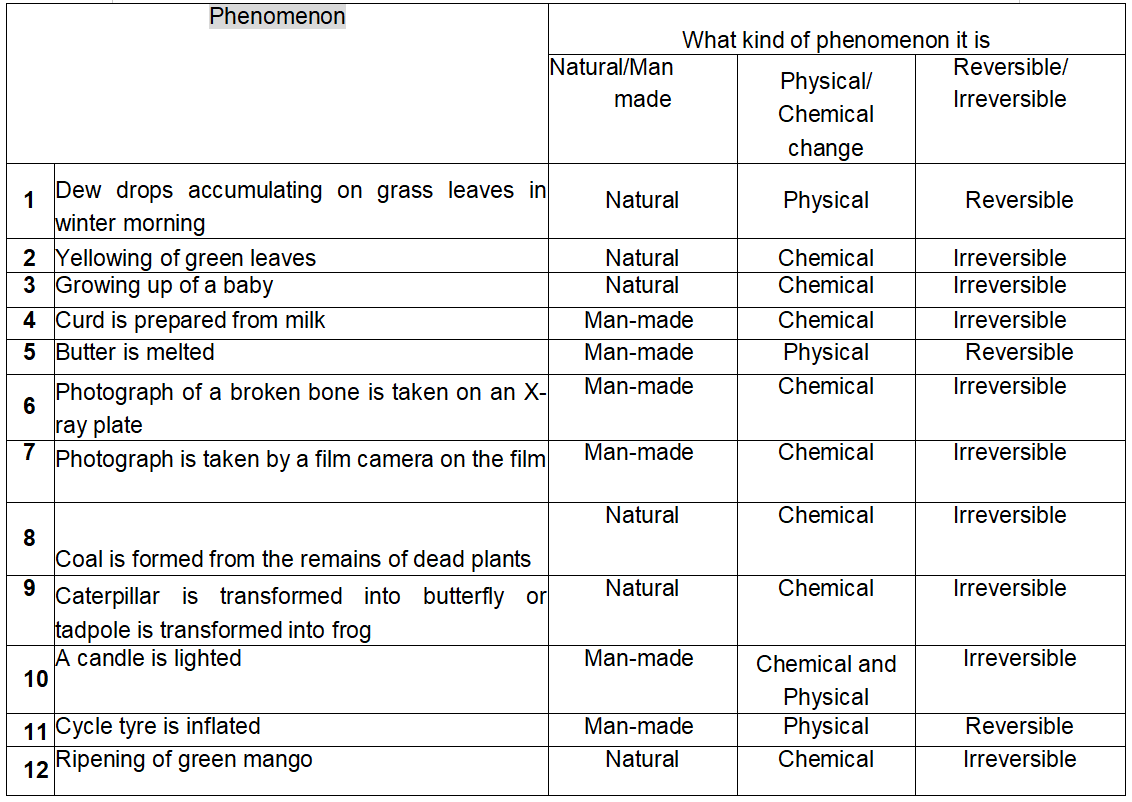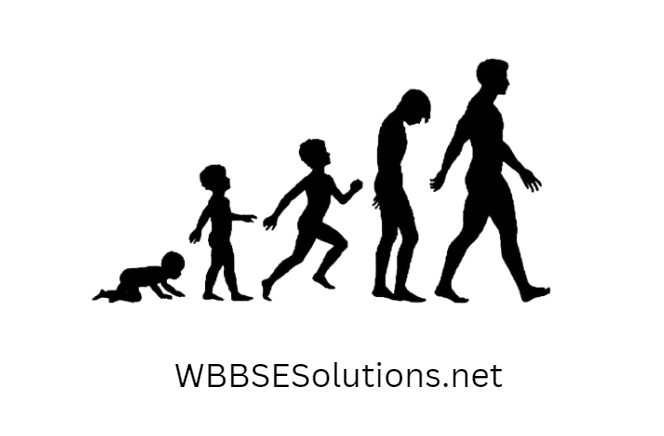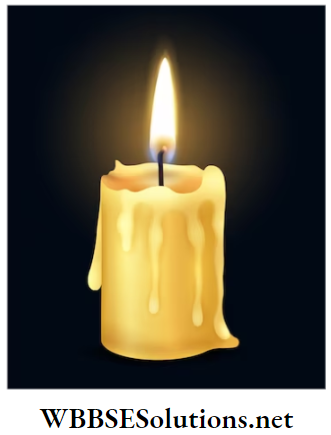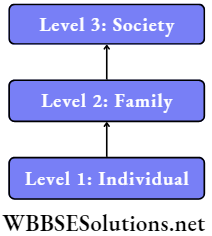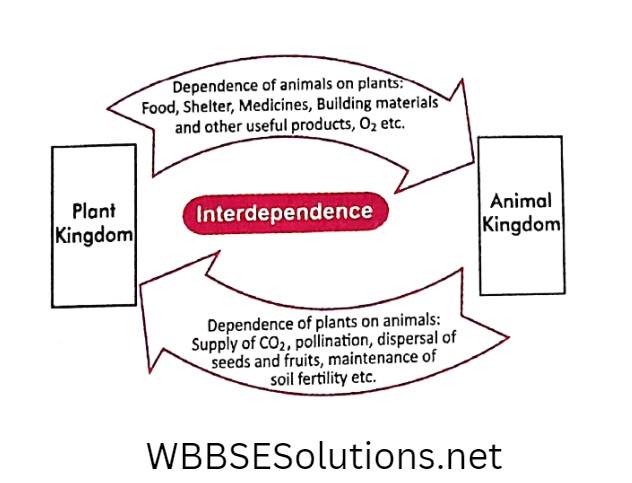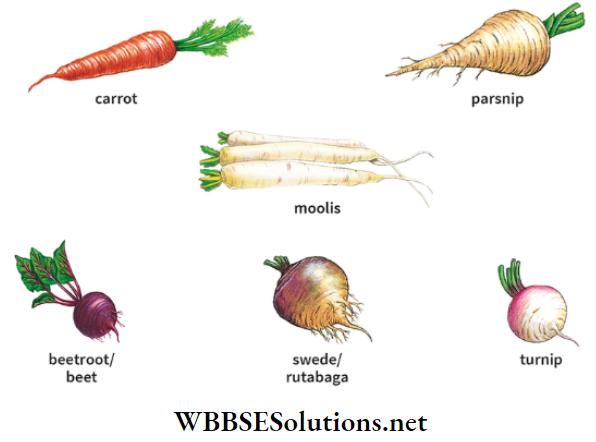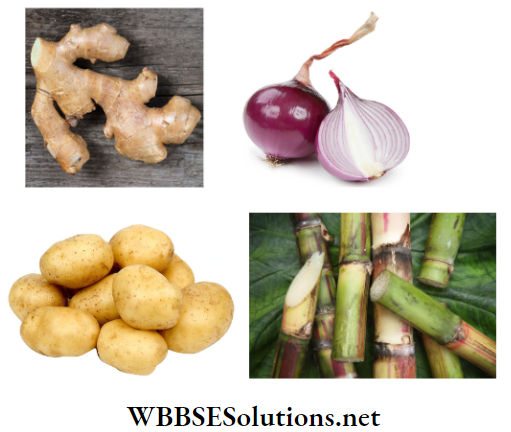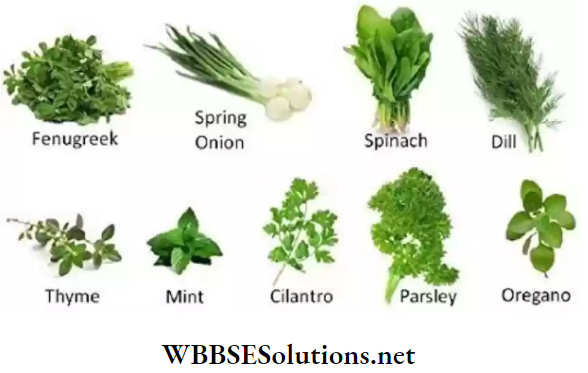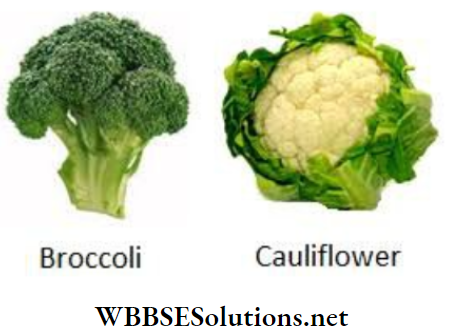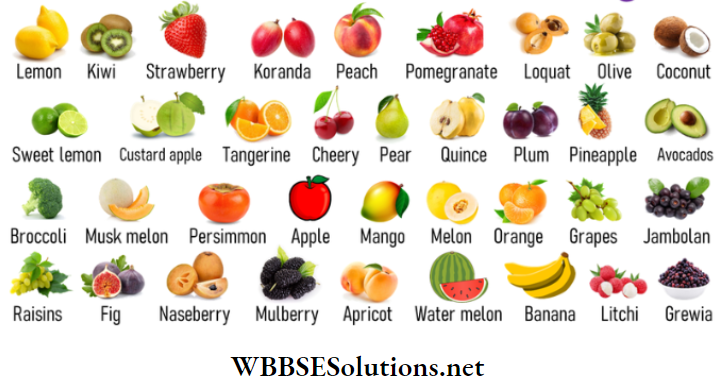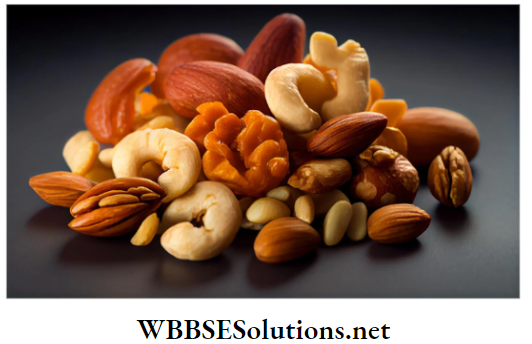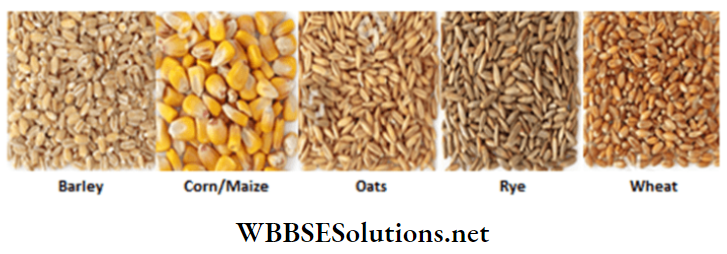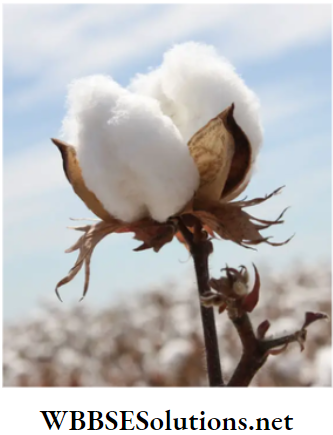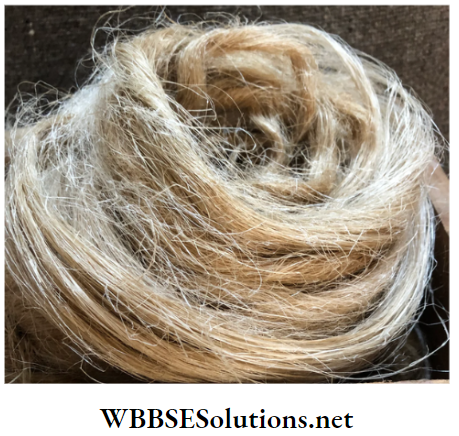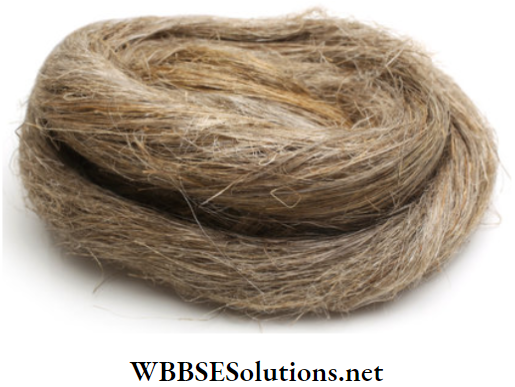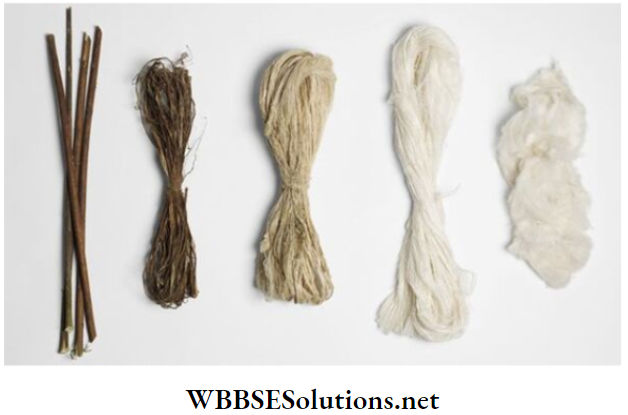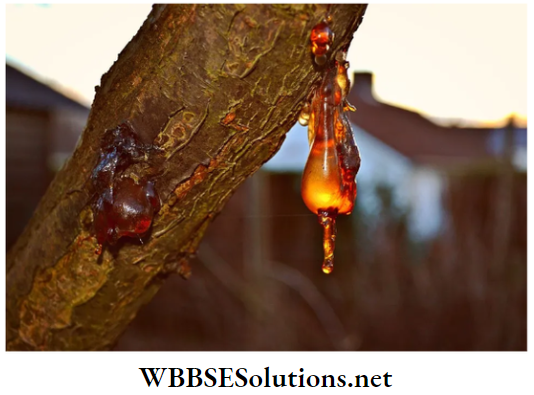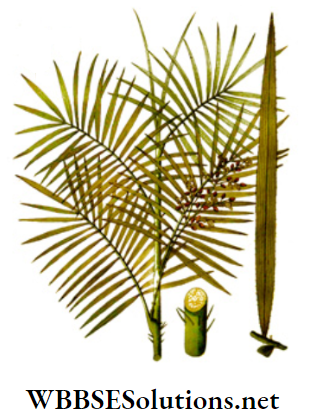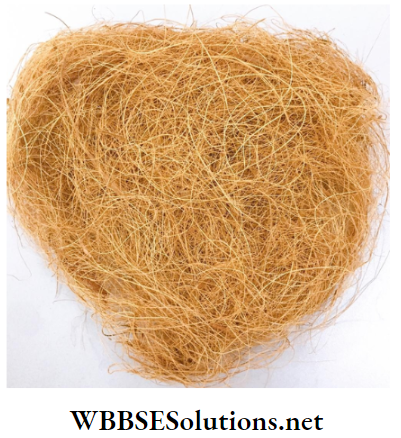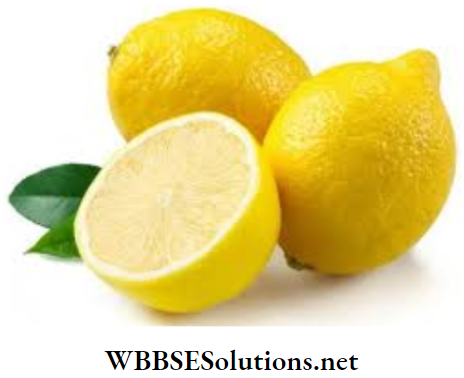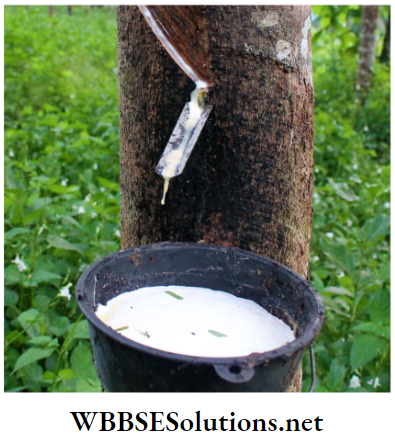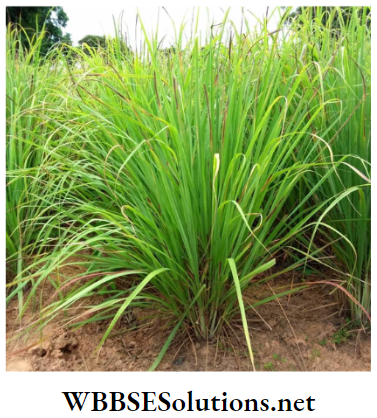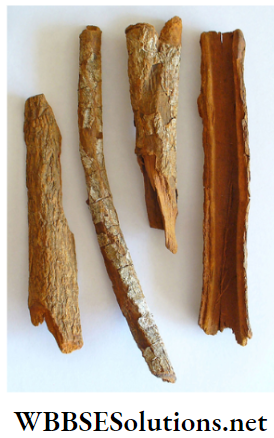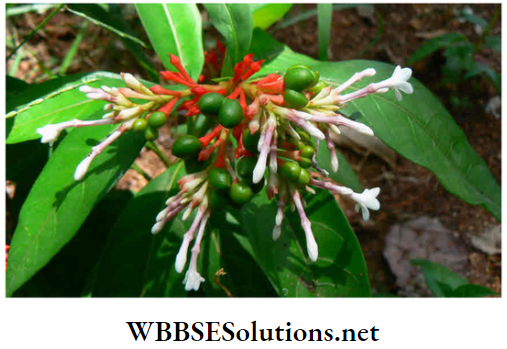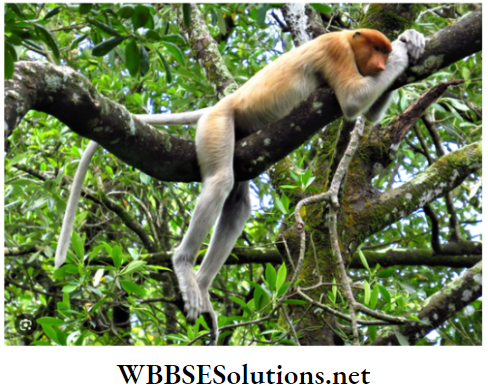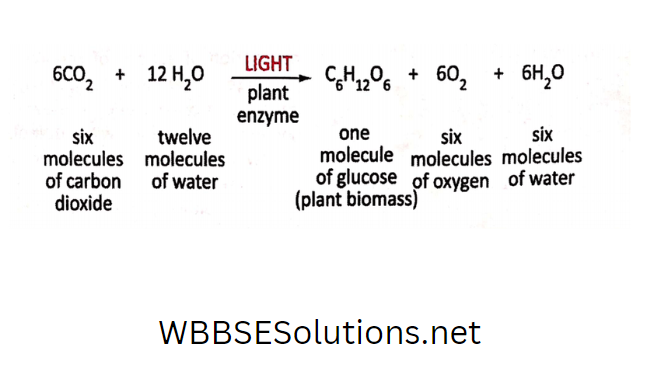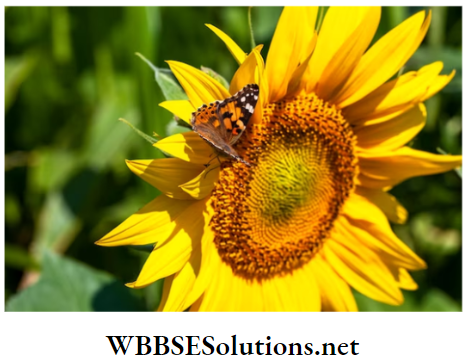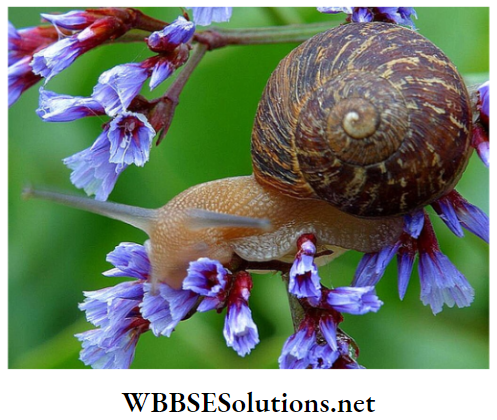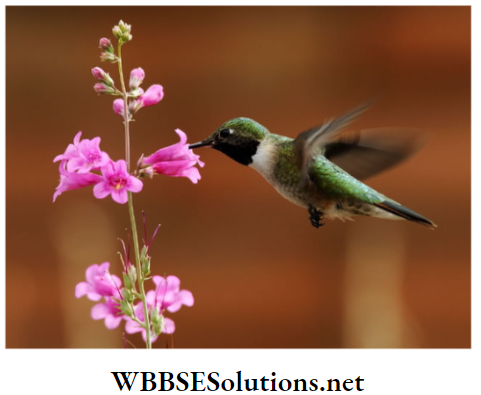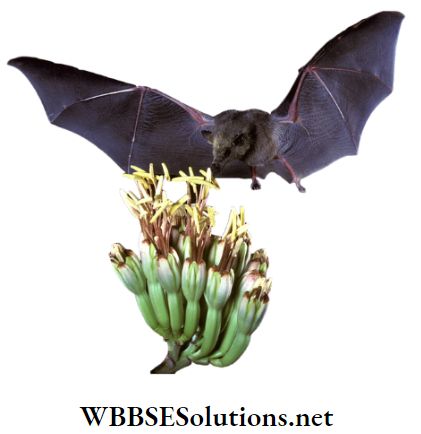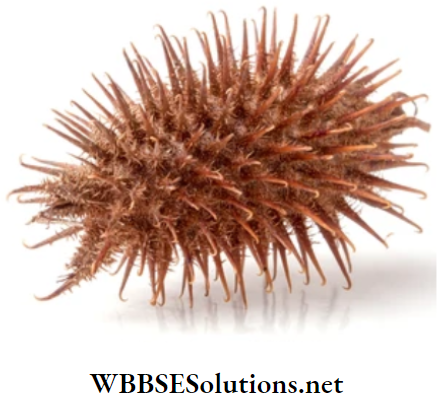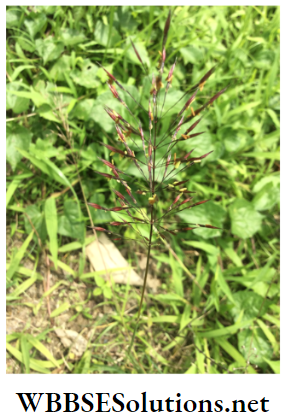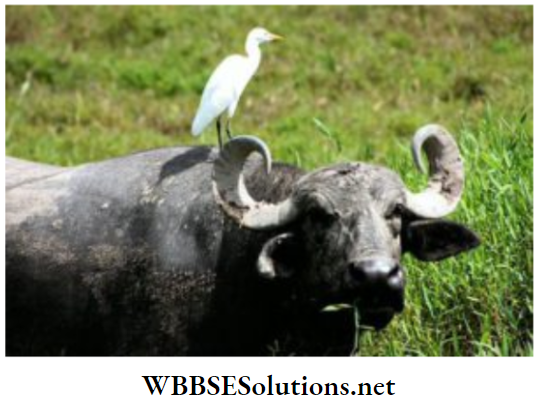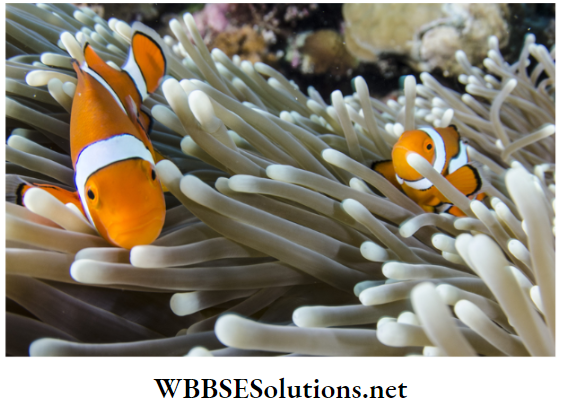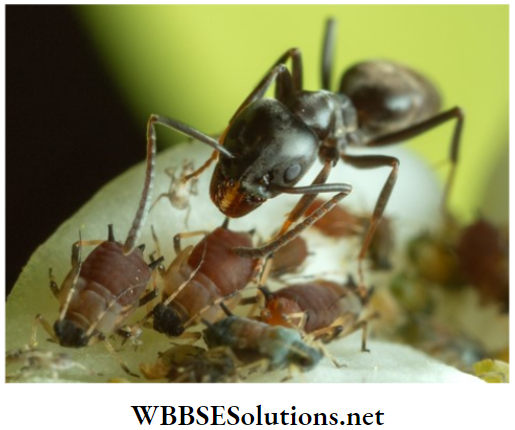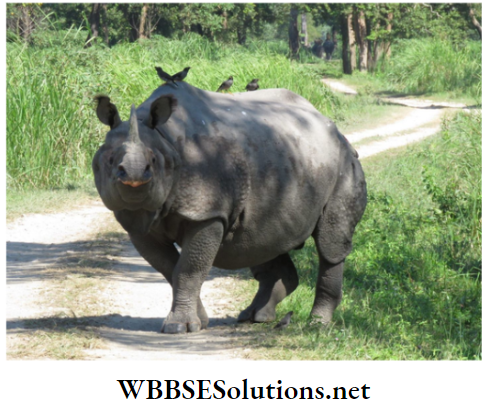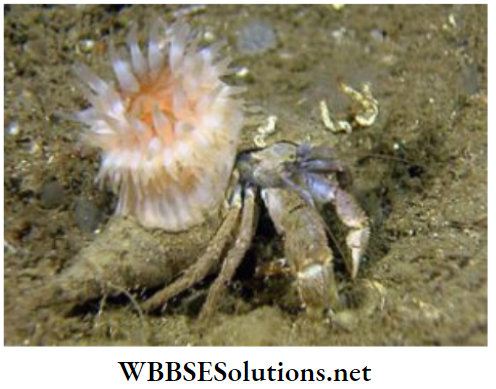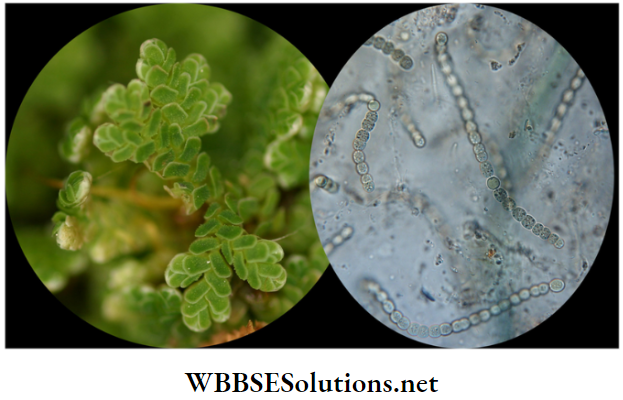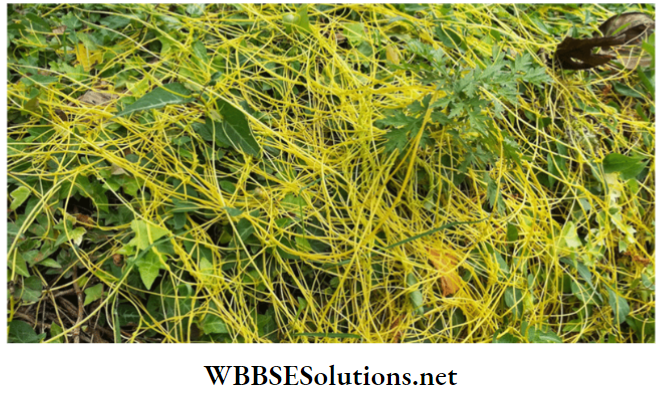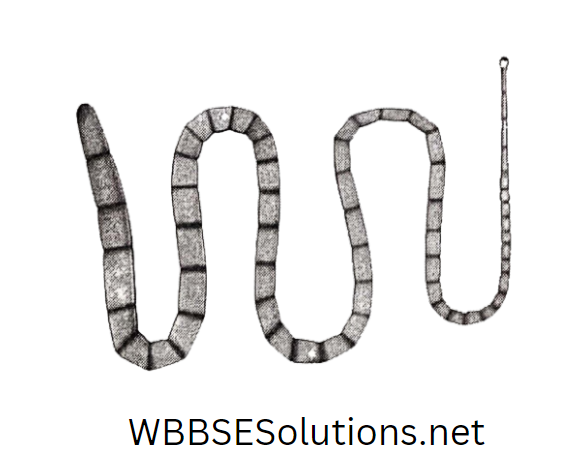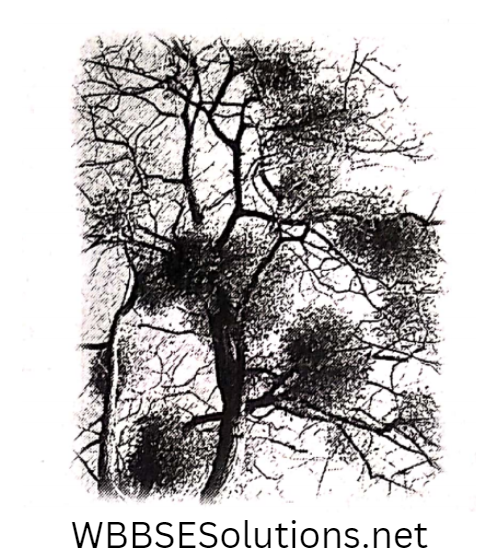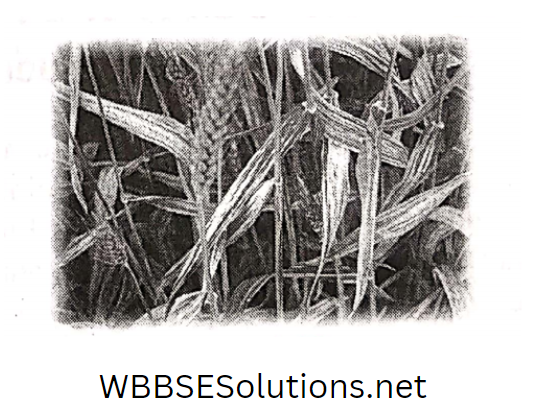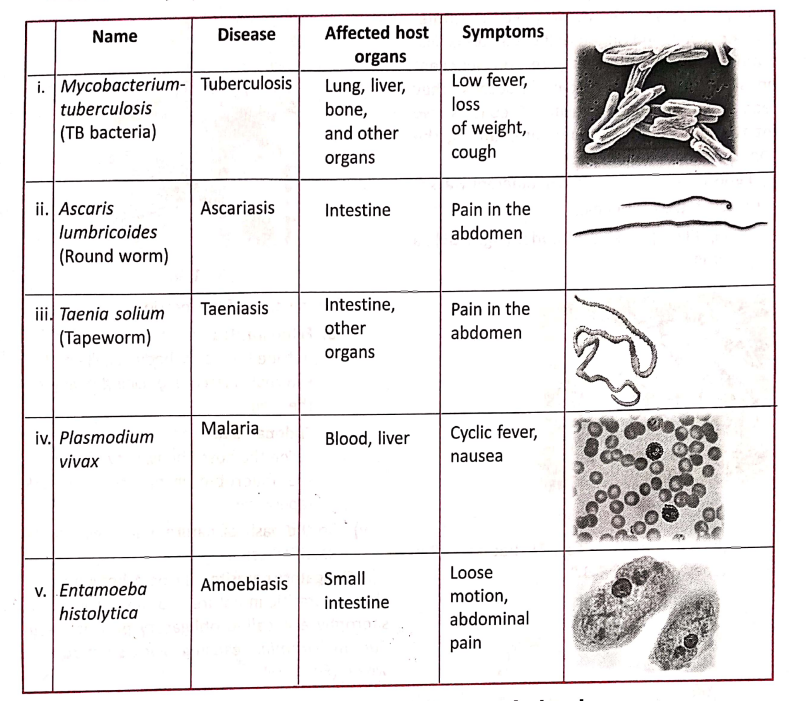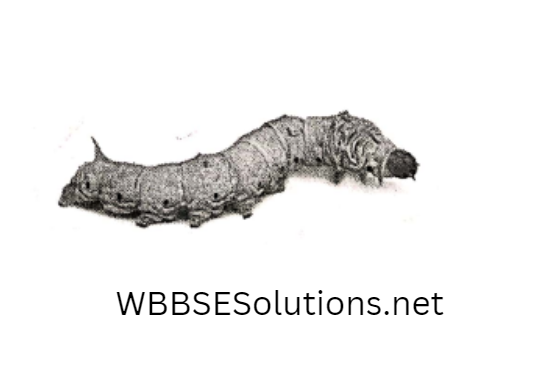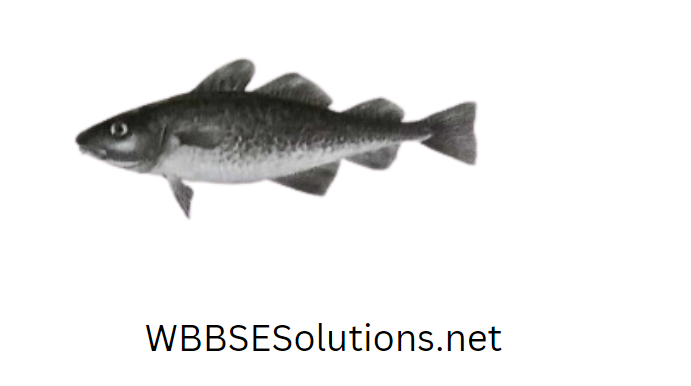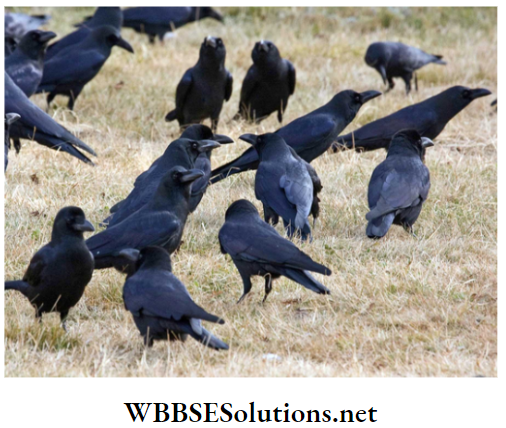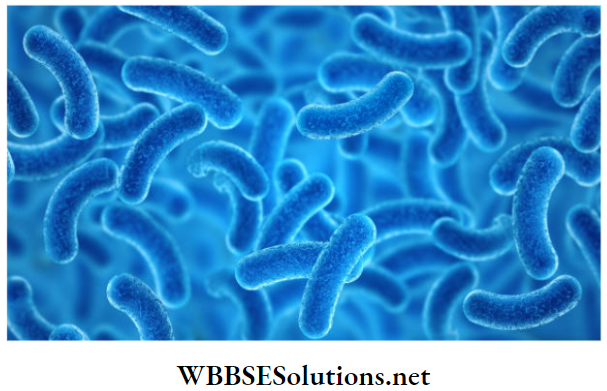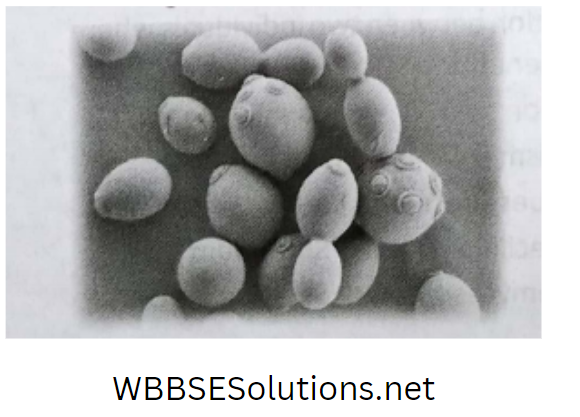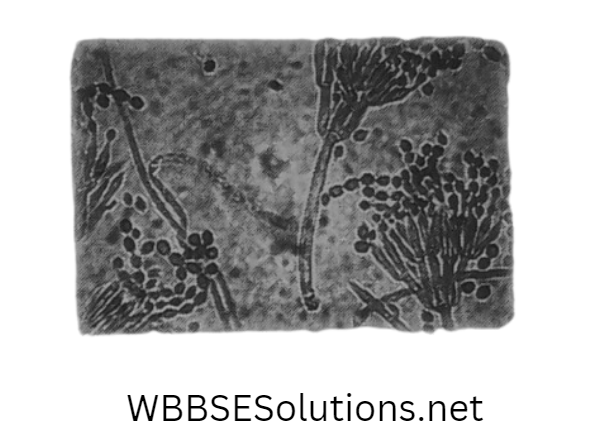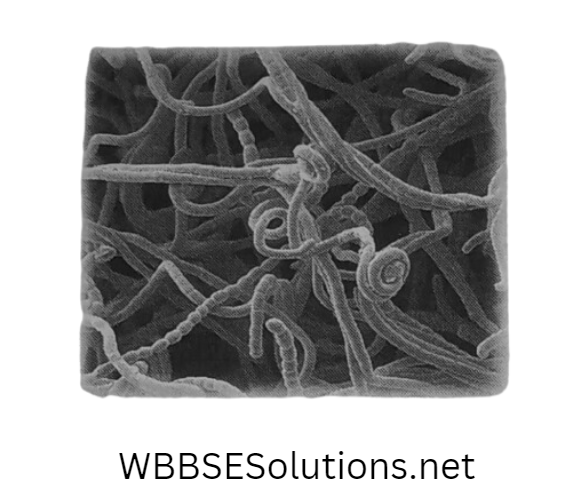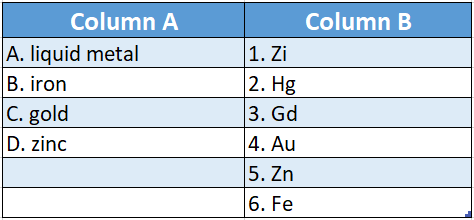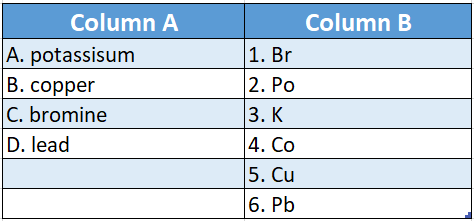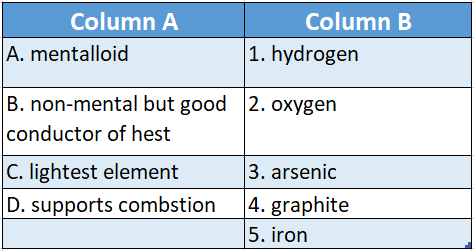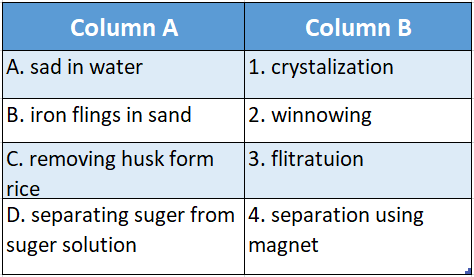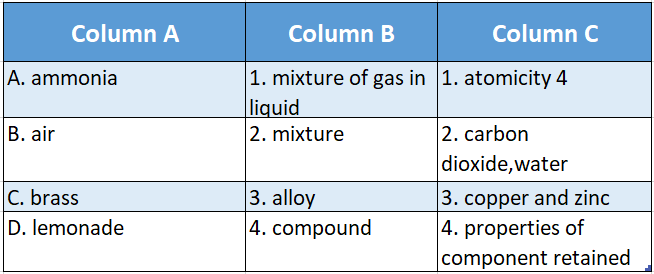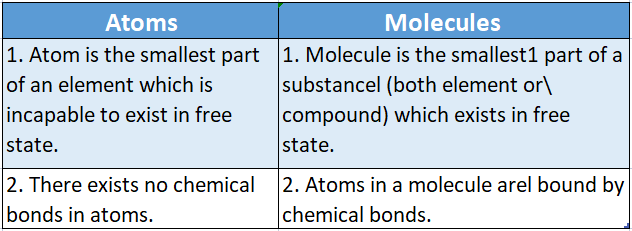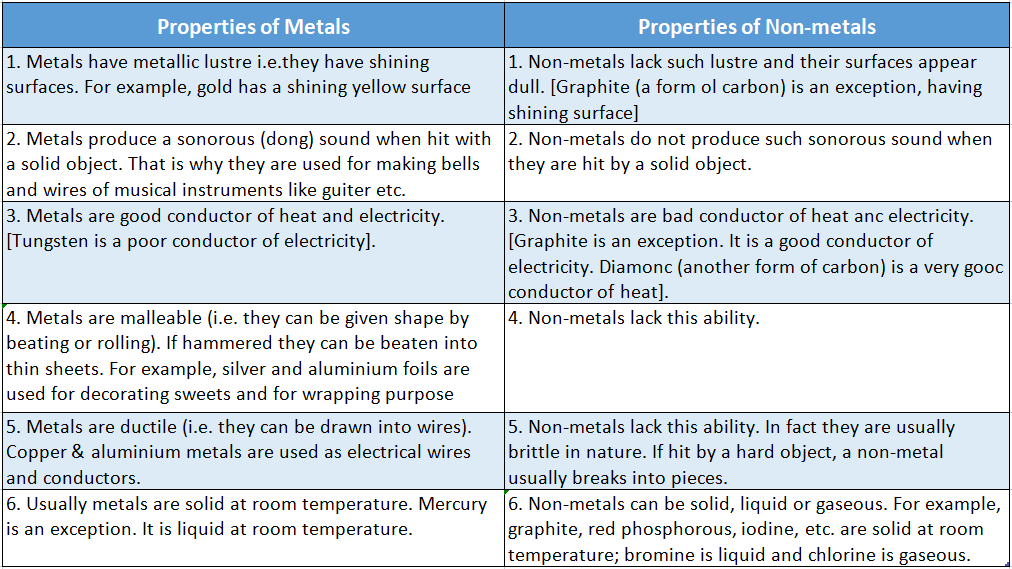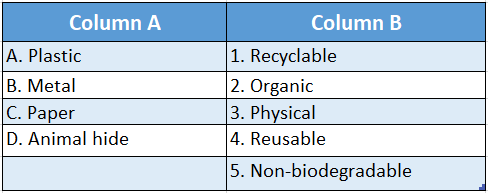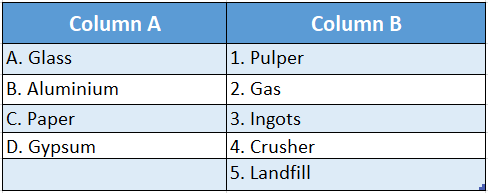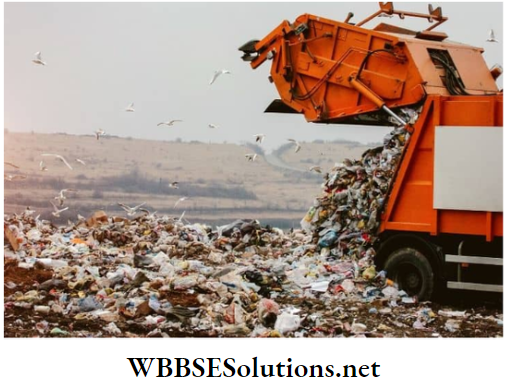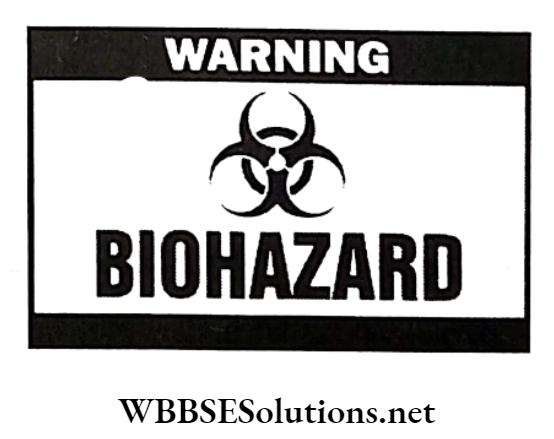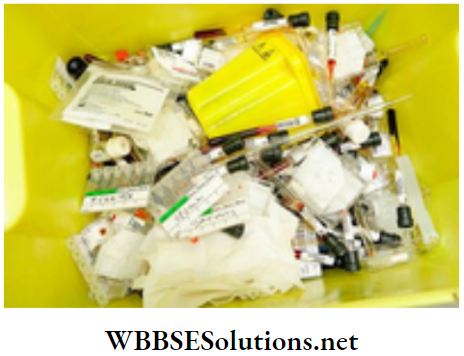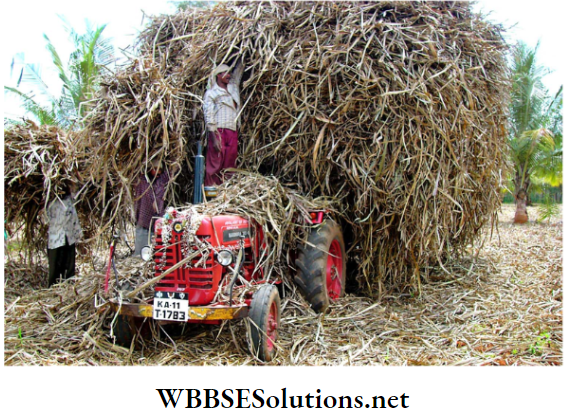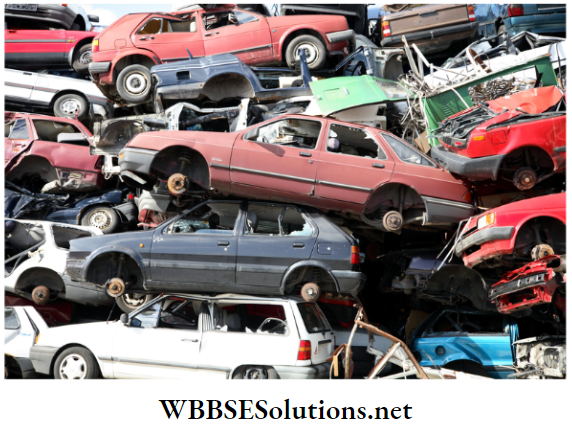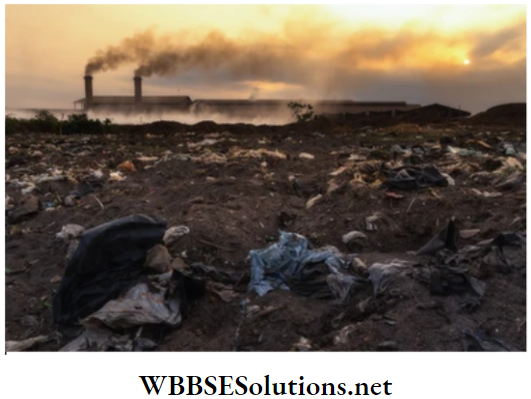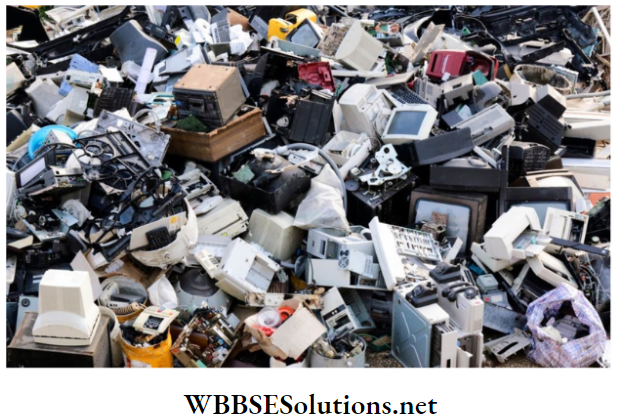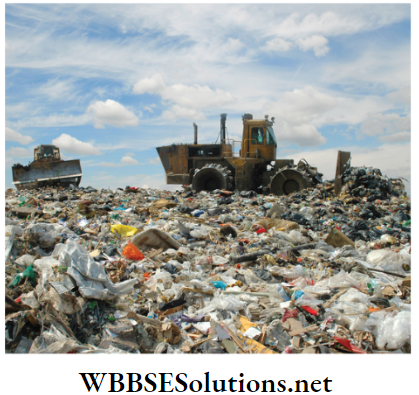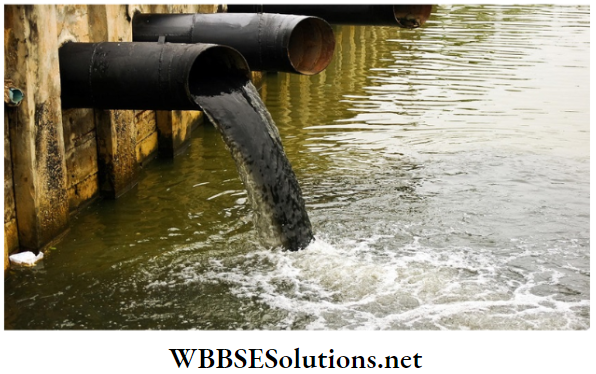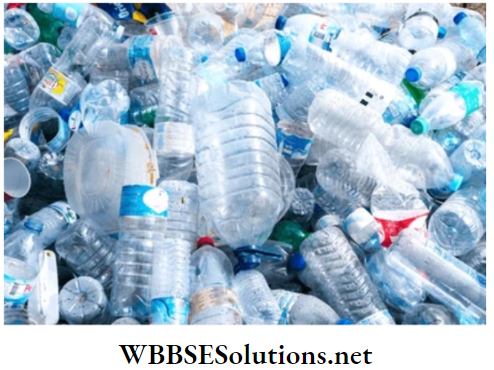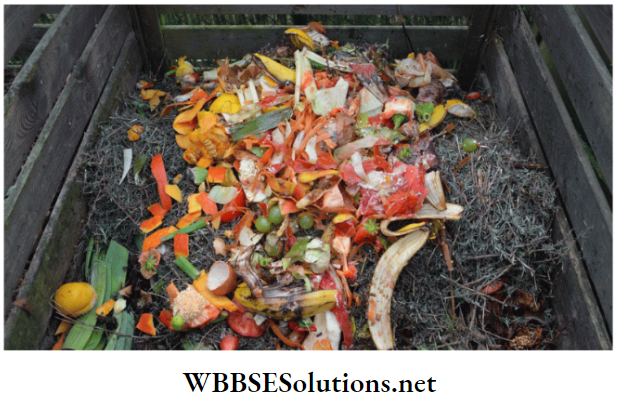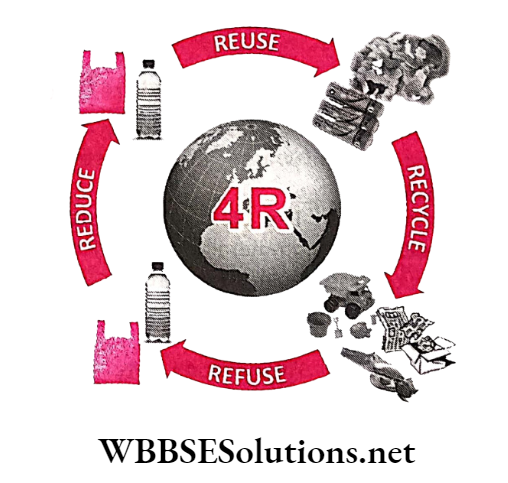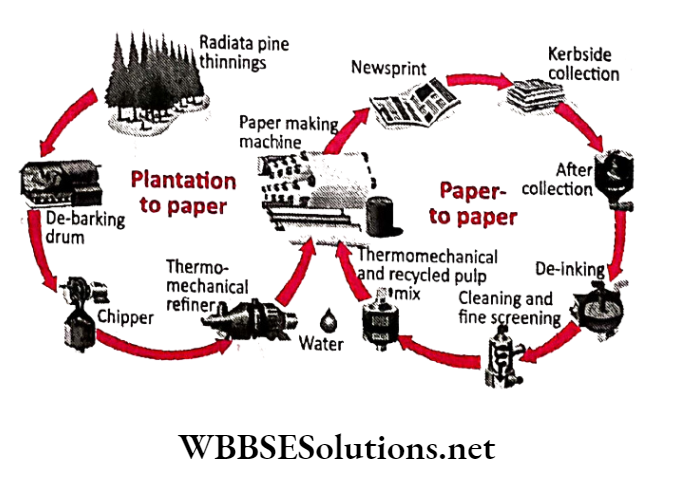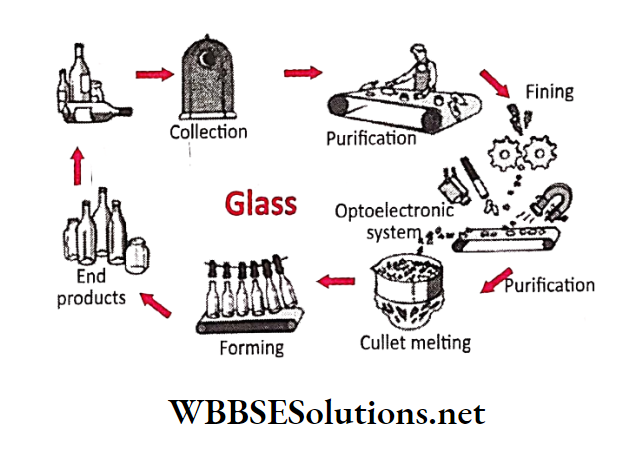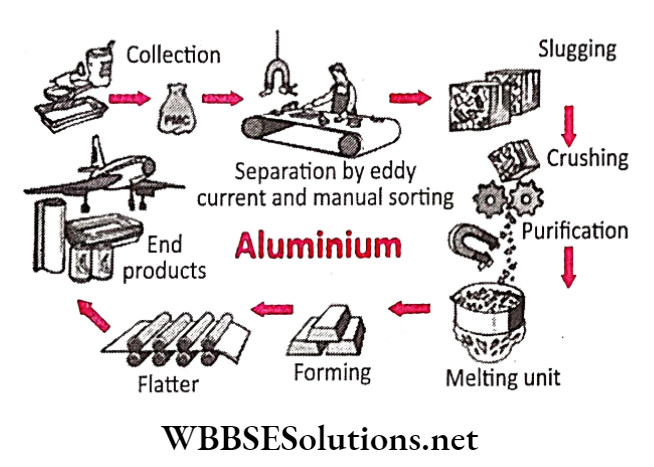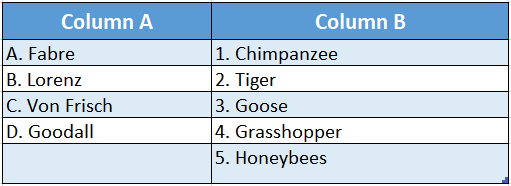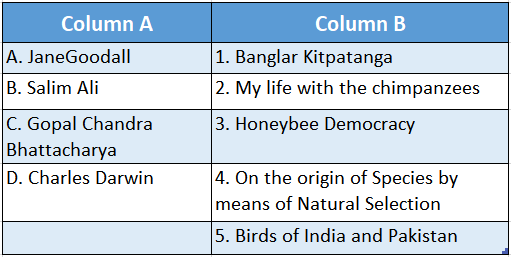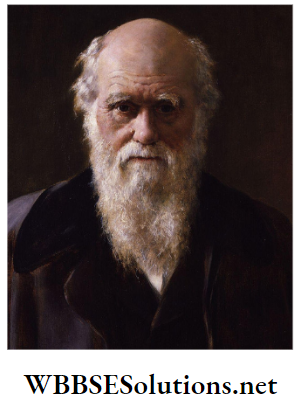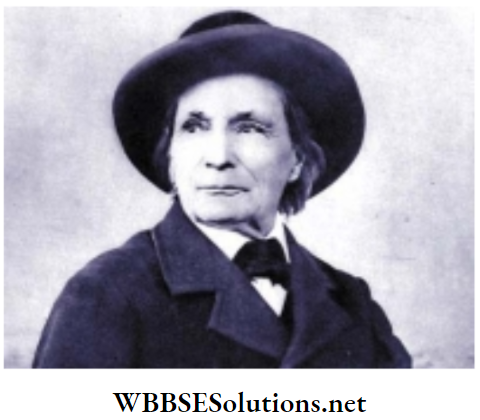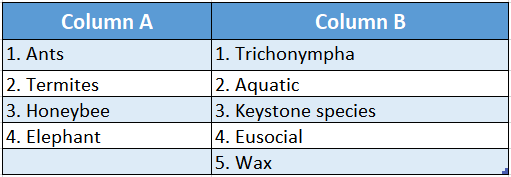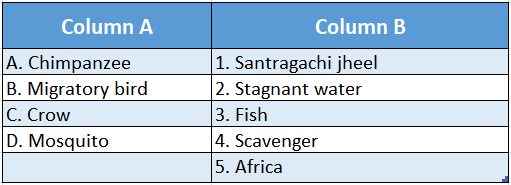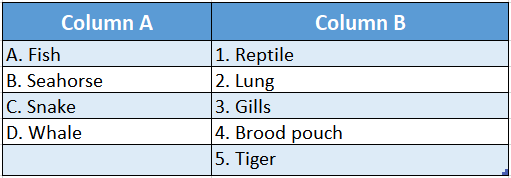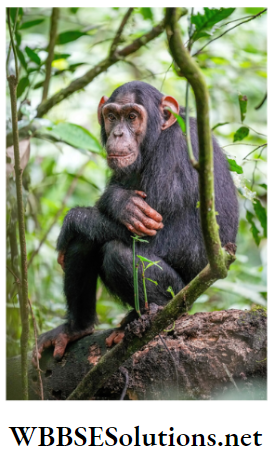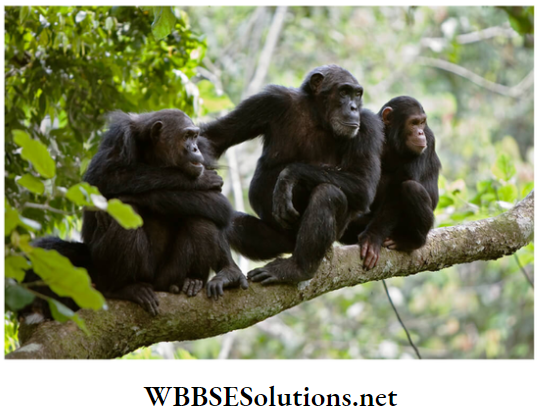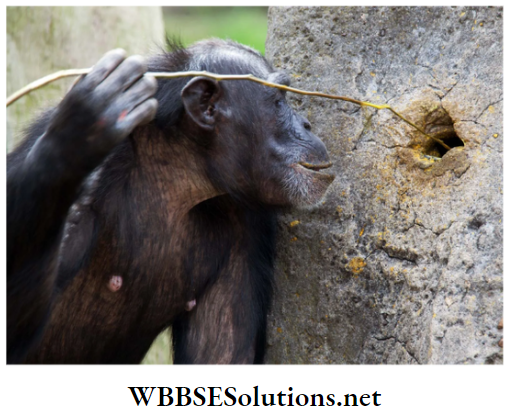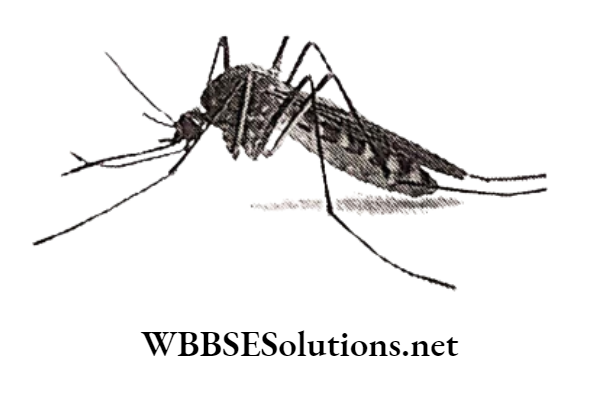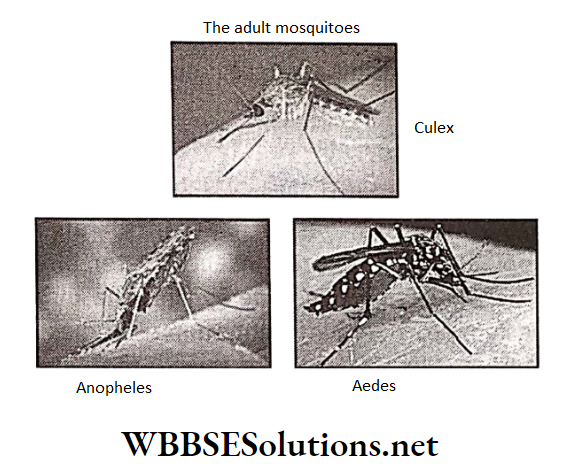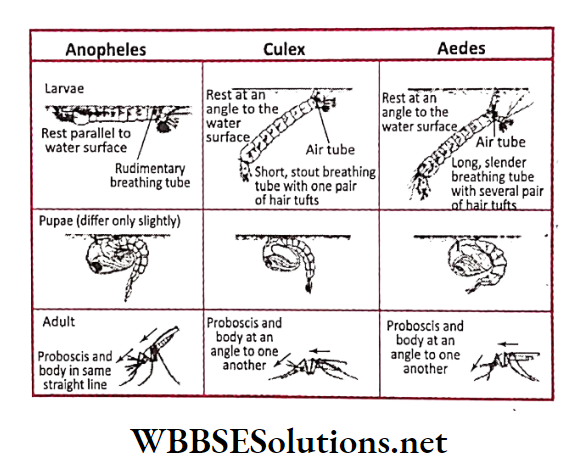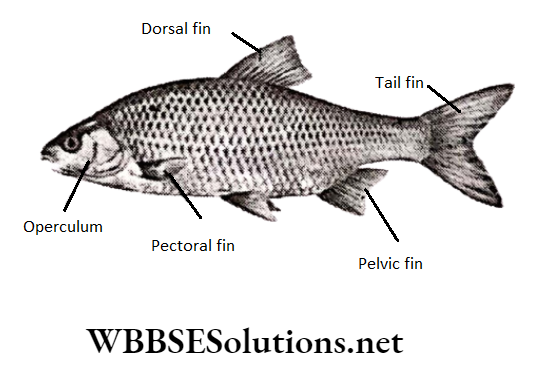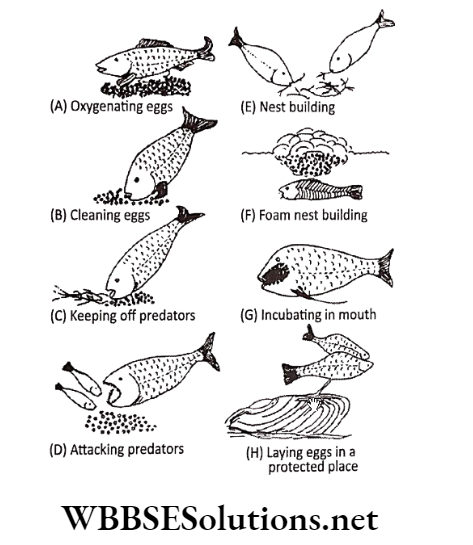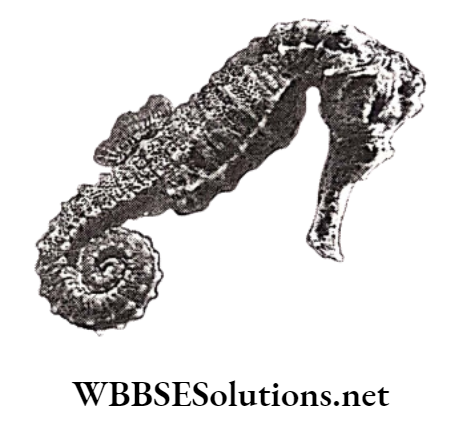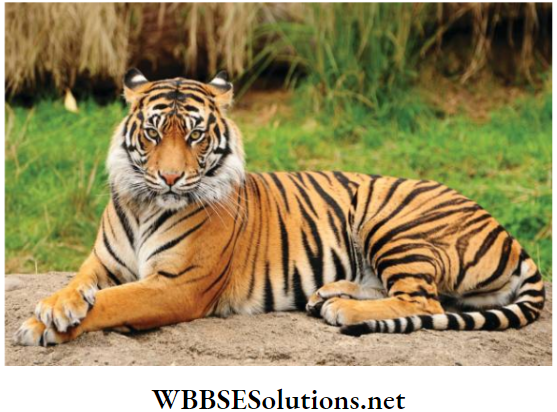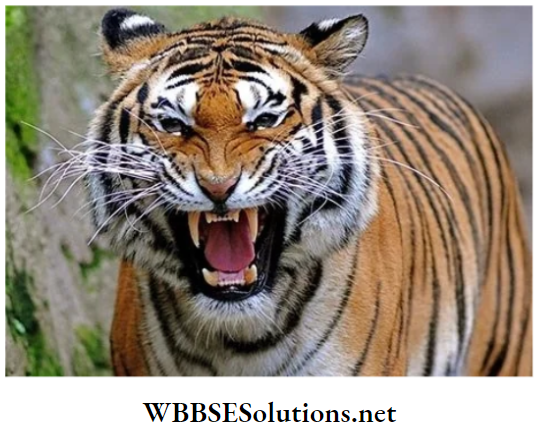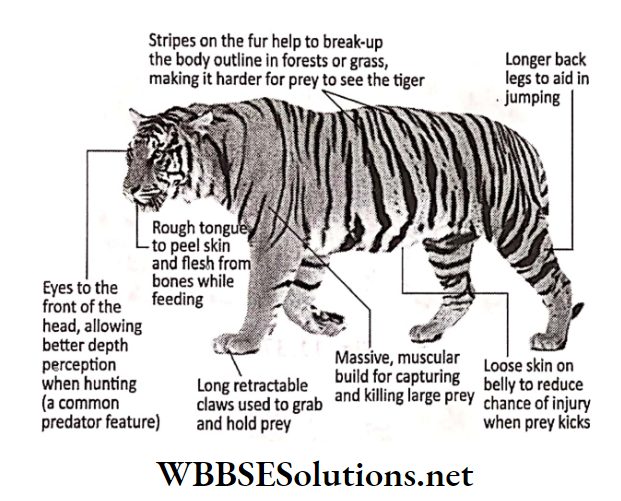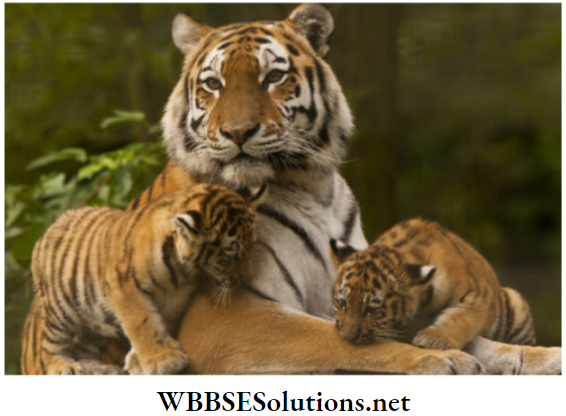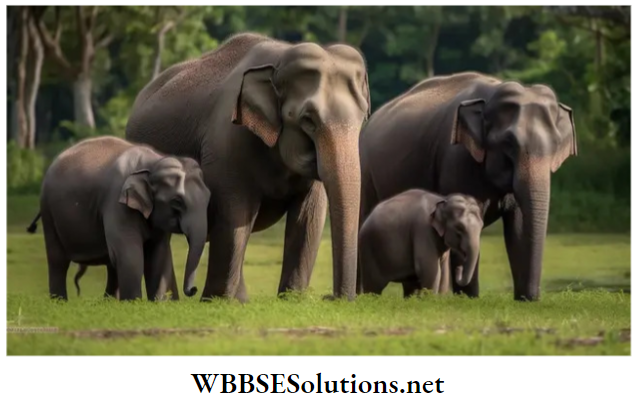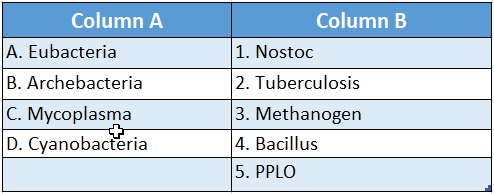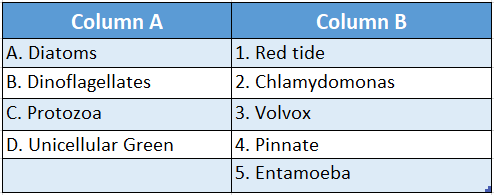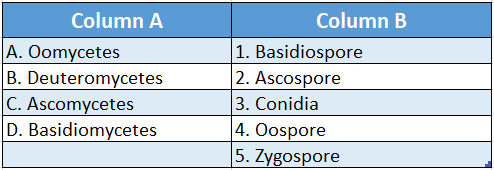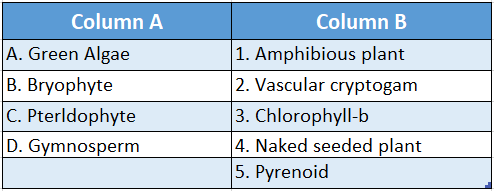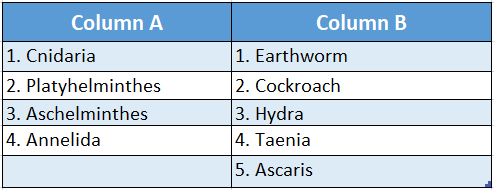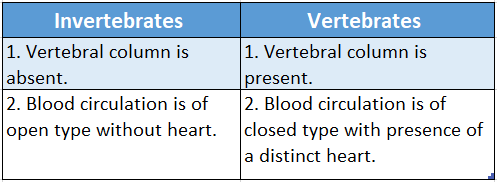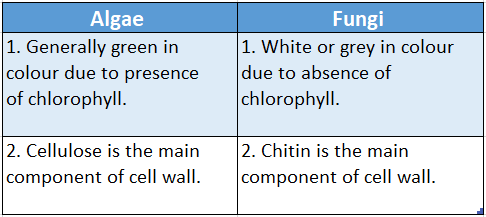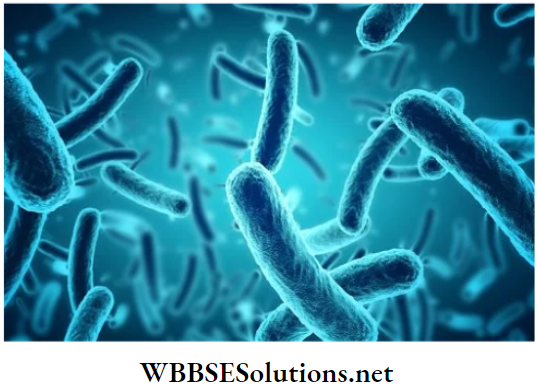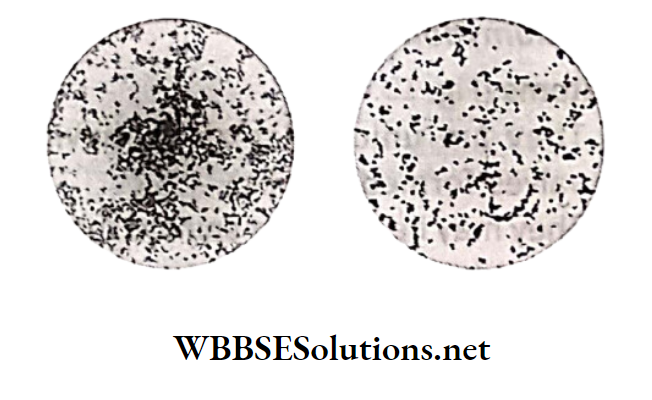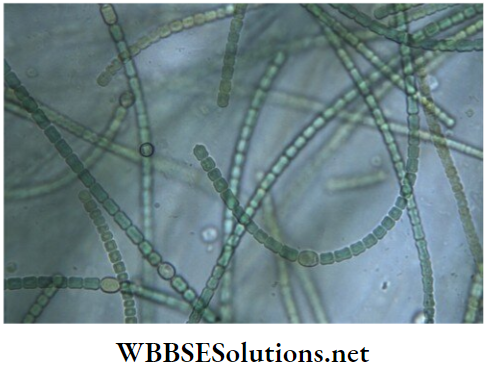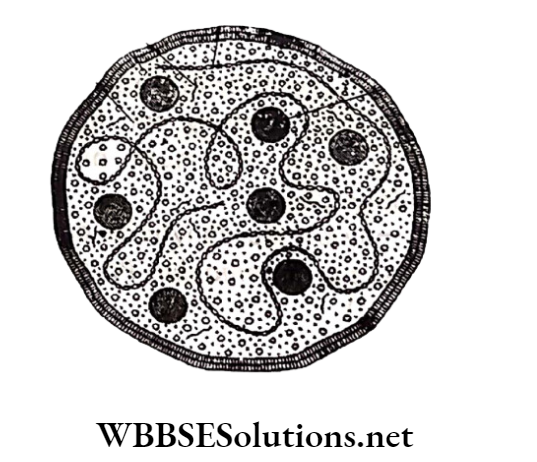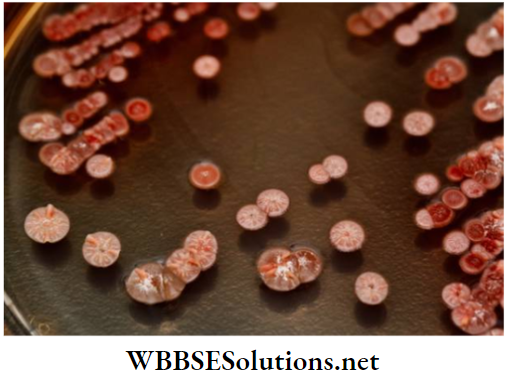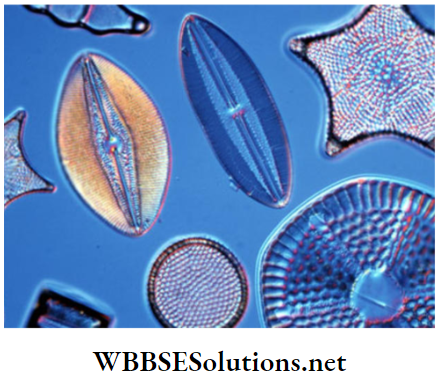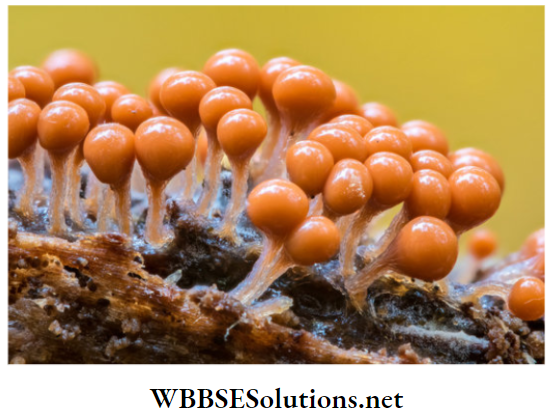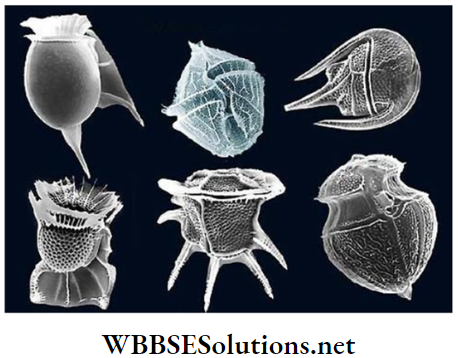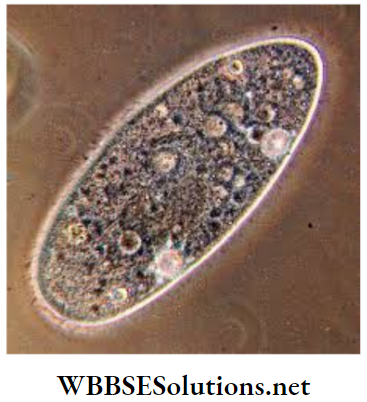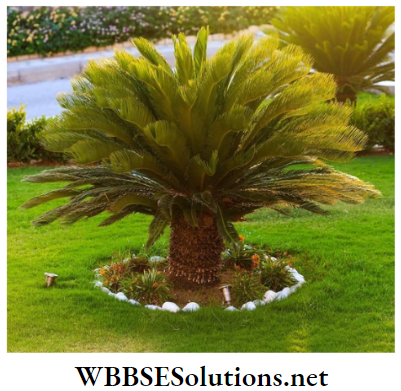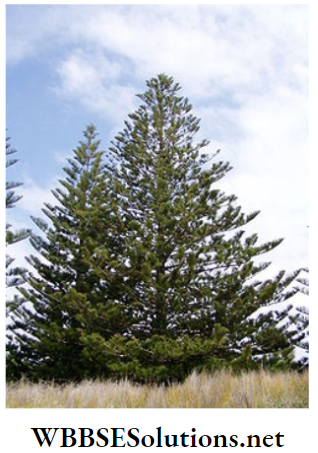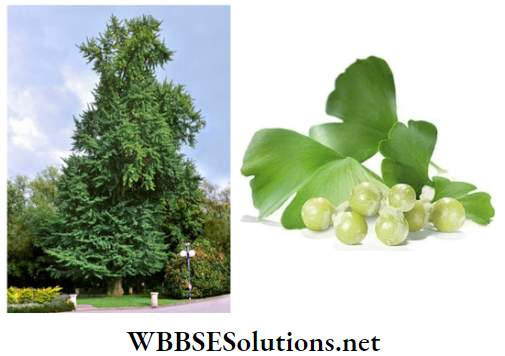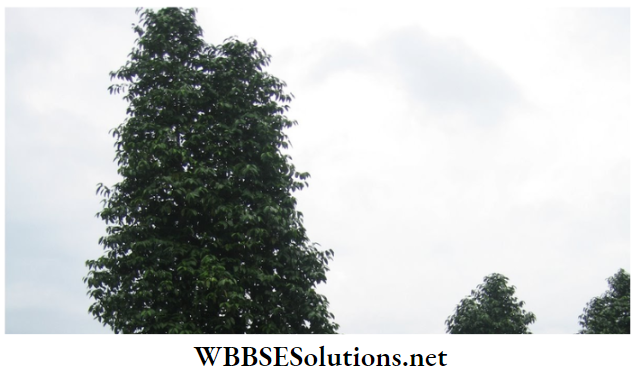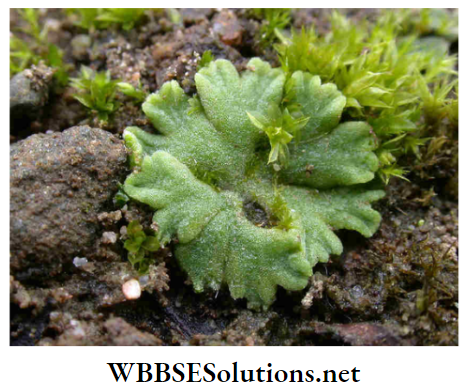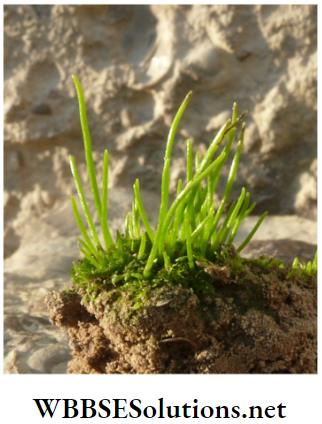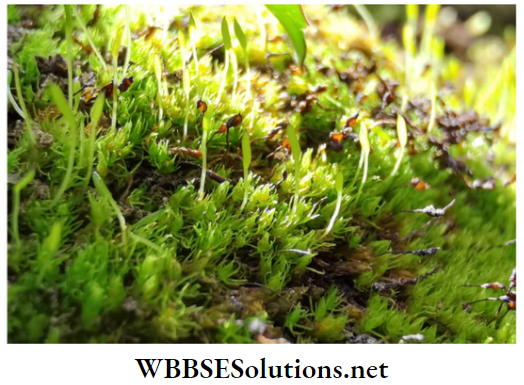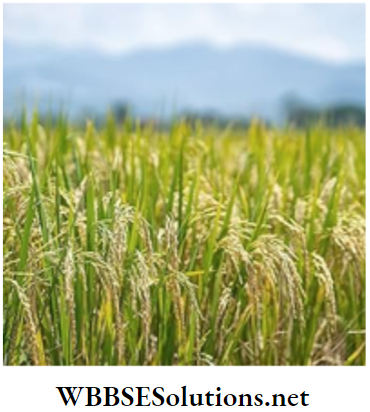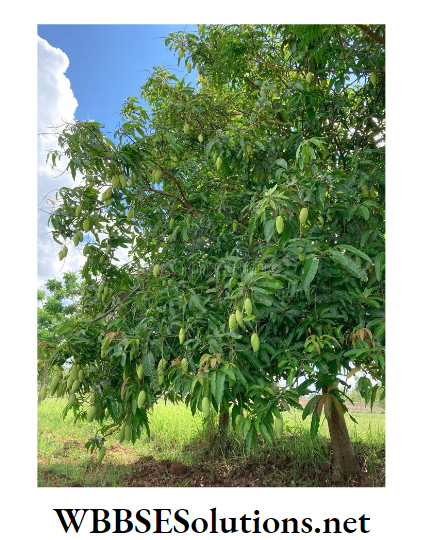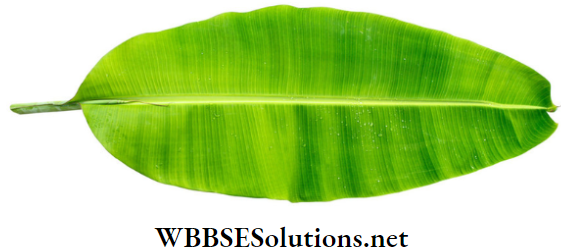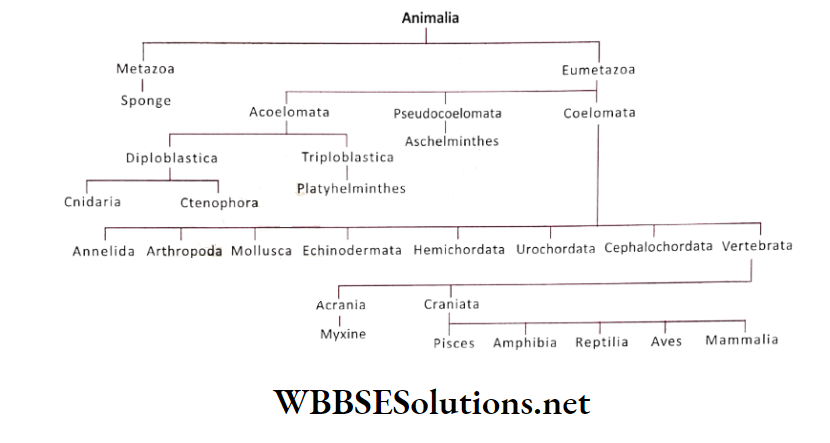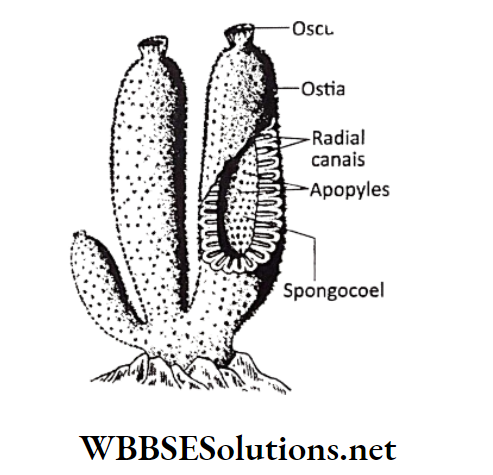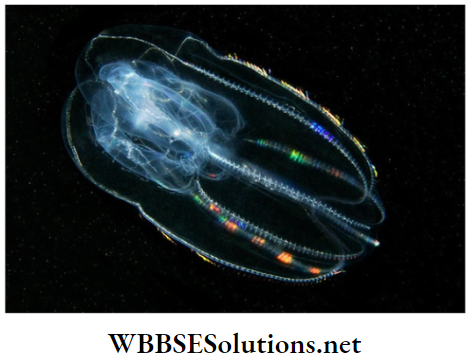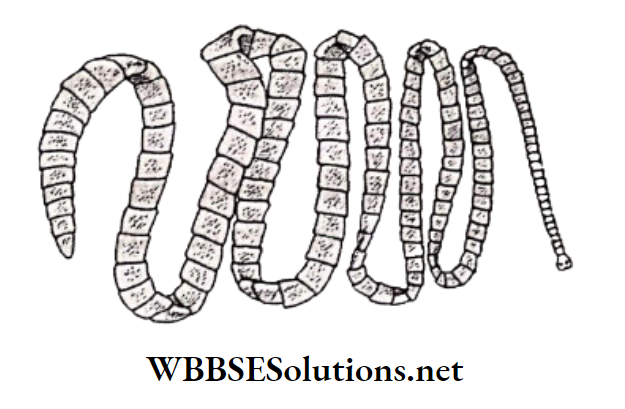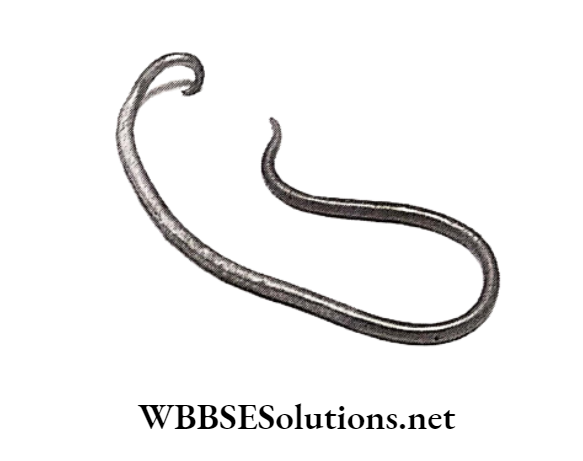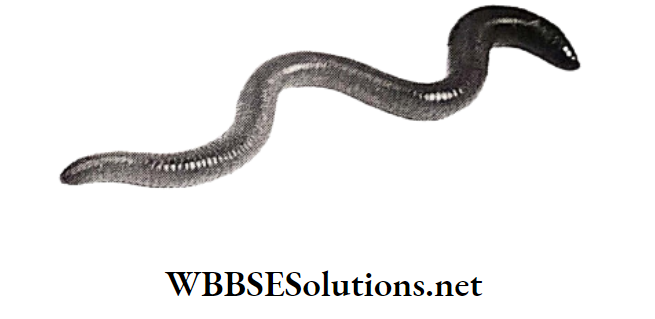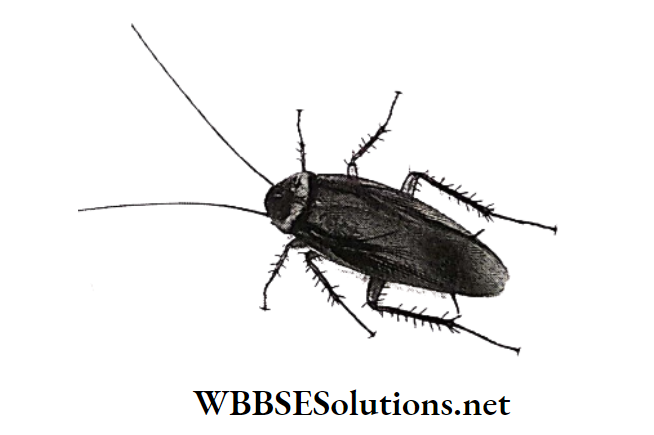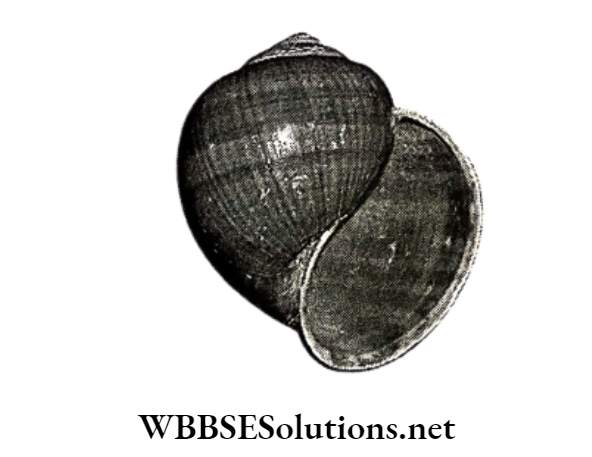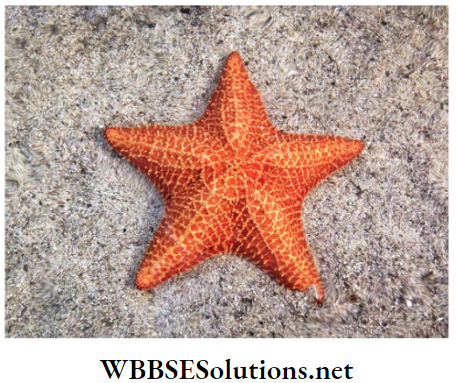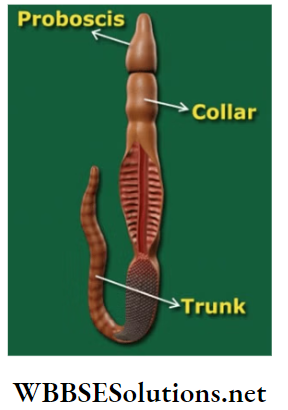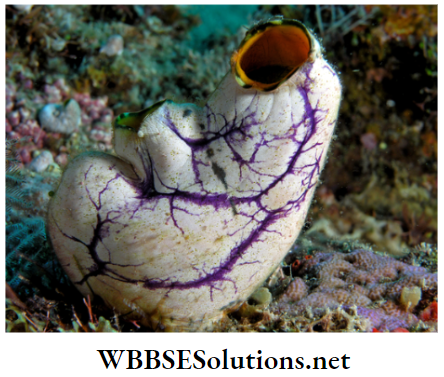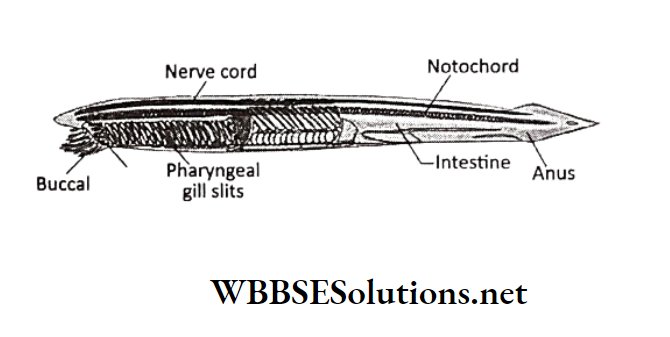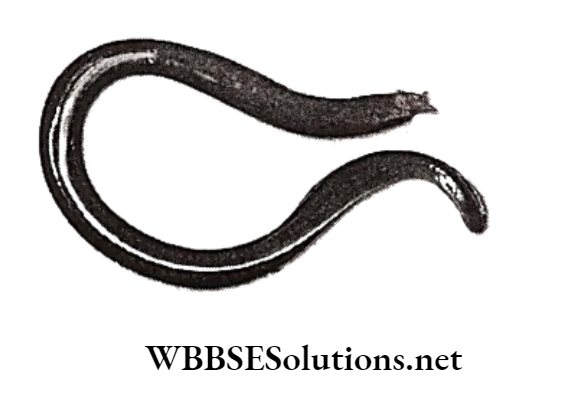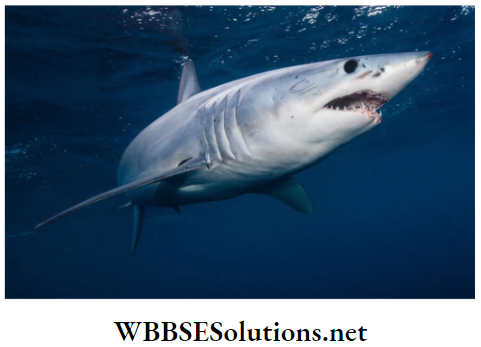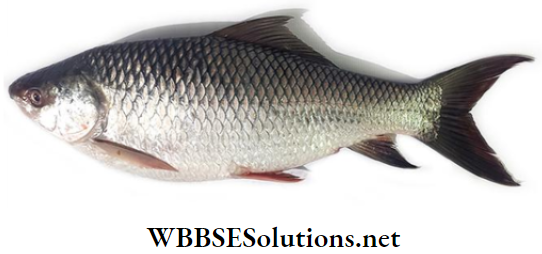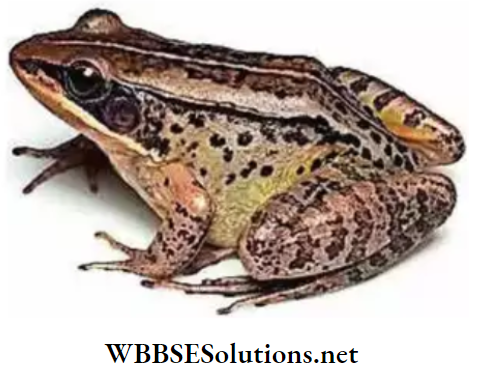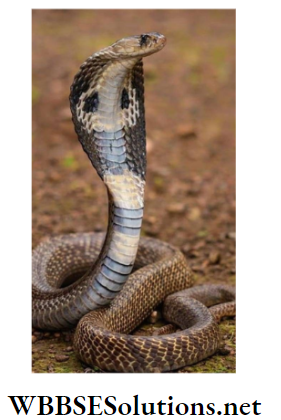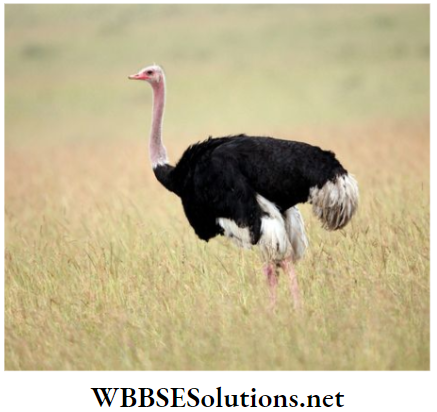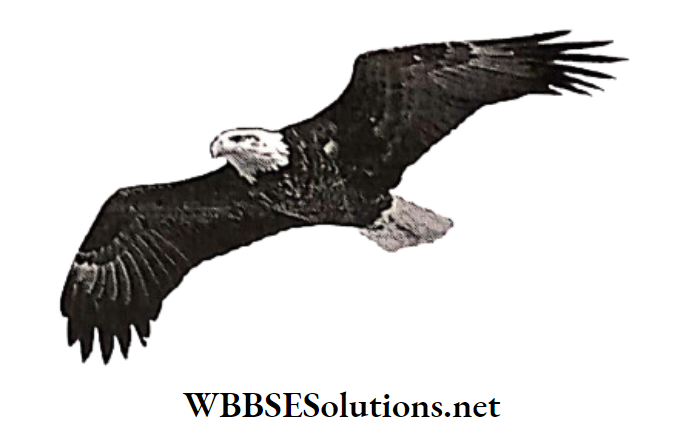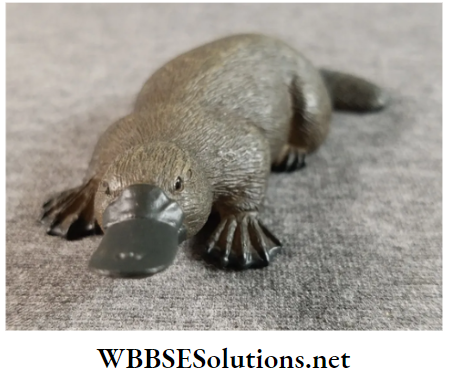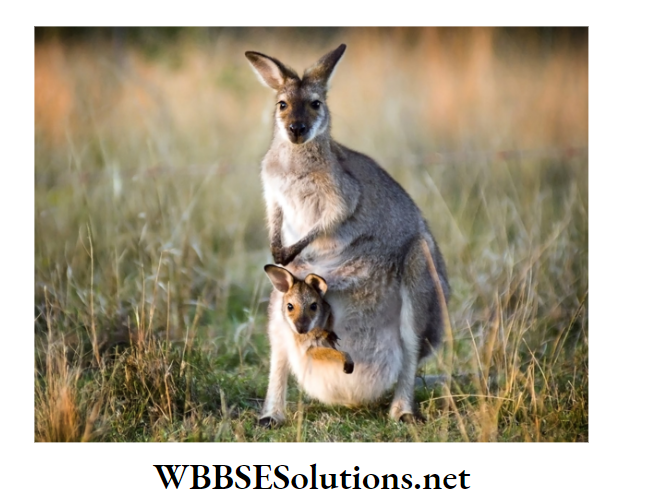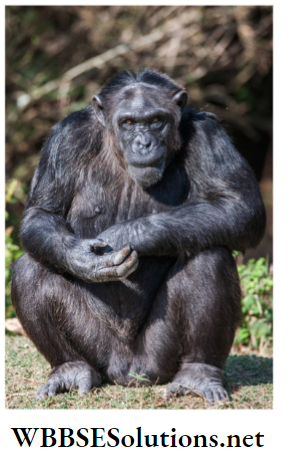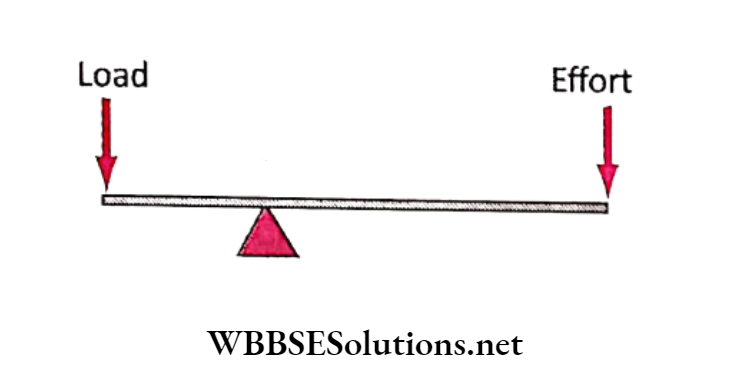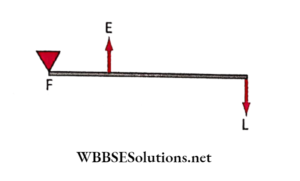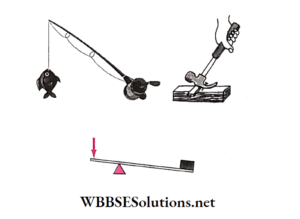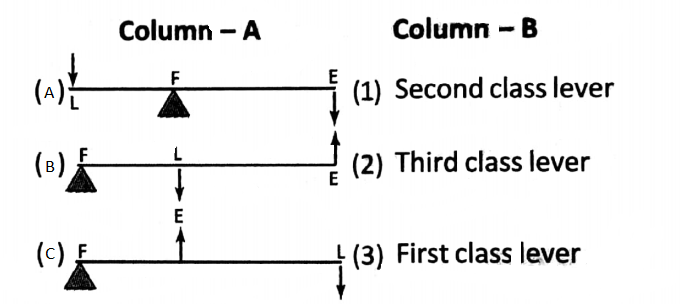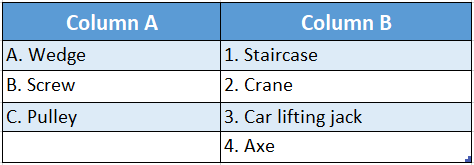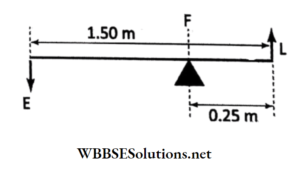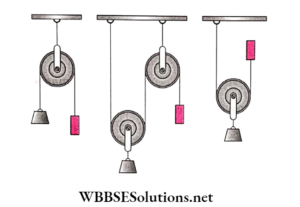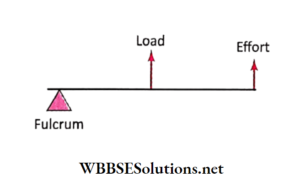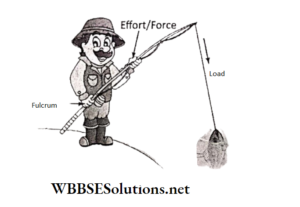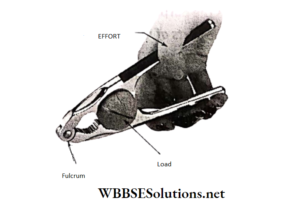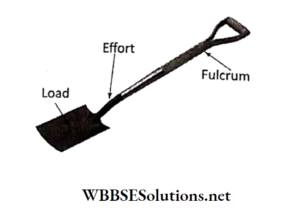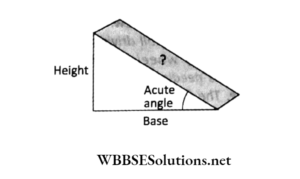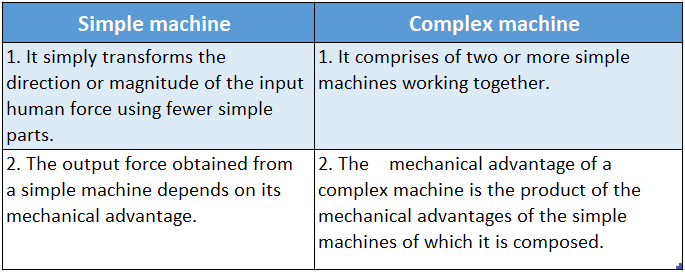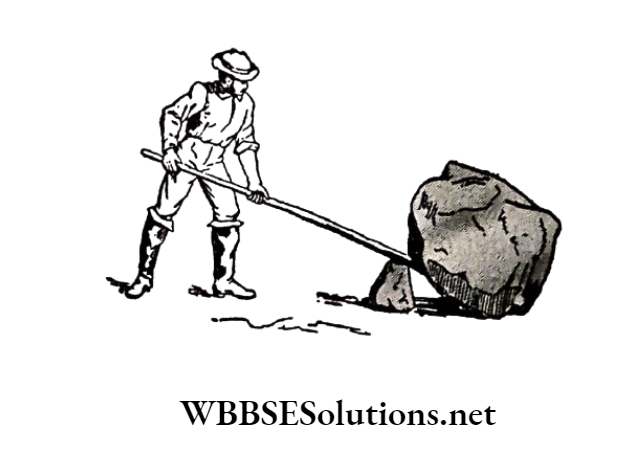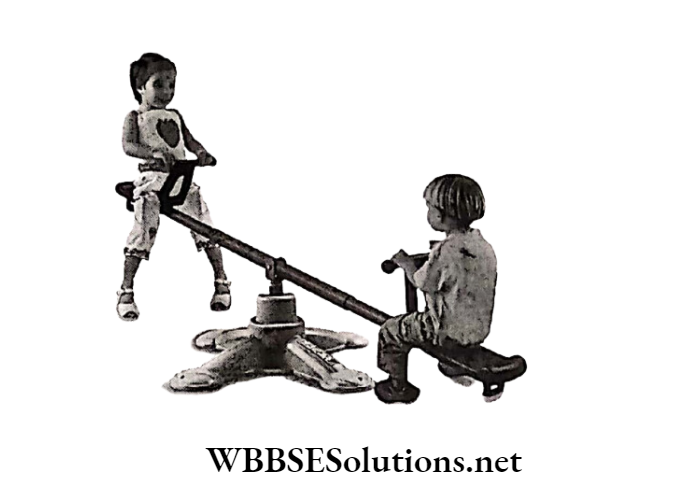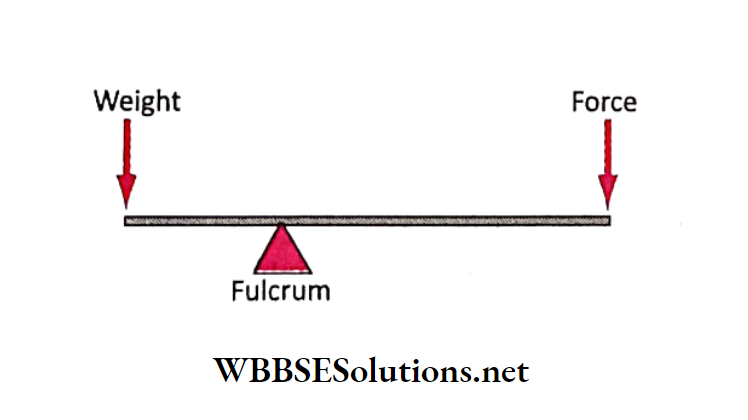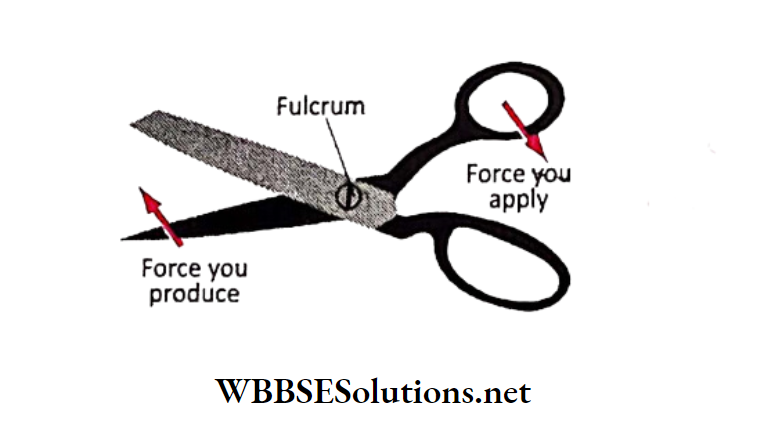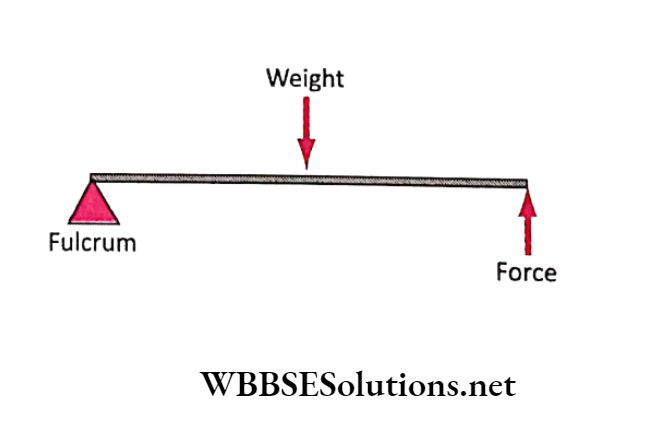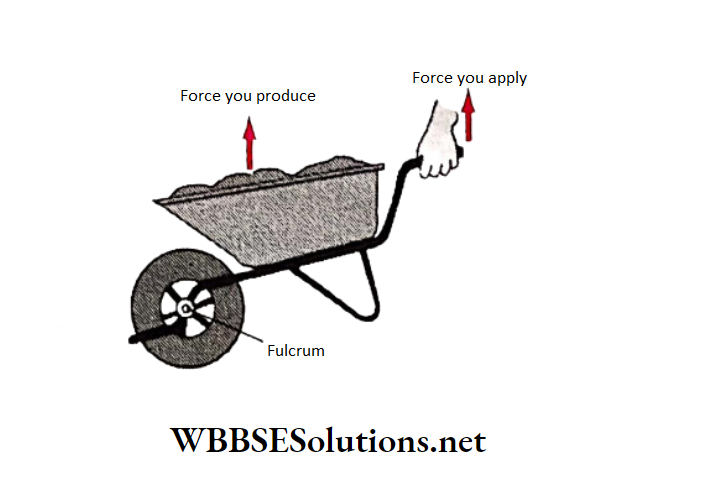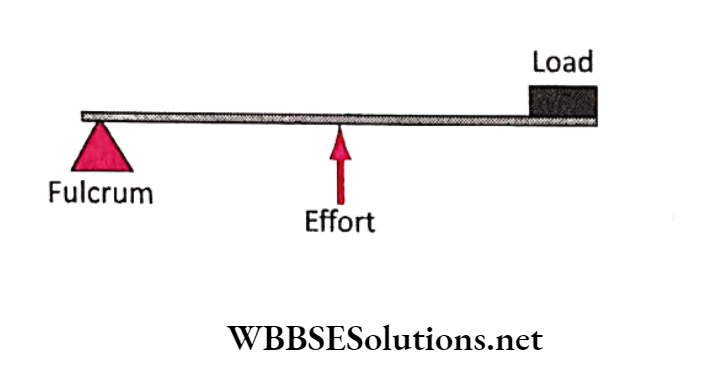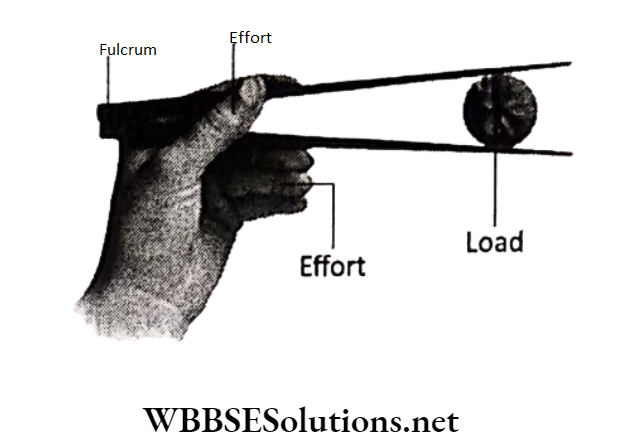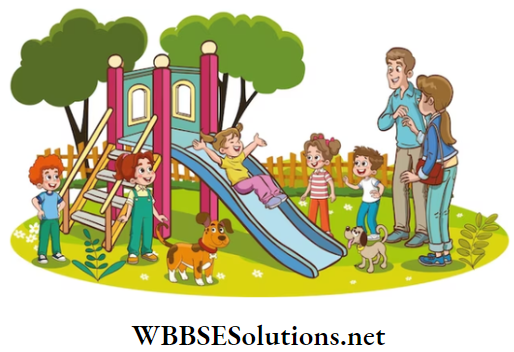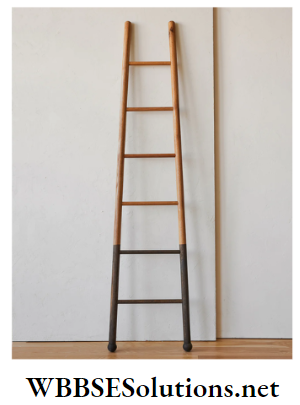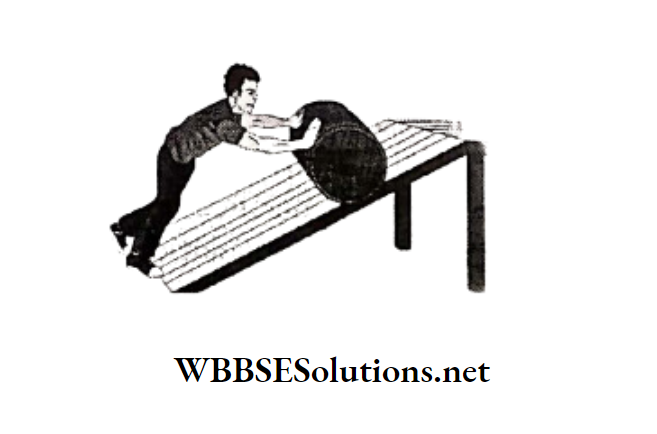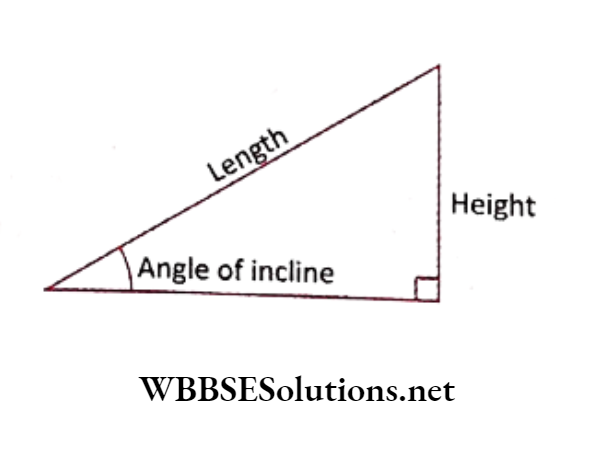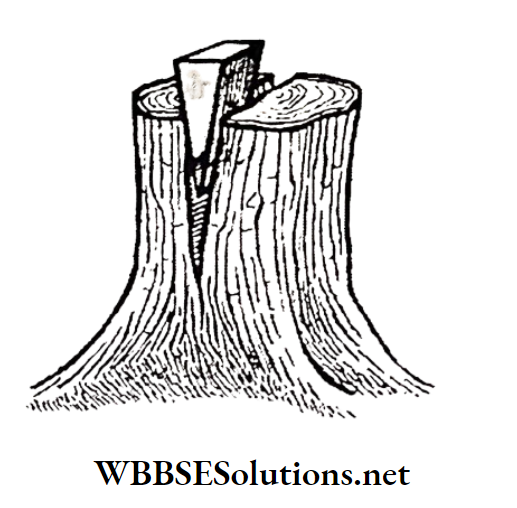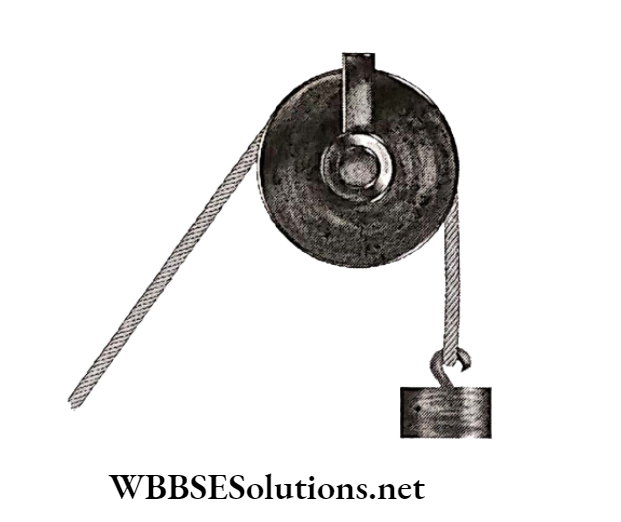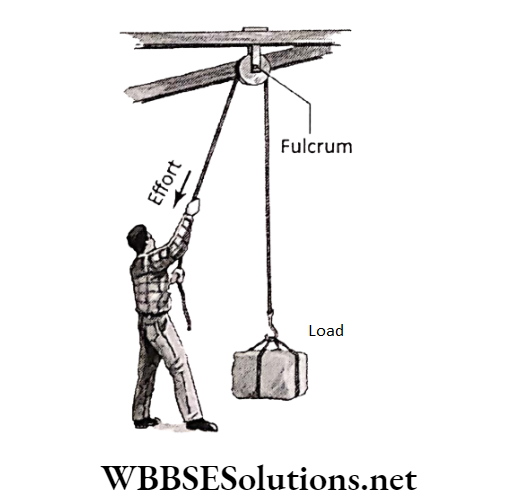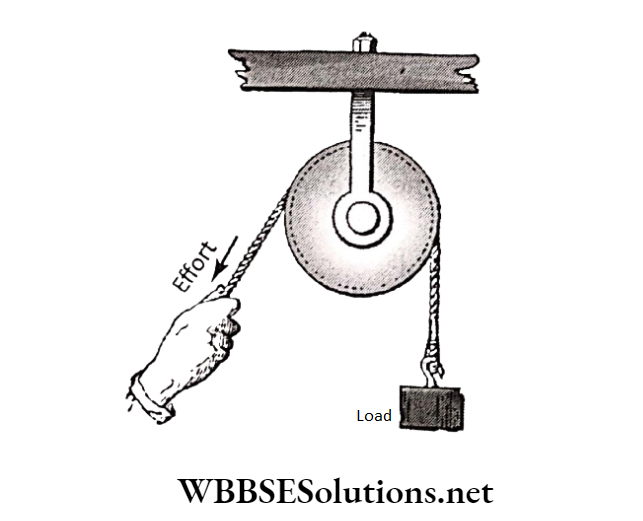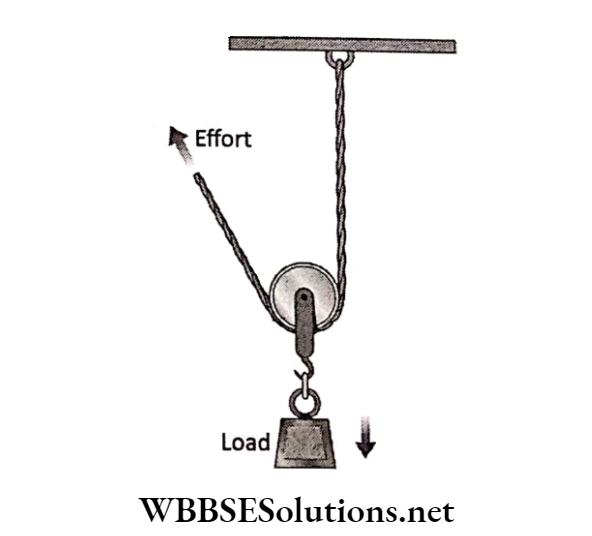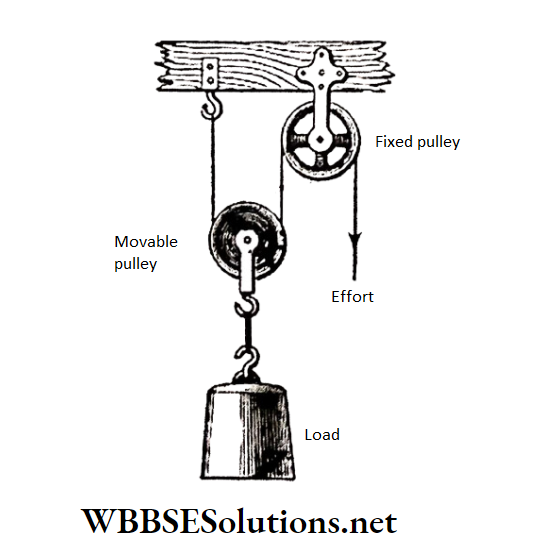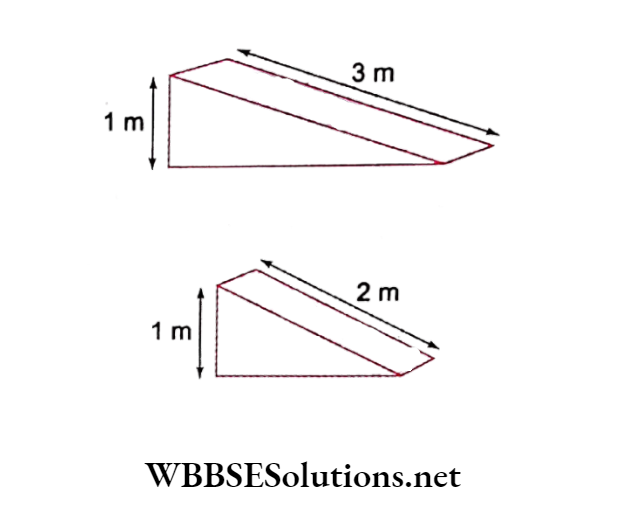Chapter 8 The Human Body Heart Review Questions Environment Review Questions MCQs
Question 1. An example of a system is
- Blood
- Nerve
- Cardiovascular
- Cell
Answer: 3. Cardiovascular
Question 2. The __________ is responsible for pumping blood throughout our body.
- Heart
- Kidney
- Lymph node
- Brain
Answer: 1. Heart
Read And Learn More: WBBSE Solutions For Class 6 School Science
Question 3. The heart is located in the middle of
- Blood vessels
- Lungs
- Organs
- Chest
Answer: 4. Chest
Question 4. The number of chambers in our heart is
- 2
- 3
- 4
- 5
Answer: 3. 4
Class 6 Science Question Answer WBBSE
Question 5. When the heart is situated on the right side of the chest, the condition is known as
- Dextrocardia
- Cardiac muscle
- Illness
- Pathology
Answer: 1. Dextrocardia
Question 6. The membrane surrounding the heart is known as
- Myocardium
- Pericardium
- Cardium
- Endocardium
Answer: 2. Pericardium
Question 7. The heart of a normal the rate of about adult human beats at the rate of about __________ per minute.
- 90
- 72
- 60
- 100
Answer: 2. 72
Question 8. The two top chambers of the heart are called the
- Atrium
- Ventricle
- Atria
- None of the above
Answer: 3. Atria
Question 9. Running down the middle of the heart is a thick wall of muscle called the
- Septum
- Membrane
- Both ‘a’ and ‘b’ correct
- None of the above
Answer: 1. Septum
Class 6 Science Question Answer WBBSE
Question 10. Mitral valves are
- Tricuspid
- Aortic
- Semilunar
- Bicuspid
Answer: 4. Bicuapid
Question 11. The __________ side of your heart sends oxygen-rich blood out to the body.
- Right
- Anterior
- Left
- Posterior
Answer: 3. Left
Question 12. The heart receives blood from the upper body through
- Superior vena cava
- Inferior vena cava
- Arteries
- Veins
Answer: 1. Superior vena cava
Question 13. Sino-atrial node is situated in the
- Left ventricle
- Left atrium
- Right ventricle
- Right atrium
Answer: 4. Right atrium
Question 14. Arteriosclerosis means the arteries become thickened and are no longer properly
- Dependable
- Flexible
- Reliable
- Controllable
Answer: 2. Flexible
Question 15. A blood clot or other blockage cuts blood flow to a part of the heart and causes
- Anaemia
- Hemorrhage
- Heart attack
- All the above
Answer: 3. Heart attack
Class 6 Science Question Answer WBBSE
Question 16. A bicuspid valve is present in
- Left atrium
- Right atrium
- Aorta
- Sinus venous
Anawer: 1. left atrium
Question 17. In between arterioles and venules there lies
- Aorta
- Heart
- Superior vena cava
- Capillaries
Answer: 4. Capillaries
Question 18. Relaxation of the heart is termed as
- Polystole
- Systole
- Diastole
- Tryastole
Answer: 3. Diastole
Chapter 8 The Human Body Heaet Fill In The Blanks
Question 1. An __________ is an organization of several different kinds of tissues so arranged that together they can perform a special function.
Answer: Organ
Question 2. The circulatory system consists of the heart __________, blood vessels, arteries, and veins.
Answer: Blood
Question 3. Your heart beats around 100000 times a __________.
Answer: Day
Class 6 Science Question Answer WBBSE
Question 4. The __________ is responsible for pumping blood throughout our body.
Answer: Heart
Question 5 Heart is made up of __________ muscles.
Answer: Cardiac
Question 6. In 99% of the cases, the heart is located the on __________ side of the chest.
Answer: Left
Question 7. __________ fluid prevents friction between the pericardium and the heart.
Answer: Pericardial
Question 8. The heart wall consists of the myocardium and the __________ endocardium.
Answer: Epicardium
Question 9. The __________ side of your heart receives blood from the body and pumps it to the lungs.
Answer: Right
Question 10. The heart of a normal adult human beats at the rate of about __________ per minute.
Answer: 72
Question 11. The __________ are the chambers that fill with the blood returning to the heart from the body and lungs.
Answer: Atria
Question 12. The two chambers on the bottom are called the __________
Answer: Ventricles
Question 13. Heart valves all work to keep the blood flowing __________
Answer: Forward
Question 14. The movement of the blood through the heart and around the body is called __________.
Answer: Circulation
Question 15. A healthy heart makes a __________ sound with each beat.
Answer: Lub-Dub
Question 16. From the right atrium, the blood descends into the __________ right ventricle through the, valve.
Answer: Tricuspid
Class 6 WBBSE Science Question Answer
Question 17. __________ is an irregular or abnormal heartbeat.
Answer: Arrhythmia
Question 18. __________ Heart disease is a type of birth defect that causes problems with the heart at birth.
Answer: Congenital
Chapter 8 The Human Body Heart Identify As True Or False
Question 1. Organs are more complex units than tissues.
Answer: True
Question 2. The job of the circulatory system is to break down and absorb food.
Answer: False
Question 3. The kidneys are responsible for pumping blood throughout our body.
Answer: False
Question 4. Red blood cells carry oxygen around the body.
Answer: True
Question 5. It takes about 20 seconds for a red blood cell to circle the whole body.
Answer: True
Question 6. The heart is located a little to the left of the middle of your chest, and it is about the size of your fist.
Answer: True
Question 7. The heart is surrounded by a membrane called the myocardium.
Answer: False
Question 8. The heart of a normal adult human beats at the rate of about 72 per minute.
Answer: True
Class 6 WBBSE Science Question Answer
Question 9. The heart has two left ventricles and a right ventricle.
Answer: False
Question 10. Two of the heart valves are the bicuspid valve and the mitral valve.
Answer: False
Question 11. The movement of the blood through the heart and around the body is called circulation.
Answer: True
Question 12. A healthy heart makes a lub-dub sound with each beat.
Answer: True
Question 13. The human circulatory system is really a two-part system whose purpose is to bring oxygen-bearing blood to all the tissues of the body.
Answer: True
Question 14. From the right atrium, the blood descends into the right ventricle through the tricuspid valve.
Answer: True
Question 15. People with angina feel pain in the chest which means the brain isn’t getting enough blood.
Answer: False
Chapter 8 The Human Body Heart Match The Columns
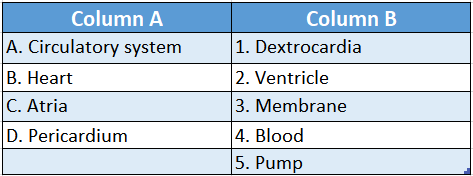
Answer: A-4,B-5,C-2,D3
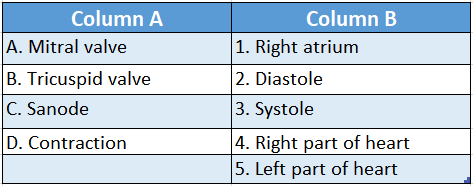
Answer: A-5,B-4,C-1,D-3
Chapter 8 The Human Body Heart Answer In Words Or A Sentence
Question 1. What are the functions of the circulatory system? The job of the circulatory system is to
Answer: move blood, nutrients, oxygen, carbon dioxide, and hormones, around the body.
Question 2. State the function of the heart in our body.
Answer: The heart is responsible for pumping blood throughout our body.
Question 3. What type of muscle makes the heart?
Answer: Cardiac Muscle.
Class 6 WBBSE Science Question Answer
Question 4. How many chambers are there in our hearts?
Answer: Four chambers.
Question 5. Name the middle layer of the heart wall.
Answer: It is the myocardium.
Question 6. Name the valve present between the right atrium 20h and the right ventricle.
Answer: Tricuspid valve.
Question 7. Write the full form of the AV node.
Answer: atrioventricular node.
Question 8. What are systole and diastole ?
Answer: The term systole refers to contraction and the term diastole refers to relaxation.
Question 9. What is arteriosclerosis?
Answer: It is a diseased condition caused by the hardening of arteries.
Question 10. What is a heart attack?
Answer: It is an abnormal condition when a blood clot or other blockage cuts blood flow to a part of the heart.
Chapter 8 The Human Body Heart Short Answer Type Questions
Question 1. Write the functions and components of the circulatory system.
Answer: The job of the circulatory system is to move blood, nutrients, oxygen, carbon dioxide, and hormones around the body. It consists of the heart, blood, and blood vessels, arteries-veins and capillaries.
Question 2. State the location of the heart in our body.
Answer: The heart is located a little to the left of the middle of our chest and it is about the size of our fist. It sits behind our ribs on the left side of our body just next to our sternum.
Question 3. What are the four chambers of our heart?
Answer: The human heart is divided into 4 chambers or parts: the two ventricles (lower parts) and two atria (upper parts).
WBBSE Class 6 Science Question Answer
Question 4. What is dextrocardia?
Answer: Normally, the heart is located on the left side of the chest. However, in rare cases, the heart can also be found on the right side of the chest; this condition is known as dextrocardia.
Question 5. What are the components of the heart wall?
Answer: The heart wall consists of the epicardium (outer layer), the myocardium (middle layer comprised of cardiac muscle tissue), and the endocardium (inner lining of the myocardium that covers the heart valves).
Question 6. What are heart sounds?
Answer: A healthy heart makes a lub-dub sound with each beat. This sound comes from the valves shutting on the blood inside the heart.
The first sound (the lub) happens when the mitral and tricuspid valves close.
The next sound (the dub) happens when the aortic and pulmonary valves close after the blood has been squeezed out of the heart.
Question 7. What is a pulse?
Answer: A pulse represents the tactile arterial palpation of the heartbeat by trained fingertips.
The pulse may be palpated in any place that allows an artery to be compressed against a bone, such as at the neck (carotid artery), on the inside of the elbow (brachial artery), at the wrist (radial artery), etc.
Question 8. What is heart muscle?
Answer: Cardiac muscle (heart muscle) is an involuntary, striated muscle that is found in the walls and histological foundation of the heart, specifically the myocardium.
Question 9. What is a systemic loop of circulation?
Answer: In the systemic loop, the blood circulates into the body’s systems, bringing oxygen to all its organs, structures, and tissues and collecting carbon dioxide waste.
Question 10. What is a pulmonary loop of circulation?
Answer: In the pulmonary loop, the blood circulates to and from the lungs, to release the carbon dioxide and pick up new oxygen.
Question 11. What is atherosclerosis?
Answer: It is a build-up of cholesterol and fat that makes the arteries narrower so less blood can flow through. Those build-ups are called plaque.
Question 12. What is arrhythmia?
Answer: Arrhythmia is an irregular or abnormal heartbeat. This can be a slow heartbeat (bradycardia), a fast heartbeat (tachycardia), or an irregular heartbeat.
Question 13. Your friend suffers from breathing trouble while playing and therefore, prefers to
Answer: Sit idle. What may be his disease in your opinion He may be suffering from either congenital heart disease or asthma.
Chapter 8 The Human Body Heart Long Answer Type Questions
Question 1. Write about the electrical conduction system of the heart.
Answer:
Conduction system:
An electrical impulse travels through the heart and initiates contractions in the chambers.
The heart’s “spark plug” is an area of specialized heart tissue called the sino- atrial node (SA node), which is located in the right atrium.
Each time the SA node “fires”, an electrical impulse is generated, that travels through the right and left atria, signaling these chambers to contract and pump blood into the ventricles.
WBBSE Class 6 Science Question Answer
Isidore to The impulse then travels into another area of specialized heart tissue called the atrioventricular node (AV node), which is located between the atria and the ventricles.
The 2 electrical impulses are conducted through the AVA node and wire-like pathways (Bundle of His and d Purkinje fibers) to the ventricles, signaling the ventricles to contract and pump blood into the lungs and throughout the body.
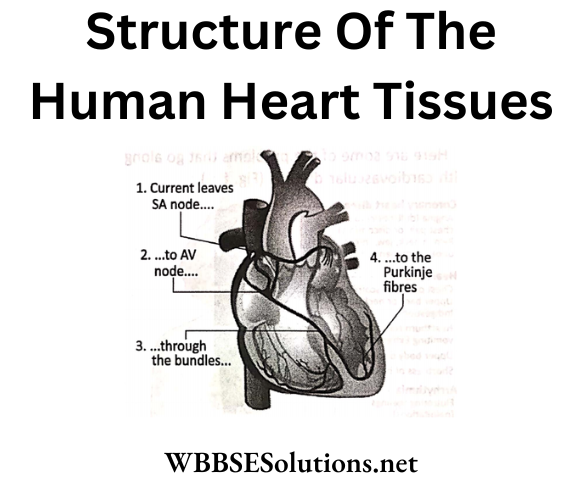
As the SA node maintains the pace of the heartbeat, it is also known as a natural pacemaker. If it does not function, an artificial pacemaker has to be implanted.
The normal sequence of electrical activation of the chambers of the heart is called sinus rhythm. It occurs each time the heart beats, usually about 60 to 80 times every minute.
In a normal heartbeat, the atria contract simultaneously while the ventricles relax. Then, the ventricles relax, and the atria contract.
The term systole refers to contraction and the term diastole refers to relaxation. A heartbeat consists of the systole and diastole of the atria and the systole and diastole of the ventricles.
Problems of the Heart: You know how important your heart is, so it is no wonder people worry when they hear someone has heart problems.
Heart disease, also called cardiovascular disease, mainly affects older. people and means that there are problems with the heart and blood vessels.
You might know someone who has cardiovascular disease because several people in our society have some form of it.
This disease includes a variety of problems, including high blood pressure, hardening of the arteries, chest pain, heart attacks, and strokes.
Milanese te The heart is the center of the cardiovascular system. Through the body’s blood vessels, the d heart pumps blood to all of the body’s cells.
WBBSE Class 6 Science Question Answer
The blood carries oxygen, which the cells need. Cardiovascular disease is a group of problems that occur when the heart and blood vessels are not working the way they should.
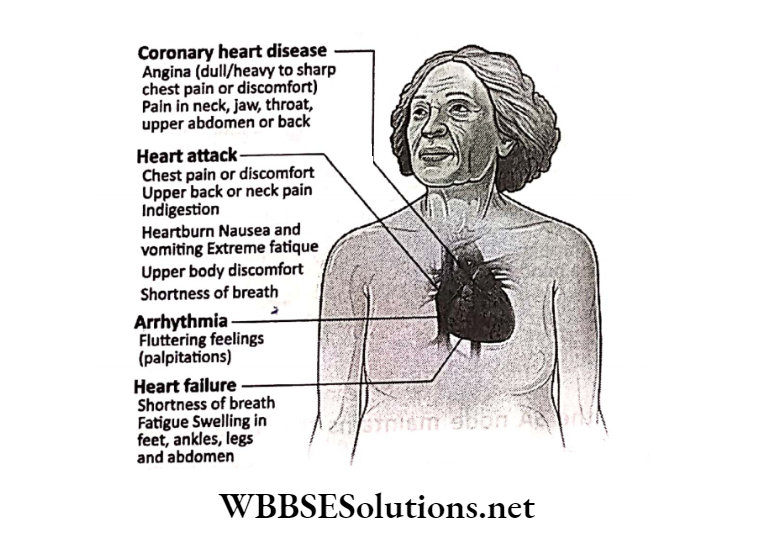
Here are some of the problems that go along with cardiovascular disease:
1. Arteriosclerosis:
Also called hardening of the arteries, arteriosclerosis means the arteries become thickened and are no longer flexible.
2. Atherosclerosis:
A buildup of cholesterol things a risk factor. Some of these risk factors a and fat which makes the arteries narrower, so less blood can flow through. Those buildups are called plaque.
3. Angina:
People with angina feel pain in the chest which means the heart muscle is not getting enough blood and oxygen.
4. Arrhythmia:
It is an irregular or abnormal er heartbeat. This can be a slow heartbeat en (bradycardia), a fast heartbeat (tachycardia), or an irregular heartbeat.
5. Heart attack:
When a blood clot or other blockage cuts blood flow to a part of the heart.
6. Ischemic heart disease:
A pathological condition of the heart muscle caused by lack of oxygen supply marked by pain and discomfort.
7. Heart valve disease:
It occurs when one or more of the four valves in the heart are not working properly. Heart valves help to ensure that the blood being pumped through the heart keeps flowing forward.
A disease of the heart valves (e.g., stenosis, mitral valve prolapse) makes it difficult for the heart to work efficiently.
WBBSE Class 6 Science Question Answer
8. Congenital heart disease:
It is a type of birth defect that causes problems with the heart at birth and occurs in about one out of every 100 live births.
Some of the most common types of congenital heart disease include atrial septal defects (ASD) and ventricular septal defects (VSD).
which occurs when the walls that separate the right and left chambers of the heart are not completely closed and consequently, there is a hole in the wall.
Babies born with congenital heart disease (ASD) may not have symptoms. When they grow up, adults may notice symptoms such as shortness of breath, heart palpitations, fatigue, swelling in the legs, feet, or abdomen, etc.
Symptoms of VSD include a bluish tinge to the skin, lips, and fingernails, along with poor feeding, poor weight gain, and fast breathing.
Heart disease is not contagious-we cannot catch it like we can the flu or a cold. Instead, certain things increase a person’s chances of getting cardiovascular disease.
Doctors call these people who can’t do anything about are like being older and having other people in the family who have had the same problems.
But people do have control over some risk factors smoking, having high blood pressure, being overweight, and not exercising can increase the risk of getting cardiovascular disease.
Question 2. State the importance of systemic and pulmonary loops of circulation.
Answer:
The circulation of blood:
The human circulatory system is really a two-part system whose purpose is to bring oxygen-bearing blood to all the tissues of the body.
When the heart contracts it pushes the blood out into two major loops or cycles.
In the systemic loop, the blood circulates into the body’s systems, bringing oxygen to all its organs, structures, and tissues and collecting carbon dioxide waste.
In the Pulmonary loop, the blood circulates to and from the lungs, to release the carbon dioxide and pick up new oxygen.
The systemic cycle is controlled by the left side of the heart, and the pulmonary cycle by the right side of the heart. Let’s look at what happens during each cycle.
The systemic loop begins when the oxygen-rich blood coming from the lungs enters the upper left chamber of the heart, the left atrium.
As the chamber fills, the blood flows down through the mitral valve into the relaxing left ventricle. When the ventricles contract during a heartbeat, the blood on the left side is forced into the aorta.
This largest artery of the body is an inch wide. The blood leaving the aorta brings oxygen to all the body’s cells through the network of ever-smaller arteries and capillaries.
The used blood from the body returns to the heart through the network of veins. All of the blood from the body is eventually collected into the two largest veins the superior vena cava.
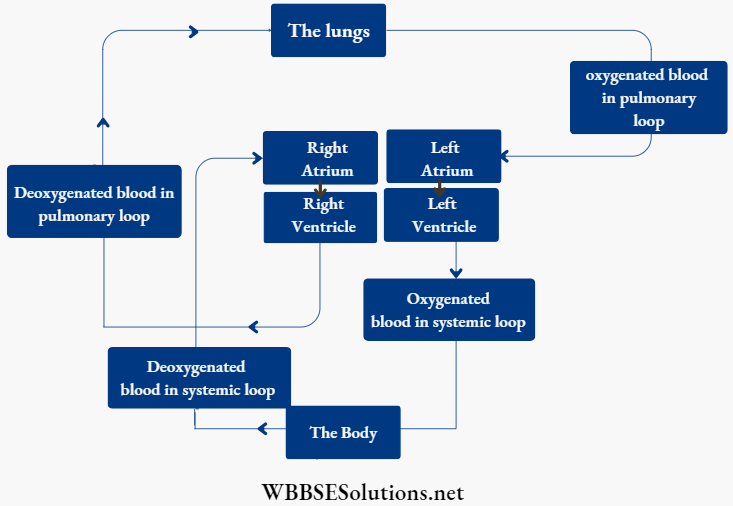
Which receives blood from the upper body, and the inferior vena cava, which receives blood from the lower body region. Both venae cavae empty the blood into the right atrium of the heart.
From here the blood begins its journey through the pulmonary cycle. From the right atrium, the blood descends into the right ventricle through the tricuspid valve.
When the ventricles contract, the blood in the right ventricle is pushed into the pulmonary artery that branches into two main parts one going to the left lung, and one to the right lung.
The fresh, oxygen-rich blood returns to the left atrium of the heart through the pulmonary veins.
Although the circulatory system is made up of two cycles, both happen at the same time. The contraction of the heart muscle starts in the two atria, which push the blood into the ventricles.
Then the walls of the ventricles squeeze together and force the blood out into the arteries: the aorta to the body and the pulmonary artery to the lungs.
Afterward, the heart muscle relaxes, allowing blood to flow in from the veins and fill the atria again.
In healthy people, the normal (resting) heart rate is about 72 beats per minute, but it can go much higher during strenuous exercise.
Scientists have estimated that it takes about 30 seconds for a given portion of the blood to complete the
Entire cycle:
from lungs to heart to body, back to the heart, and out to the lungs.
Conduction system:
An electrical impulse travels through the heart and initiates contractions in the chambers.
The heart’s “spark plug” is an area of specialized heart tissue called the sino- atrial node (SA node), which is located in the right atrium.
Each time the SA node “fires”, an electrical impulse is generated, that travels through the right and left atria, signaling these chambers to contract and pump blood into the ventricles.
Isidore to The impulse then travels into another area of specialized heart tissue called the atrioventricular node (AV node), which is located between the atria and the ventricles.
The 2 electrical impulses are conducted through the AVA node and wire-like pathways (Bundle of His and d Purkinje fibers) to the ventricles, signaling the ventricles to contract and pump blood into the lungs and throughout the body.

As the SA node maintains the pace of the heartbeat, it is also known as a natural pacemaker. If it does not function, an artificial pacemaker has to be implanted.
The normal sequence of electrical activation of the chambers of the heart is called sinus rhythm. It occurs each time the heart beats, usually about 60 to 80 times every minute.
In a normal heartbeat, the atria contract simultaneously while the ventricles relax. Then, the ventricles relax, and the atria contract.
The term systole refers to contraction and the term diastole refers to relaxation. A heartbeat consists of the systole and diastole of the atria and the systole and diastole of the ventricles.
Problems of the Heart: You know how important your heart is, so it is no wonder people worry when they hear someone has heart problems.
Heart disease, also called cardiovascular disease, mainly affects older. people and means that there are problems with the heart and blood vessels.
You might know someone who has cardiovascular disease because several people in our society have some form of it.
This disease includes a variety of problems, including high blood pressure, hardening of the arteries, chest pain, heart attacks, and strokes.
Milanese te The heart is the center of the cardiovascular system. Through the body’s blood vessels, the d heart pumps blood to all of the body’s cells.
The blood carries oxygen, which the cells need. A cardiovascular disease is a group of problems that occur when the heart and blood vessels are not working the way they should.
Question 3. What are congenital heart diseases?
Answer:
Problems of the Heart:
You know how important your heart is, so it is no wonder people worry when they hear someone has heart problems. Heart disease, also called.
Cardiovascular disease:
Mainly affects older. people and means that there are problems with the heart and blood vessels.
You might know someone who has cardiovascular disease because several people in our society have some form of it.
This disease includes a variety of problems, including high blood pressure, hardening of the arteries, chest pain, heart attacks, and strokes.
Milanese te The heart is the center of the cardiovascular system. Through the body’s blood vessels, the d heart pumps blood to all of the body’s cells.
The blood carries oxygen, which the cells need. Cardiovascular disease is a group of problems that occur when the heart and blood vessels are not working the way they should.

Here are some of the problems that go along with cardiovascular disease:
1. Arteriosclerosis:
Also called hardening of the arteries, arteriosclerosis means the arteries become thickened and are no longer flexible.
2. Atherosclerosis:
A buildup of cholesterol things a risk factor. Some of these risk factors a and fat which makes the arteries narrower, so less blood can flow through. Those buildups are called plaque.
3. Angina:
People with angina feel pain in the chest which means the heart muscle is not getting enough blood and oxygen.
4. Arrhythmia:
It is an irregular or abnormal er heartbeat. This can be a slow heartbeat en (bradycardia), a fast heartbeat (tachycardia), or an irregular heartbeat.
5. Heart attack:
When a blood clot or other blockage cuts blood flow to a part of the heart.
6. Ischemic heart disease:
A pathological condition of the heart muscle caused by lack of oxygen supply marked by pain and discomfort.
7. Heart valve disease:
It occurs when one or more of the four valves in the heart are not working properly. Heart valves help to ensure that the blood being pumped through the heart keeps flowing forward.
A disease of the heart valves (e.g., stenosis, mitral valve prolapse) makes it difficult for the heart to work efficiently.
8. Congenital heart disease:
It is a type of birth defect that causes problems with the heart at birth and occurs in about one out of every 100 live births.
Some of the most common types of congenital heart disease include atrial septal defects (ASD) and ventricular septal defects (VSD).
which occurs when the walls that separate the right and left chambers of the heart are not completely closed and consequently, there is a hole in the wall.
Babies born with congenital heart disease (ASD) may not have symptoms. When they grow up, adults may notice symptoms such as shortness of breath, heart palpitations, fatigue, swelling in the legs, feet, or abdomen, etc.
Symptoms of VSD include a bluish tinge to the skin, lips, and fingernails, along with poor feeding, poor weight gain, and fast breathing.
Heart disease is not contagious-we cannot catch it like we can the flu or a cold. Instead, certain things increase a person’s chances of getting cardiovascular disease.
Doctors call these people who can’t do anything about are like being older and having other people in the family who have had the same problems.
But people do have control over some risk factors smoking, having high blood pressure, being overweight, and not exercising can increase the risk of getting cardiovascular disease.
Chapter 8 The Human Body Blood Review Questions Environment Review Questions MCQ
Question 1. Blood is a type of
- Tissue
- Organ
- Cell
- System
Answer: 1. Tissue
Question 2. Red blood cells are created inside
- Heart
- Kidney
- Bone marrow
- Liver
Anawer: 3. Bone marrow
Question 3. The average blood volume in the adult body is about
- 2 liters
- 3 liters
- 5 liters
- 1 liter
Answer: 3. 5 liters
Question 4. Oxygen is transported throughout the body
- White blood cells
- Red blood cells
- Platelets
- Plasma
Answer: 2. Red blood cells
Question 5. The color of our plasma is
- Reddish
- Greenish
- Bluish
- Yellowish
Answer: 4. Yellowish
Question 6. The color of RBC is due to
- Chlorophyll
- Haemocyanin
- Haemoglobin
- None of the above
Answer: 2. Haemocyanin
Question 7. WBC is also called
- Neutrophil
- Basophil
- Leucocyte
- Erythrocyte
Answer: 3. Leucocyte
Question 8. Platelets help in
- Blood clotting
- Controlling blood sugar
- Immunity
- Oxygen carriage
Answer: 1. Blood clotting
Question 9. A lower-than-normal number of red cells in the
- Malaria
- Leukemia
- AIDS
- Anaemia
Answer: 4. Anaemia
Question 10. The function of WBC is
- To carry O2 from the lungs to different parts of
- to build up immunity
- to coagulate blood
- none of these
Answer: 2. to build up immunity
Chapter 8 The Human Body Blood Fill in the Blanks
Question 1. _________ blood cells fight infections.
Answer: White
Question 2. _________ is a yellowish liquid that carries nutrients and proteins throughout the body.
Answer: Plasma
Question 3. Bone marrow makes the _________ cells.
Answer: Blood
Question 4. Red blood cells are also known as _________
Answer: Erythrocytes
Question 5 Granulocytes may be of 3 different types Neutrophil, _________ and Basophil.
Answer: Eosinophil
Question 6. There are two types of lymphocytes _________ cells and T cells.
Answer: B
Question 7. Rh protein was first found in _________ monkeys.
Answer: Rhesus
Question 8. _________ are cancers of the cells that produce WBCs.
Answer: Leukaemia
Chapter 8 The Human Body Blood Identify As True Or False
Question 1. Bone marrow makes blood cells.
Answer: True
Question 2. Plasma is a type of blood cell.
Answer: False
Question 3. Mature RBCs of our body are multinucleated.
Answer: False
Question 4. While blood cells are bigger than red blood cells.
Answer: True
Question False
Question 6. Platelets are cell fractions.
Answer: True
Question 7. Plasma is yellowish in color.
Answer: True
Question 8. Getting blood of the wrong type can make a person sick.
Answer: True
Question 9. Anaemia is accompanied by an increase in the amount of hemoglobin present in the blood.
Answer: False
Chapter 8 The Human Body Blood Match the Column

Answer: 1-C-4,2-D-3,3-B-2,4-A-1
Chapter 8 The Human Body Blood Answer In Words Or A Sentence
Question 1. Where in our body, blood cells are produced?
Answer: From bone marrow.
Question 2. Which organ pumps blood in our body?
Answer: Heart.
Question 3. Which of our blood cells is non-nucleated?
Answer: RBC or Erythrocytes.
Question 4. What are granulocytes?
Answer: These are WBC with granular cytoplasm.
Question 5. What are the types of lymphocytes?
Answer: Lymphocytes are of two types – B and T lymphocytes.
Question 6. State the function of platelets.
Answer: To help blood clotting.
Chapter 8 The Human Body Blood Short Answer Type Questions
Question 1. What are RBCs?
Answer: Red blood cells (RBCs), also called erythrocytes, are the most common type of blood cell and are the principal means of delivering oxygen (O2) to the body tissues- via blood flow through the circulatory system.
Question 2. What are WBCs?
Answer: White blood cells (WBCs), also called leucocytes, are the cells of the blood that are involved in protecting the body against infectious diseases caused by foreign invaders.
Question 3. What are monocytes?
Answer: Monocytes are white blood cells that fight infection by surrounding and destroying bacteria and viruses.
Question 4. What is blood plasma?
Answer: Blood plasma is the pale straw (yellow) colored liquid component of blood that normally holds the blood cells in whole blood in suspension; this makes plasma the extracellular matrix of blood cells.
It makes up about 55% of the body’s total blood volume.
Question 5. What is anemia?
Answer: The most common condition affecting the red blood cells of teens is anemia, a lower-than-normal number of red cells in the blood.
Anaemia is accompanied by a decrease in the amount of hemoglobin present in the blood.
Chapter 8 The Human Body Blood Long Answer Type Questions
Question 1. Write about the components of blood.
Answer:
Components of blood:
It is not made in a kitchen, but blood has ingredients, just like a recipe. To make blood, your body needs to mix:
- Red blood cells, which carry oxygen throughout the body,
- White blood cells, which fight infections,
- Platelets, which are cell fragments that help you stop bleeding if you get a cut, and
- Plasma is a yellowish liquid that carries nutrients, hormones, and proteins throughout the body.
- Your body does not go to the store to buy those ingredients. It makes them. Bone marrow, which is goopy stuff inside your bones, makes the red blood cells, the white blood cells, and the platelets.
Plasma is mostly water, which is absorbed from the intestine from what you drink and eat, with the liver supplying important proteins.
Put all these ingredients together and you have blood- an essential part of the circulatory system.
Thanks to your heart (which pumps blood) and your blood vessels through which blood travels throughout your body from your head to your toes. Let’s find out more about each ingredient.
1. Red blood cells (RBCs)
Red blood cells (also called erythrocytes) look like flattened basketballs. Most of the cells in the blood are red blood cells.
They carry around an important chemical called hemoglobin that gives blood its red color. Blood and breathing go hand in hand.
How? The hemoglobin in blood delivers oxygen, which you get from the air you breathe to all parts of your body. Without oxygen, your body couldn’t keep working and stay alive.
2. White blood cells (WBCs)
White blood cells (also called leukocytes) are bigger than red blood cells. There are usually not a whole lot of white blood cells floating around in your blood when you are healthy.
Once you get sick, your body makes some more to protect you. There are different types of white blood cells that do different things to keep you well.
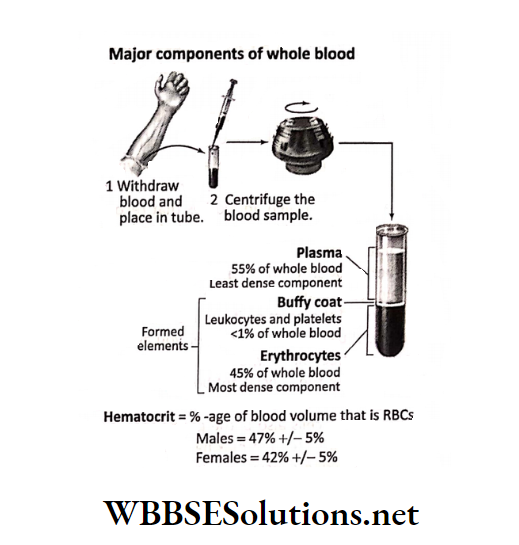
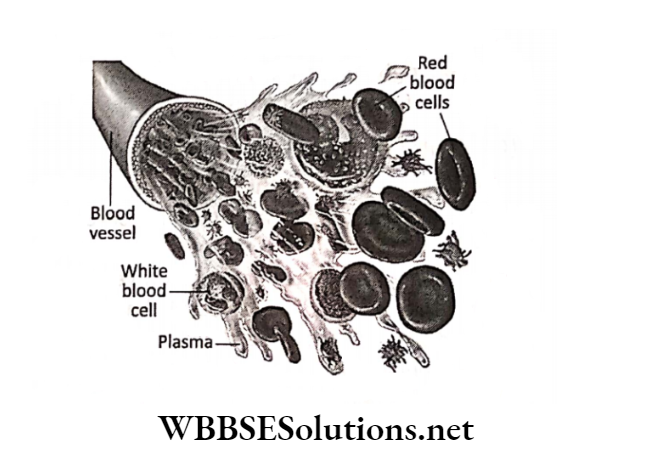
Granulocytes:
Do you know how your skin gets a little red and swollen around a cut or scrape? That means the granulocytes are doing their jobs.
They have a lot to do with how your body cleans things up and helps wounds heal after an injury.
Granulocytes also help to prevent infection by surrounding and destroying things that aren’t supposed to be in your body and by killing germs.
Granulocytes may be of three different types-Neutrophil, Eosinophil, and Basophil.
Agranulocytes: These are of two types- Lymphocytes and Monocytes.
1. Lymphocytes:
There are two types of lymphocytes:
B cells and T cells. B cells help make special proteins called antibodies that recognize stuff that should not be in your body, like bacteria or a virus you get from a sick friend.
Antibodies are, very specific, and can recognize only a certain type of germ. Once the antibody finds it, it gets rid of the germ so it cannot hurt you.
The really cool part is that even after you are better, B cells can become memory cells that remember how to make the special antibody so that if the same germ infects you again, it can kill the germ even faster.
T cells also battle germs that invade the body, but instead of making antibodies, they work by making special chemicals that help to fight the infection.
2. Monocytes:
Monocytes are white blood cells that fight infection by surrounding and destroying bacteria and viruses.
3. Platelets:
Platelets, also called thrombocytes, are tiny round cell fractions that help to make sure you do not bleed too much once you get a cut or scrape.
Cuts and scrapes break blood vessels. If a platelet reaches a blood vessel that’s been broken open, it sends out a chemical signal that makes other nearby platelets to stick together inside the vessel.
After the platelets form this plug, they send out more chemical signals that attract clotting factors.
These clotting factors work together to make a web of tiny protein threads within which other blood cells too (RBCs and WBCs) are entangled.
The platelets and this web of protein together with other blood cells make a blood clot. The clot keeps your blood inside the vessel while the break in the blood vessel heals up.
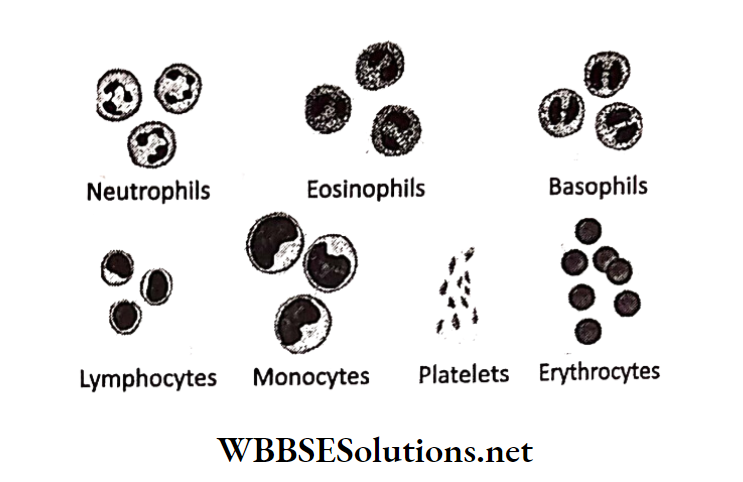
4. Plasma:
Plasma is a yellowish liquid that is mostly. water. But it also carries important nutrients, hormones, and proteins throughout the body.
Nutrients are chemicals from the food you eat that gives your body energy and other things your body’s cells need to do their work and keep you healthy.
Many proteins in plasma are really important to your body, like the clotting factors that help you stop bleeding if you get a cut or a scrape.
Plasma also carries away cell wastes- chemicals that the cell doesn’t want anymore.
Nutrients, hormones, proteins, and waste are dissolved in the plasma-kind of like the cocoa mix that dissolves in a cup of hot water. What are marshmallows? The blood cells-they float in the plasma.
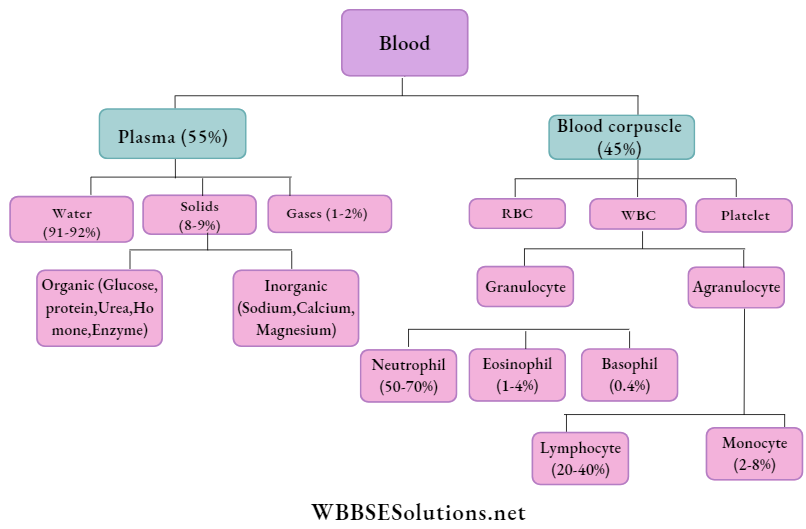
Question 2. Write about the lymphocytes.
Answer:
1. Lymphocytes:
There are two types of lymphocytes:
B cells and T cells. B cells help make special proteins called antibodies that recognize stuff that should not be in your body, like bacteria or a virus you get from a sick friend.
Antibodies are, very specific, and can recognize only a certain type of germ. Once the antibody finds it, it gets rid of the germ so it cannot hurt you.
The really cool part is that even after you are better, B cells can become memory cells that remember how to make the special antibody so that if the same germ infects you again, it can kill the germ even faster.
T cells also battle germs that invade the body, but instead of making antibodies, they work by making special chemicals that help to fight the infection.
2. Monocytes:
Monocytes are white blood cells that fight infection by surrounding and destroying bacteria and viruses.
Question 3. Write about the diseases of white blood cells.
Answer:
Components of blood:
It is not made in a kitchen, but blood has ingredients, just like a recipe. To make blood, your body needs to mix:
- Red blood cells, which carry oxygen throughout the body,
- White blood cells, which fight infections,
- Platelets, which are cell fragments that help you stop bleeding if you get a cut, and
- Plasma is a yellowish liquid that carries nutrients, hormones, and proteins throughout the body.
- Your body does not go to the store to buy those ingredients. It makes them. Bone marrow, which is goopy stuff inside your bones, makes the red blood cells, the white blood cells, and the platelets.
Plasma is mostly water, which is absorbed from the intestine from what you drink and eat, with the liver supplying important proteins.
Put all these ingredients together and you have blood- an essential part of the circulatory system.
Thanks to your heart (which pumps blood) and your blood vessels through which blood travels throughout your body from your head to your toes. Let’s find out more about each ingredient.
1. Red blood cells (RBCs)
Red blood cells (also called erythrocytes) look like flattened basketballs. Most of the cells in the blood are red blood cells.
They carry around an important chemical called hemoglobin that gives blood its red color. Blood and breathing go hand in hand.
How? The hemoglobin in blood delivers oxygen, which you get from the air you breathe to all parts of your body. Without oxygen, your body couldn’t keep working and stay alive.
2. White blood cells (WBCs)
White blood cells (also called leukocytes) are bigger than red blood cells. There are usually not a whole lot of white blood cells floating around in your blood when you are healthy.
Once you get sick, your body makes some more to protect you. There are different types of white blood cells that do different things to keep you well.


Granulocytes:
Do you know how your skin gets a little red and swollen around a cut or scrape? That means the granulocytes are doing their jobs.
They have a lot to do with how your body cleans things up and helps wounds heal after an injury.
Granulocytes also help to prevent infection by surrounding and destroying things that aren’t supposed to be in your body and by killing germs.
Granulocytes may be of three different types-Neutrophil, Eosinophil, and Basophil.
Agranulocytes: These are of two types- Lymphocytes and Monocytes.
1. Lymphocytes:
There are two types of lymphocytes:
B cells and T cells. B cells help make special proteins called antibodies that recognize stuff that should not be in your body, like bacteria or a virus you get from a sick friend.
Antibodies are, very specific, and can recognize only a certain type of germ. Once the antibody finds it, it gets rid of the germ so it cannot hurt you.
The really cool part is that even after you are better, B cells can become memory cells that remember how to make the special antibody so that if the same germ infects you again, it can kill the germ even faster.
T cells also battle germs that invade the body, but instead of making antibodies, they work by making special chemicals that help to fight the infection.
2. Monocytes:
Monocytes are white blood cells that fight infection by surrounding and destroying bacteria and viruses.
3. Platelets:
Platelets, also called thrombocytes, are tiny round cell fractions that help to make sure you do not bleed too much once you get a cut or scrape.
Cuts and scrapes break blood vessels. If a platelet reaches a blood vessel that’s been broken open, it sends out a chemical signal that makes other nearby platelets to stick together inside the vessel.
After the platelets form this plug, they send out more chemical signals that attract clotting factors.
These clotting factors work together to make a web of tiny protein threads within which other blood cells too (RBCs and WBCs) are entangled.
The platelets and this web of protein together with other blood cells make a blood clot. The clot keeps your blood inside the vessel while the break in the blood vessel heals up.

4. Plasma:
Plasma is a yellowish liquid that is mostly. water. But it also carries important nutrients, hormones, and proteins throughout the body.
Nutrients are chemicals from the food you eat that gives your body energy and other things your body’s cells need to do their work and keep you healthy.
Many proteins in plasma are really important to your body, like the clotting factors that help you stop bleeding if you get a cut or a scrape.
Plasma also carries away cell wastes- chemicals that the cell doesn’t want anymore.
Nutrients, hormones, proteins, and waste are dissolved in the plasma-kind of like the cocoa mix that dissolves in a cup of hot water. What are marshmallows? The blood cells-they float in the plasma.

Blood Types:
Everybody’s blood is red, but it’s not all the same. There are eight blood types, described using the letters A, B, and O.
Those letters stand for certain proteins found in the red blood cells. Not everyone has the same proteins. In addition to getting a letter or two, a person’s blood is either “positive” or “negative”.
That doesn’t mean one person’s blood is good and another person’s blood is bad. It’s a way of keeping track of whether someone’s blood has a certain protein called Rh protein.
This protein is called “Rh” because scientists found it while studying Rhesus monkeys. If your blood is positive, you have this protein.
If it is negative, you do not. Either way is totally fine. Blood types are important if a person ever wants to donate blood or needs a blood transfusion. Getting blood of the wrong type can make a person sick.
The disease of the red blood cells:
The most common condition affecting the red blood cells of teens is anemia, a lower-than-normal number of red cells in the blood.
Anaemia is accompanied by a decrease in the amount of hemoglobin present in the blood.
Causes of anemia can be grouped into two categories anemia caused by insufficient RBC production and anemia caused by RBCs being destroyed too soon.
1. Diseases of platelets:
1. Thrombocytopenia, or a lower-than-normal number of platelets, is usually diagnosed because a person has abnormal bruising or bleeding.
2. Diseases of the clotting system:
The body’s clotting system depends on platelets as well as many clotting factors and other blood components.
If a hereditary defect affects any of these components, a person can have a bleeding disorder.
Diseases of the white blood cells:
- Neutropenia happens when there aren’t enough of certain types of white blood cells (neutrophils) to protect the body against bacterial infections.
- Human Immunodeficiency Virus (HIV) is a virus that attacks certain types of WBCs (lymphocytes) that work to fight infection.
Infection with the virus can result in AIDS (Acquired Immunodeficiency Syndrome), leaving the body prone to infections and certain other diseases.
- Leukemias are cancers of the cells that produce WBCs.
Different types of WBCs defend the human body against the attack of micro-organisms. They collect at the site of infection and engulf the invaders.
WBC also manufacture antibodies that provide immunity to the body. Every day various microbes invade and enter the human body.
There are certain mechanisms through which these microbes are destroyed once they enter our bodies. The mechanism acts through discharge.
The flow of fluid from part of the body such as from the nose is called a discharge.
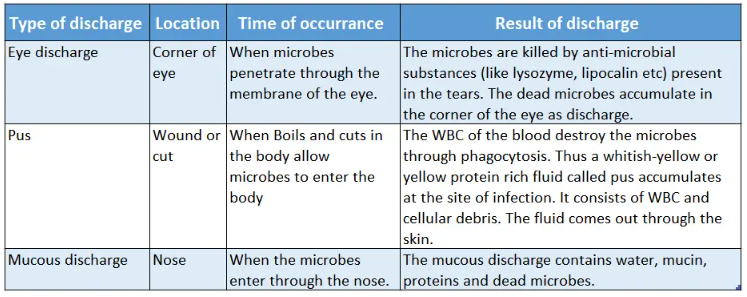
Question 4. Write about the major functions of blood.
Answer:
Functions of blood:
- Transport of nutrients, hormones, and enzymes to various parts of the body.
- Transport of respiratory gases and waste products.
- Protection against microbes
- Maintenance of water balance and acid-base balance.
- Antibody formation.
Chapter 8 The Human Body Lungs Review Questions Environment Review Questions MCQ
Question 1. Lungs are a part of __________ system.
- Circulatory
- Respiratory
- Digestive
- Nervous
Answer: 2. Respiratory
Question 2. Beneath the lungs is the
- Heart
- Stomach
- Lungs
- Trachea
Answer: 3. Lungs
Question 3. Lungs help us in
- Bronchi
- Talking
- Lungs
- Breathing
Answer: 4. Breathing
Question 4. During inhalation the diaphragm
- Relax
- Contract
- Plays no role
- Undulates
Answer: 2. Contract
Question 5. Bronchioles end in
- Alveoli
- Lungs
- Trachea
- Capillaries
Answer: 1. Alveoli
Question 6. Capillaries are small
- Blood vessels
- Trachea
- Arteries
- Veins
Answer: 1. Blood vessels
Question 7. Tiny hairs called cilia move gently to keep mucus and dirt out of the
- Heart
- Blood
- Lungs
- Air
Answer: 3. Lungs
Question 8. The ultimate branches of the trachea are
- Bronchi
- Alveoli
- Lings
- Bronchioles
Answer: 4. Bronchioles
Question 9. Lungs are covered by
- Air
- Blood
- Mucus
- Pleural membranes
Answer: 4. Pleural membranes
Question 10. Larynx is
- Brainbox
- Voice box
- Membranous
- Tracheal
Answer: 2. Voicebox
Question 11. Asthma is a problem of _________ system.
- Respiratory
- Circulatory
- Lungs
- Tracheal
Answer: 1. Respiratory
Chapter 8 The Human Body Lungs Fill In The Blanks
Question 1. Lungs work as a part of our _________ system.
Answer: Respiratory
Question 2. Lungs are located inside _________.
Answer: Chest
Question 3. At the end of each bronchiole is a special air sac called _________.
Answer: Chest
Question 4. Beneath the lungs is the _________ a dome-shaped muscle.
Answer: Diaphragm
Question 5. Lungs are covered by _________ membranes.
Answer: Qleural
Question 6. Our voice is produced from _________
Answer: Larynx
Question 7. Illnesses like bronchitis and _________ hard for air to get into the alveoli.
Answer: Pneumonia
Chapter 8 The Human Body Lungs Identify As True Or False
Question 1. Breathing air is necessary for keeping us alive.
Answer: True
Question 2. Lungs are protected by the heart.
Answer: False
Question 3. Above the lungs is the diaphragm.
Answer: False
Question 4. The trachea divides into bronchioles.
Answer: False
Question 5. Each alveolus has a mesh-like covering of very small blood vessels called capillaries.
Answer: True
Question 6. As we inhale or breathe in, our diaphragm contracts and flattens out.
Answer: True
Question 7. During exhalation, the diaphragm relaxes and moves down.
Answer: False
Question 8. Our voice box is called the larynx.
Answer: True
Question 9. Exhalation is bad for the lungs.
Answer: False
Question 10. Asthma is a neurological problem.
Answer: False
Chapter 8 The Human Body Lungs Match the Column
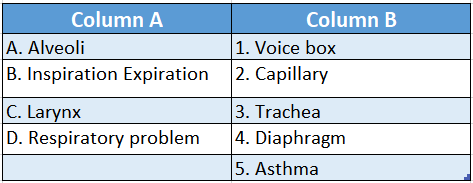
Answer: A-2,B-4,C-1,D-5
Chapter 8 The Human Body Lungs Answer In Word Or A Sentence
Question 1. Name the principal organ of respiration.
Answer: Lungs.
Question 2. How many pairs of ribs form the rib cage?
Answer: 12 pairs.
Question 3. Name the dome-shaped structure located beneath the lungs.
Answer: Diaphragm.
Question 4. What is the name of the respiratory windpipe?
Answer: Trachea.
Question 5. What is the name of the air sacs situated in our lungs?
Answer: Alveoli.
Question 6. Name the organ responsible for talking.
Answer: Larynx.
Question 7. Name any two respiratory problems.
Answer: Asthma/Bronchitis / Pneumonia (any two to be mentioned).
Question 8. Find out the odd one: bronchus, alveoli, artery, nasal passage.
Answer: Artery.
Chapter 8 The Human Body Lungs Short Answer Type Questions
Question 1. What are lungs?
Answer: Lungs are the pair of organs situated within the ribcage, consisting of elastic sacs with branching passages into which air is drawn so that oxygen can pass into the blood and carbon dioxide be removed.
Question 2. What is a trachea?
Answer: The trachea, colloquially called the windpipe, is a tube that connects the pharynx and larynx to the lungs, allowing the passage of air.
Question 3. What are pulmonary alveoli?
Answer: The pulmonary alveoli are the terminal ends of the respiratory tree which are sites of gas exchange with the blood.
Question 4. What is the diaphragm?
Answer: It is a dome-shaped muscular partition separating the thorax from the abdomen in mammals.
It plays a major role in breathing, as its contraction increases the volume of the thorax and so inflates the lungs.
Question 5. What is asthma?
Answer: Asthma is a chronic (long-term) lung disease that inflames and narrows the airways.
Asthma causes recurring periods of wheezing (a whistling sound when you breathe), chest tightness, shortness of breath, and coughing.
Question 6. Fill up the gap: Environment→ 1 → Pharynx and larynx →2→ bronchi→ 3→ 4
Answer:
- Nostrils
- trachea
- bronchioles
- alveoli
Chapter 8 The Human Body Lungs Long Answer Type Questions
Question 1. Describe the location and structure of the lungs.
Answer:
Location of lungs :
Your lungs are in your chest, and they are so large that they take up most of the space there. You have two lungs, but they aren’t of the same size as your eyes or nostrils.
Instead, the lung on the left side of your body is a bit smaller than the lung on the right. This extra space on the left leaves room for your heart.
Your lungs are protected by your rib cage, which is made up of 12 sets of ribs.
These ribs are connected to your spine in your back and go around your lungs to keep them safe.
Beneath the lungs is the diaphragm, a dome-shaped muscle that works with your lungs to allow you to inhale (breathe in) and exhale (breathe out) air.
You can’t see your lungs, but it’s easy to feel them in action: Put your hands on your chest and breathe in very deeply. You will feel your chest getting slightly bigger.
Now breathe out the air, and feel your chest returning to its regular size.
Structure of lungs :
From the outside, the lungs are pink and a bit squishy, like a sponge. At the bottom of the trachea, or windpipe, there are two large tubes.
These tubes are called the main stem bronchi, and one heads left into the left lung, while the other heads right into the right lung.
Each main stem bronchus is the name for just one of the bronchi-then branches off into tubes, or bronchi, which get smaller and even smaller still, like branches on a big tree.
The tiniest tubes are called bronchioles, and there are about 30,000 of them in each lung. Each bronchiole is about the same thickness as a hair.
At the end of each bronchiole is a special area, that leads into clumps of tiny air sacs called alveoli.
There are about 600 million alveoli in our lungs and if we stretch them out, they would cover an entire tennis court.
Each alveolus-what we call just one of the alveoli- has a mesh-like covering of very small blood vessels called capillaries.
These capillaries are so tiny that the cells in your blood need to line up a single file just to march through them.
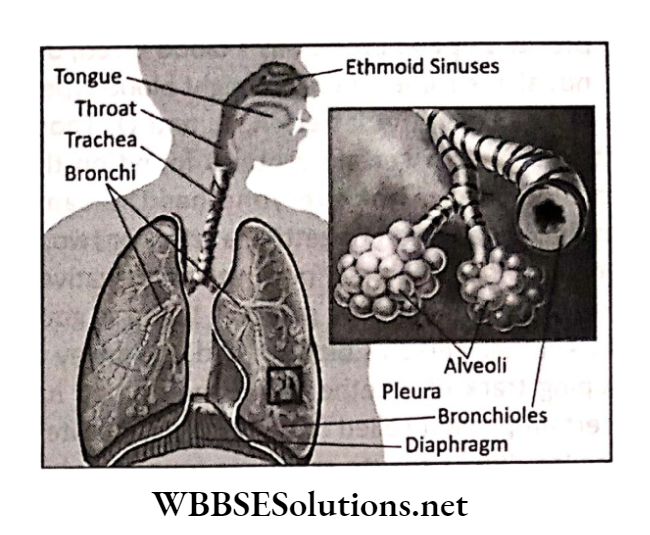
Question 2. Write the mechanism of breathing.
Answer:
Functioning of lungs:
When you are walking with your pet, cleaning your room, or playing football, you probably do not think about inhaling (breathing in)-you have got other things on your mind.
But every time you inhale air, dozens of body parts work together to help get that air in there without you ever thinking about it.
As you inhale or breathe in, your diaphragm contracts and flattens out. This allows it to move down, so your lungs have more room to grow larger as they fill up with air.
“Move over, diaphragm, I’m filling up!” is what your lungs would say. And the diaphragm is not the only part that gives your lungs the room they need.
Your rib muscles also lift the ribs up and outward to give the lungs more space. At the same time, you inhale air through your mouth and nose, and the air heads down your trachea or windpipe.
On the way down the windpipe, tiny hairs called cilia move gently to keep mucus and dirt out of the lungs.
The air then goes through the series of branches in your lungs, through the bronchi and the bronchioles.
The air finally ends up in the 600 million alveoli. As these millions of alveoli get filled up with air, the lungs get bigger. It’s the alveoli that allow oxygen from the air to pass into your blood.
All the cells in the body need oxygen every minute of the day. Oxygen passes through the walls of each alveolus into the tiny capillaries that surround it.
The oxygen enters the blood in the tiny capillaries, hitching a ride on red blood cells and traveling through layers of blood vessels to the heart.
The heart then sends the oxygenated (filled with oxygen) blood out to all the cells in the body.
When it’s to exhale (breathe out), everything happens in reverse. Now it’s the diaphragm’s turn to say, “Move it!” Your diaphragm relaxes and moves up, pushing air out of the lungs.
Your rib muscles become relaxed and your ribs move in again, creating a smaller space in your chest.
By now your cells have used the oxygen they need, and your blood is carrying carbon dioxide and other wastes that must leave your body.
The blood comes back through the capillaries and the wastes enter the alveoli.
Then you breathe them out in the reverse order of how they came in the air goes through the bronchioles, out the bronchi, out the trachea, and finally out through your mouth and nose.
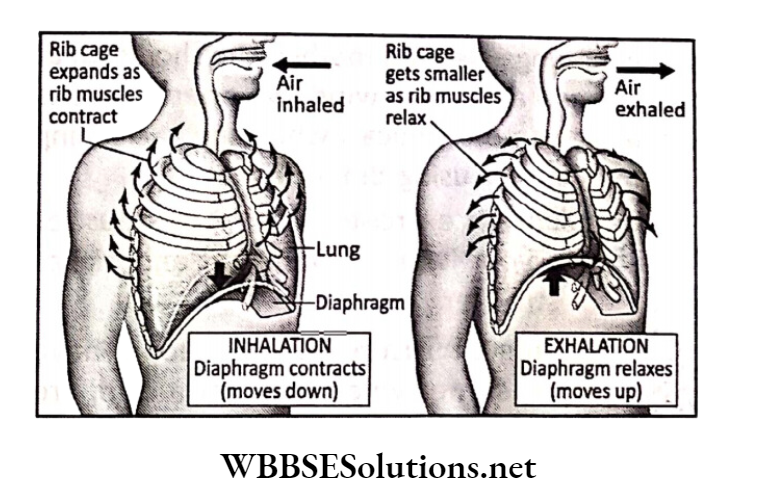
The air that you breathe out not only contains waste and carbon dioxide, but it’s warm too art balls and to me Sequence As air travels through your body, it picks up heat along the way.
You can feel this heat by putting your hand in front of your mouth or nose as you breathe out. With all this movement, you might be wondering why things don’t get stuck as the lungs fill and empty.
Luckily, your lungs are covered by two really slick special layers called pleural membranes.
These membranes are separated by a fluid that allows them to slide around easily while you inhale and exhale.
Question 3. How lungs can be taken care of?
Answer:
Your lungs are important for breathing and also for talking. Above the trachea (windpipe) is the larynx, which is sometimes called the voice box.
Across the voice box are two tiny ridges called vocal cords, which open and close to make sounds. When you exhale air from the lungs, it comes through the trachea and larynx and reaches the vocal cords.
If the vocal cords are closed and the air flows between them, the vocal cords vibrate and a sound is made.
The amount of air you blow out from your lungs determines how loud a sound will be and how long you can make the sound.
Very deeply and saying the names of all the kids in your class-how far can you get without taking the next breath? The next time you’re outside.
Try shouting and see what happens- shouting requires lots of air, so you’ll need to breathe in more frequently than you would if you were only saying the words.
Take care of your lungs :
- Do not smoke and keep away from others who smoke. Lungs do not like cigarette smoke, it can damage them, and cause disease and even death.
Stay out of the workshop if someone is using chemicals, as some chemicals can damage your lungs.
- Remind mother, she should wear a mask and have windows open if she is using some chemicals when she is cleaning the oven or using drain cleaner.
- Get plenty of exercise. It makes the muscles around your lungs work harder and makes them stronger.
Problems of lungs:
Some people have asthma. Sometimes when they get a cold, are in contact with something they are allergic to, or exercise hard, the tiny tubes in their lungs get tighter and there is a lot more mucus.
This makes it hard to get air into the alveoli. They can become very short of breath and need medication to help their lung work well.
Illnesses like bronchitis and pneumonia also make it hard for air to get into the alveoli.
When the lungs do not work well, that means there is not enough oxygen getting around to all the cells of the body, and the body systems do not work as well as usual and you feel short of breath.
People affected with Tuberculosis spit blood while coughing, and suffer from mild fever (especially at night), respiratory trouble, and chest pain.
Severe weakness is felt and loss of body weight takes place rapidly.
Question 4. Write about the common respiratory
Answer:
Problems of lungs:
Some people have asthma. Sometimes when they get a cold, are in contact with something they are allergic to, or exercise hard, the tiny tubes in their lungs get tighter and there is a lot more mucus.
This makes it hard to get air into the alveoli. They can become very short of breath and need medication to help their lung work well.
Illnesses like bronchitis and pneumonia also make it hard for air to get into the alveoli.
When the lungs do not work well, that means there is not enough oxygen getting around to all the cells of the body, and the body systems do not work as well as usual and you feel short of breath.
People affected with Tuberculosis spit blood while coughing, and suffer from mild fever (especially at night), respiratory trouble, and chest pain.
Severe weakness is felt and loss of body weight takes place rapidly.
Chapter 8 The Human Body Bones Bone-Joints And Muscles Review Questions Environment Review Questions MCQ
Question 1. Bones are the parts of
- Skeletal system
- Locomotory system
- Movable system
- Joints
Answer: 1. Skeletal system
Question 2. Our ribs protect the
- Heart
- Lungs
- Both ‘a’ and ‘b’ correct
- Kidneys
Answer: 3. Both ‘a’ and ‘b’ correct
Question 3. The number of bones in the adult human body is
- 200
- 206
- 300
- Variable
Answer: 2. 206
Question 4. Bones are largely made of
- Calcium
- Iron
- Zinc
- Minerals
Answer: 1. Calcium
Question 5. The outside part of the bone is called the
- Involuntary
- Voluntary
- Cancellous
- Periosteum
Answer: 4. Periosteum
Question 6. The skull is like a natural helmet that protects the
- Eyes
- Ears
- Brain
- Face
Answer: 3. Brain
Question 7. The number of cervical vertebrae is
- 5
- 7
- 10
- 12
Answer: 2. 7
Question 8. The last 2 pairs of ribs are called the
- Floating ribs
- Flying ribs
- True ribs
- False ribs
Answer: 1. Floating ribs
Question 9. The bone between our shoulder and the elbow is
- Femur
- Humerus
- Collar bone
- Coccyx
Answer: 2. Humerus
Question 10. The study of joints is called
- Biology
- Anthology
- Arthrology
- Astrology
Answer: 3. Arthrology
Question 11. Synovial joints are
- Movable
- Contain fluid
- Fixed
- Both ‘a’ and ‘b’ correct
Answer: 4. Both ‘a’ and ‘b’ correct
Question 12. The elbow is an example of
- Hinge joint
- Saddle joint
- Condyloid joint
- Ball and socket joint
Answer: 1. Hinge joint
Question 13. Smooth muscles are
- Involuntary
- Voluntary
- Cardiac
- Skeletal
Answer: 1. Involuntary
Question 14. The muscle that makes up the heart is called
- Smooth muscle
- Visceral muscle
- Cardiac muscle
- Skeletal muscle
Answer: 3. Cardiac muscle
Question 15. Muscles get most of their energy from
- Food
- Blood
- Joints
- Glucose
Answer: 4. Glucose
Question 16. Immovable joints can be seen in
- knee
- thumbs
- skull
- shoulder
Answer: 3. skull
Question 17. A partly movable joint can be found in
- skull
- wrist
- sternum
- shoulder
Answer: 3. sternum
Question 18. The number of bones in a newborn baby is
- 206
- 300
- 500
- nil
Answer: 2. 300
Chapter 8 The Human Body Bones Bone-Joints And Muscles Fill In The Blanks
Question 1. Muscles connect the to __________ the bones.
Answer: Joints
Question 2. __________ make up the framework of our bodies.
Answer: Bones
Question 3. The adult human body has __________ bones.
Answer: 206
Question 4. The center of the bone, or __________ is where your blood is created.
Answer: Marrow
Question 5 The outside part of the bone is called the __________.
Answer: Periosteum
Question 6. The __________ make a shield around our lungs and heart.
Answer: Ribs
Question 7. There are __________ pairs of ribs in the human body.
Answer: 12
Question 8. The arm has 3 bones-the humerus, the radius, and the __________
Answer: Ulna
Question 9. The __________ is the largest bone in our body.
Answer: Femur
Question 10. __________ is a degenerative joint disease that middle-aged and older adults experience.
Answer: Osteoarthritis
Question 11. The study of joints is called __________
Answer: Arthrology
Question 12. Synovial joints have __________ to prevent excessive movement.
Answer: Ligaments
Question 13 A __________ joint can move in the axis at a right angle to the joints involved.
Answer: Hinge
Question 14. Ball and socket joints are perhaps the most versatile __________ joints.
Answer: Synovial
Question 15. We have three different types of muscles smooth Muscle, __________ muscle, and skeletal muscle
Answer: Cardiac
Question 16. Skeletal muscles are held to the bones with the help of __________
Answer: Tendons
Question 17. Muscles work by __________ and contracting.
Answer: Expanding
Question 18. Muscles get most of their energy from __________.
Answer: Glucose
Chapter 8 The Human Body Bones Bone-Joints And Muscles Identify As True Or False
Question 1. The bones that make up our skeletal system provide shape and protection.
Answer: True
Question 2. Wherever two bones meet, there is a blood vessel to hold them together and allow them to move.
Answer: False
Question 3. Bones are living, growing, and changing parts of our bodies.
Answer: True
Question 4. Bones are largely made of calcium and other minerals.
Answer: True
Question 5. The spine has 26 bones which are like circles with wings on the sides and back.
Answer: True
Question 6. We have 7 thoracic vertebrae.
Answer: False
Question 7. At the front of the body, the top 7 ribs are attached to the sternum.
Answer: True
Question 8. The femur is the bone between your shoulder and the elbow.
Answer: False
Question 9. Asthma is a rheumatic disease that has symptoms of pain and limited movement.
Answer: False
Question 10. Joints are places where bones meet.
Answer: True
Question 11. In the skull, the synovial joints are called sutures.
Answer: False
Question 12. Hinge joints only allow rotation.
Answer: False
Question 13. Joints form the connections between ligaments.
Answer: False
Question 14. Smooth muscles are sometimes also called involuntary muscles.
Answer: True
Question 15. The muscle that makes up the heart is called cardiac muscle.
Answer: True
Question 16. Muscles have long, thin cells that are grouped into bundles.
Answer: True
Question 17. When you exercise a lot, your muscles get refreshed.
Answer: False
Chapter 8 The Human Body Bones Bone-Joints And Muscles match The Columns
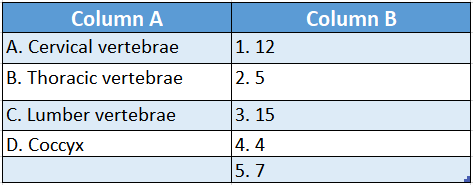
Answer: A-5,B-1,C-2,D-4
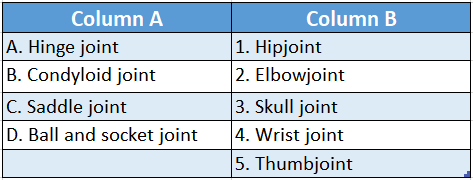
Answer: A-2,B-4,C-5,D-1
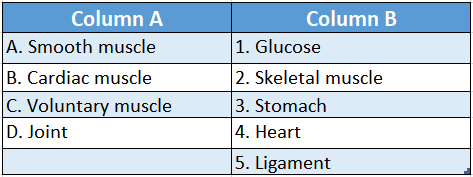
Answer: A-3,B-4,C-2D-5
Chapter 8 The Human Body Bones Bone-Joints And Muscles Answer In Words Or A Sentence
Question 1. How many bones are there in the adult human body?
Answer: Adults have 206 bones.
Question 2. Name the outer layer of a bone
Answer: Periosteum.
Question 3. Where is bone marrow located?
Answer: In the inner cavity of long bones.
Question 4. Where is our brain enclosed?
Answer: Inside the skull.
Question 5. Name two organs enclosed within ribs.
Answer: Heart and lungs.
Question 6. How many cervical vertebrae are there in the human body?
Answer: They are 7 in number.
Question 7. How many floating ribs are there in our body?
Answer: Two.
Question 8. Name the bone forming the shoulder blade.
Answer: Scapula.
Question 9. Name the bone between your shoulder and the elbow.
Answer: Humerus.
Question 10. How many bones are there in each hand of
ours?
Answer: 19
Question 11. Name the largest bone in our body.
Answer: Femur.
Question 12. Name the two long bones below the knee.
Answer: Tibia and fibula.
Question 13. What is arthrology?
Answer: It is the study of joints.
Question 14. Give an example of the hinge joint.
Answer: Elbow joint.
Question 15. Give an example of a saddle joint.
Answer: Thumb joint.
Question 16. What type of joint is the shoulder joint?
Answer: Ball and socket joint.
Question 17. How many types of muscles are there in our body?
Answer: Three types.
Question 18. What type of muscle is found in our intestine?
Answer: Smooth muscles.
Question 19. Name the structure joining bone and skeletal muscle.
Answer: Tendon.
Question 20. What is myocardium?
Answer: It is the bulk of the heart muscle.
Chapter 8 The Human Body Bones Bone-Joints And Muscles Short Answer SA Type Questions
Question 1. What are bones? State their functions.
Answer: A bone is a rigid organ that constitutes part of the vertebrate skeleton.
Bones give mechanical support to the body and protect the various organs of the body, produce red and Answer: white blood cells, store minerals, and also enable mobility.
Question 2. What are bone joints?
Answer: A joint or articulation (or articular surface) is the location at which bones connect.
They are constructed to allow movement (except for skull, sacral, sternal, and pelvic bones) and provide mechanical support, and are classified structurally and functionally.
Question 3. How many bones are there in the human body? Babies skeletons are made up of more than 300 Answer: parts, but by the time we become adults we only have 206 bones.
It is just that some of our baby bones are made, partly or completely, of cartilage. As we grow bigger and heavier, cartilage is slowly replaced by harder bone.
Some smaller bones join together to make one bigger bone.
Question 4. State the functions of the skull and spine (vertebral column).
Answer:
- The skull is like a natural helmet that protects the brain.
- The spine protects the nerves in the spinal column.
Question 5. What are the first two regions of our vertebral column?
Answer:
- The top 7 are called the cervical vertebrae and they support your head and neck.
- The next 12 are called the thoracic vertebrae. These hold one end of your ribs.
Question 6. Which regions of our vertebral column have fused vertebrae?
Answer:
- The sacrum is a large bone that is actually made of 5 vertebrae fused (joined) together.
- At the bottom of the spine is the coccyx, which is one bone made of 4 small vertebrae fused together.
Question 7. What are true ribs?
Answer: The first seven ribs attached to the sternum (the breast bone) in the front are known as true ribs (or sternal ribs).
Question 8. What are false ribs and floating ribs?
Answer: The lower five ribs do not directly connect to the sternum and are known as false ribs.
The upper three false ribs connect to the costal cartilages of the ribs just above them.
The last two false ribs, however, usually have no ventral attachment (no anchor at all in front) and are called floating, fluctuating or vertebral ribs.
Question 9. What is arthritis?
Answer: Arthritis is a form of joint disorder that involves inflammation in one or more joints. There are several different forms of arthritis.
The most common form of arthritis is osteoarthritis, a result of trauma to the joint, infection of the joint, or age.
Question 10. How many types of joints are there in the human body?
Answer: There are three main types of joints; Fibrous (immovable), cartilaginous (partially movable), and synovial (freely movable) joints.
Question 11. What are the functions of joints?
Answer: Joints are functional junctions between two or more bones. Joints bind the skeleton together to give structure and allow muscles to move bones to perform certain tasks such as running, reaching, and grasping.
Question 12. What are fibrous joints?
Answer: These joints have no joint cavity and are connected via fibrous connective tissue. The skull bones are connected by fibrous joints.
Sutures are found between the bones of the skull. In fetal skulls, the sutures are wide to allow slight movement during birth.
Question 13. What are synovial joints?
Answer: These are bone joints characterized by the presence of synovial fluid within a space that encapsulates the articulating surface (surfaces that touch each other) of the joint.
The synovial capsule reduces the friction between the bones allowing more smooth movement.
Question 14. What are ball and socket joints?
Answer: These are a type of synovial bone joint. They are multiaxial joints, which means they can move in many axes. One bone has a ball and the other one has a socket.
Question 15. What are smooth muscles?
Answer: Smooth muscle is an involuntary, non-striated muscle. Smooth muscles are usually in sheets or layers, with one layer of muscle behind the other.
We can’t control this type of muscle. Our brain and body tell these muscles what to do without you even thinking about it. Examples-muscles of the stomach.
Question 16. What is myocardium?
Answer: The myocardium is the muscular wall of the heart or the heart muscle. It contracts to pump blood out of the heart and then relaxes as the heart refills with returning blood.
Question 17. What is a tendon?
Answer: A tendon is a tough band of fibrous connective tissue that usually connects muscle to bone and is capable of withstanding tension. Tendons are similar to ligaments.
Question 18. Mention two differences between bones and muscles.
Answer: 1. Bones are hard and composed of osteocytes. Muscles are made of contractile tissue.
2. Bones form the skeleton of the body. Muscles keep the bones in place and play a significant role in their movement.
Chapter 8 The Human Body Bones Bone-Joints And Muscles Long Answer Type Questions
Question 1. Write about the parts of bones.
Answer:
The cartilage, muscles, ligaments, and tendons, all work as one, holding bones together and letting joints move. Muscles connect the joints to the bones.
Flexing of the muscles and the ability to bend at the joints moves the bones to accomplish skilled body motions.
1. Bones
Bones make up the framework of our bodies. We call this framework the skeleton. Bones are living, growing, and changing parts of our bodies.
Baby skeletons are made up of more than 300 parts, but by the time we become adults we only have 206 bones. No, we don’t lose any.
It’s just that some of our baby bones are made, partly or completely, of cartilage. As we grow bigger and heavier, cartilage is slowly replaced by harder bone.
Some smaller bones are joined together to make one bigger bone.
Bones are largely made of calcium and other minerals. They are hard enough to support our weight and daily stress. Bones protect our major organs and give our bodies shape.
Bones are actually living tissue. The center of the bone, or marrow, is where your blood is created.
Parts of bones: Most bones have 4 parts:
- The outside part of the bone is called the periosteum. This is a thin but very dense layer that has the nerves and blood vessels which nourish the bone.
- Compact bone is next. It is smooth and very hard.
- Cancellous bone comes next and this looks a bit like a sponge but is much stronger.
- On the very inside of many bones is the bone marrow. It looks a bit like a jelly and it makes new blood cells for the body.
Functions of bones:
- The bones of the skeleton give us our shape and our posture. Without our spine (backbone) and leg bones, we would be unable to stand erect. Bones also protect the softer parts of our bodies.
- The skull is like a natural helmet that protects the brain.
- The spine protects the nerves in the spinal column.
- The rib makes a shield around our lungs and heart.
- They act as a base for muscles, ligaments, and tendons. Ligaments connect bones to bones and tendons connect muscles to bones.
- They all work together to help us move around.
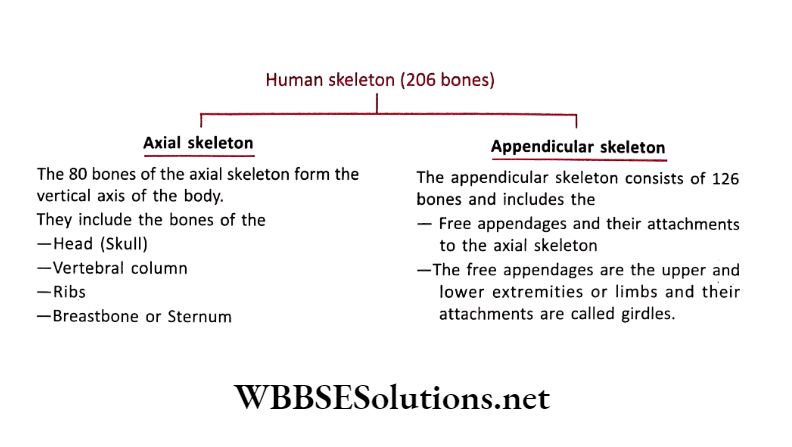
Different major bony parts of our body
- Some bones protect the brain. You can feel the bone at the back of your head and forehead.
- Some bones make the framework for your face. You can feel the bones around your eyes.
- Some bones in the middle part of your ear carry sound from your eardrum to the inner De ear.
- You can feel the jawbone under your chin and where it hinges just under your ear. It is the only bone in your skull that you can move.
2. Spine (Vertebral Column)
The spine has 26 bones which are like circles with wings on the sides and back. They are called vertebrae. There are small discs made of cartilage between each vertebra.
They act like shock absorbers and stop the bones from rubbing against each other. There is also a hole through each of the vertebrae where the spinal cord goes.
- The top 7 are called the cervical vertebrae and they support your head and neck.
- The next 12 are called the thoracic vertebrae. These hold one end of your ribs.
- The next 5 are the lumber vertebrae.
- The next, the sacrum, is a large bone that is actually made of 5 vertebrae fused (joined) together.
- At the bottom of the spine is the coccyx, which is one bone made of 4 small vertebrae fused together.
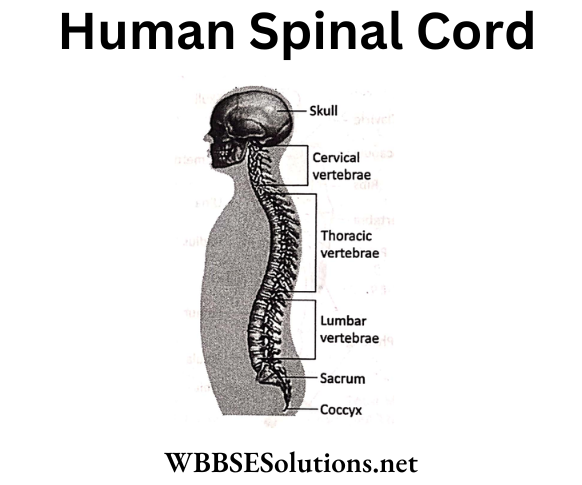
3. Ribs
Ribs make a protective cage around your lungs and heart. There are usually 12 pairs of ribs, each pair attached to the spine at the back.
Each rib is attached to the ribs above and below it by muscles and ligaments.
- At the front of the body, the top 7 ribs are attached to the sternum (or breast bone).
- The next 3 pairs are joined to the ribs above and to the sternum, by cartilage.
- The last 2 pairs of ribs are called the ‘floating’ ribs. They are called floating because they are attached only to the vertebrae and not to the sternum. They don’t have sharp edges sticking out.
4. Arms
Each arm is fastened to the scapula (the shoulder blade) at the back, (which is a triangle-shaped bone near the top of the ribs) and to the clavicle at the front (the collar bone).
The arm has 3 bones-the humerus, the radius, and the ulna. The humerus is the bone between your shoulder and the elbow.
The radius and ulna bones go from the elbow to the wrist. At the end of the radius and ulna is your wrist. Your wrist has 8 small bones, so it is really flexible. In each hand, there are 19 bones.
5. Legs
Your legs are fastened to your pelvis at the hips. The pelvis is shaped like a bowl and supports the contents of your tummy.
- Legs need to be large and strong to support something to pull them. This job is done by the rest of the body.
- The femur is the largest bone in the body and it goes from the pelvis to the knee.
- Another bone called the patella, or kneecap covers the knee joint to protect it.
- Below the knee, there are 2 bones. These are the tibia and the fibula. They join up to a large bone in the ankle called the talus.
- There are 6 other bones here so you can move your ankle around but you cannot move it as much as you can move your wrist. Your feet and ankles have a total of 52 bones in them.
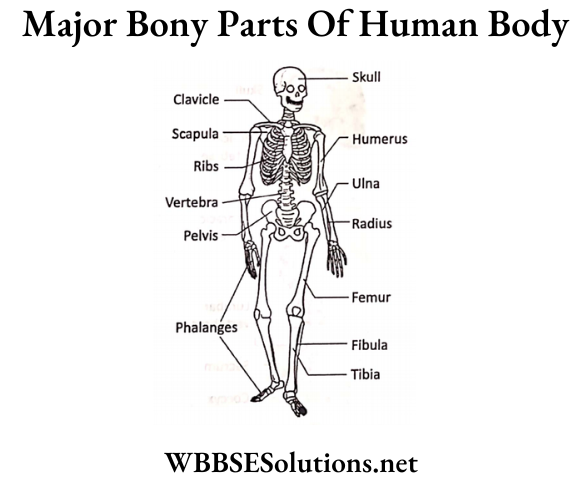
Question 2. Write about the functions of bones.
Answer:
What are the functions of your joints:
Aside from smooth movement, joints also have other functions. They allow you to grow. When your brain grows, the sutures in your skull accommodate.
The primary cartilaginous joints of your knees and elbows allow you to grow to your full height. Joints also serve to minimize friction and cushion the bones against impact.
Joints are very important areas in your body. They give you space for growth and allow you to move the way you want.
What are the classifications of joints:
Joints can be classified according to what material unites the bones. The three main types of joints are fibrous joints, cartilaginous joints, and synovial joints.
Fibrous joints are joined by fibrous tissue cartilaginous joints are united by cartilage or a mix of cartilage and fibrous tissue; synovial joints are connected by a synovial membrane that surrounds the joint cavity.
1. Fibrous joints:
The movement allowed by these joints is dependent on the length of the fibrous tissue connecting the bones. In the skull, these joints are called sutures.
Sutures are connected by strong connective tissues and allow very little or no movement in adults. These are known as immovable joints.
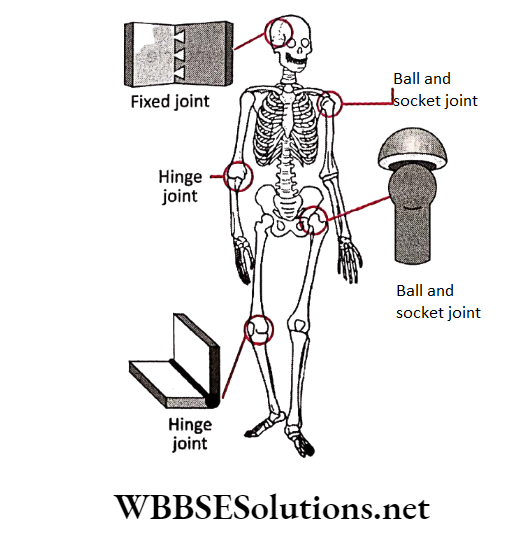
2. Cartilaginous joints:
These joints can be primary cartilaginous joints and secondary cartilaginous joints. Primary cartilaginous joints are connected by cartilage temporarily, early in life.
An example is your knee joint. Later on, the cartilage becomes bone. Secondary cartilaginous joints. consist of bones with the ends covered by cartilage and connected with fibrous. tissue.
These joints are found in the vertebral column and allow slight movement. These are known as partly movable joints.
3. Synovial joints:
These joints are present in the shoulder, hip, knee, ankle, toes, elbow, and the joints of the limbs including the loot fingers.
Their name is derived from the fact sling that they have synovial fluid and is du enclosed within a synovial capsule.
joints allow considerable movement but have ligaments to prevent excessive movement. These are known as movable lee joints.
What are the types of synovial joints?
Synovial joints can be categorized into six types based on the movement they allow. The first type, a plane joint, allows gliding or sliding movement, and the bones involved usually have flat surfaces.
An example of a plane joint is found in the shoulder, between the shoulder blade (acromion of the scapula) and the clavicle.
A hinge joint can move in the axis at a right angle to the joints involved. An example is the elbow joint, which connects the humerus and the ulna.
The movement allowed by this joint includes flexion (bending) and extension (straightening) of your elbow.
The third type of synovial joint is the condyloid joint.
In Greek, “condyloid” means knuckle-like. This type of joint allows movement in two axes. Therefore you can bend it, straighten it, move it from side to side, and rotate it.
An example is your wrist joint. song yen send scrawled The fourth synovial joint type is the saddle joint.
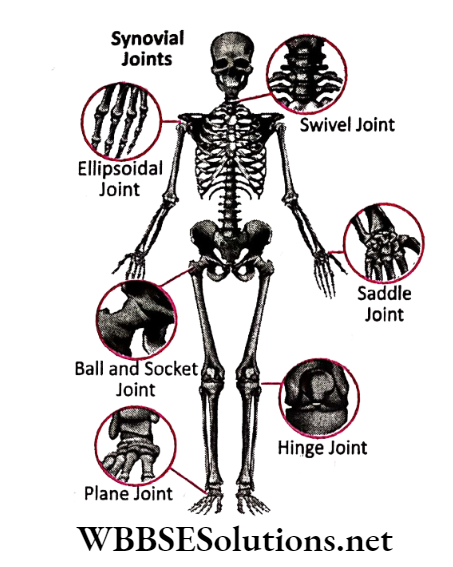
This joint is so-named because the opposing surfaces of the involved bones look like a saddle-one has a convex surface, while the other has a concave surface.
The thumb joint, which can also move in two axes, is a good example of this joint.
Ball and socket joints are perhaps the most versatile synovial joints. They are multi-axial joints, which means they can move in many axes. One joint has a ball and the other joint has a socket.
The shoulder joint and the hip joints are examples of this type. In the hip joint, the ball is the head of the leg bone (femur) while the socket is the acetabulum of the hip (pelvis).
Try to experiment with the kinds of movement you can make with your hip joint. You can bend, flex, open, close, rotate and circularly move your legs.
These movements of the hip joint are very important for ballerinas and dancers who have complex leg routines.
The last type of synovial joint is the pivot joint. These joints only allow rotation. One bone serves like a ring while the other bone has a rounded process rotating within the ring.
This type is found in your neck, particularly in your first two cervical bones called the atlas (the ring) and the dens (the rounded process). This allows you to rotate your head.
Question 3. Write about different types of ribs of our body.
Answer:
3. Ribs
Ribs make a protective cage around your lungs and heart. There are usually 12 pairs of ribs, each pair attached to the spine at the back.
Each rib is attached to the ribs above and below it by muscles and ligaments.
- At the front of the body, the top 7 ribs are attached to the sternum (or breast bone).
- The next 3 pairs are joined to the ribs above and to the sternum, by cartilage.
- The last 2 pairs of ribs are called the ‘floating’ ribs. They are called floating because they are attached only to the vertebrae and not to the sternum. They don’t have sharp edges sticking out.
4. Arms
Each arm is fastened to the scapula (the shoulder blade) at the back, (which is a triangle-shaped bone near the top of the ribs) and to the clavicle at the front (the collar bone).
The arm has 3 bones-the humerus, the radius, and the ulna. The humerus is the bone between your shoulder and the elbow.
The radius and ulna bones go from the elbow to the wrist. At the end of the radius and ulna is your wrist. Your wrist has 8 small bones, so it is really flexible. In each hand, there are 19 bones.
5. Legs
Your legs are fastened to your pelvis at the hips. The pelvis is shaped like a bowl and supports the contents of your tummy.
- Legs need to be large and strong to support something to pull them. This job is done by the rest of the body.
- The femur is the largest bone in the body and it goes from the pelvis to the knee.
- Another bone called the patella, or kneecap covers the knee joint to protect it.
- Below the knee, there are 2 bones. These are the tibia and the fibula. They join up to a large bone in the ankle called the talus.
- There are 6 other bones here so you can move your ankle around but you cannot move it as much as you can move your wrist. Your feet and ankles have a total of 52 bones in them.
Question 4. What are the components of our vertebral column?
Answer:
2. Spine (Vertebral Column)
The spine has 26 bones which are like circles with wings on the sides and back. They are called vertebrae. There are small discs made of cartilage between each vertebra.
They act like shock absorbers and stop the bones from rubbing against each other. There is also a hole through each of the vertebrae where the spinal cord goes.
- The top 7 are called the cervical vertebrae and they support your head and neck.
- The next 12 are called the thoracic vertebrae. These hold one end of your ribs.
- The next 5 are the lumber vertebrae.
- The next, the sacrum, is a large bone that is actually made of 5 vertebrae fused (joined) together.
- At the bottom of the spine is the coccyx, which is one bone made of 4 small vertebrae fused together.
Question 5. Describe the bony components of our legs.
Answer:
Legs
Your legs are fastened to your pelvis at the hips. The pelvis is shaped like a bowl and supports the contents of your tummy.
- Legs need to be large and strong to support something to pull them. This job is done by the rest of the body.
- The femur is the largest bone in the body and it goes from the pelvis to the knee.
- Another bone called the patella, or kneecap covers the knee joint to protect it.
- Below the knee, there are 2 bones. These are the tibia and the fibula. They join up to a large bone in the ankle called the talus.
- There are 6 other bones here so you can move your ankle around but you cannot move it as much as you can move your wrist. Your feet and ankles have a total of 52 bones in them.

Question 6. Write about any three orthopedic problems.
Answer:
Common orthopedic problems:
Anything that is concerned with muscles, ligaments, and joints is considered orthopedic. Some common problems are
- Arthritis is a rheumatic disease that has symptoms of pain, limited movement, swelling, and pain in connective tissues.
- Osteoarthritis is a degenerative joint disease that middle-aged and older adults experience. The joint cartilage breaks down with the progress of your age and it can occur in the hands, knees, spine, or hips.
- Rheumatoid arthritis is a disease listed in the orthopedic section that causes severe inflammation of the joints. joints. The inflammation is so severe that the functioning of the extremities becomes severely limited.
- Fractures are definite orthopedic problems.
- Low back pain is an orthopedic condition that affects one in ten people. Low back pain presents from mild and annoying to persistent and severe.
- Neck pain can come from injuries or damage to the muscles and ligaments of the neck, a herniated cervical disk of arthritis.
2. Bone Joints
The human body moves in many different ways. You can bend, stretch, turn, and twist. You can move because your bones move at your joints, places where your bones meet.
But your bones can’t move by themselves-they need muscles, which are joined to your bones in order to move them.
There are many joints that help your body move. When you turn your head, bend your knees, or twist your wrists, your joints are in action. Some joints, such as those in your skull, do not move.
These are called fixed joints. Each of the other kinds of joints does a specific type of movement.
What are joints? Joints are places where bones meet. The study of joints is called “arthrology”, which is derived from the Greek words “Atheros” meaning joint, and “logos” meaning study.
One bone can have two or more joints. An example is your jaw or mandible. It is connected to the temporal bones on either side of your skull.
You can feel these joints when you place your hands on the junction of your cheeks and your ears and simulate chewing motions.
Question 7. Classify joints according to the material of their union.
Answer:
Bones, Bone-Joints, and Muscles
Every time you move your body from place to place, your bones, muscles, and joints are working together. The bones that make up your skeletal system provide shape and protection.
Your skull protects your brain, your backbones protect your spinal cord and your ribs protect your heart and lungs.
Wherever two bones meet, there is a joint to hold them together and allow them to move, but there would be no movement without the 650 muscles that make up your muscular system.
Bones form the structural framework for our body, while muscles are responsible for pulling the joints, allowing us to move.
The cartilage, muscles, ligaments, and tendons, all work as one, holding bones together and letting joints move. Muscles connect the joints to the bones.
Flexing of the muscles and the ability to bend at the joints moves the bones to accomplish skilled body motions.
1. Bones
Bones make up the framework of our bodies. We call this framework the skeleton. Bones are living, growing, and changing parts of our bodies.
Baby skeletons are made up of more than 300 parts, but by the time we become adults we only have 206 bones. No, we don’t lose any.
It’s just that some of our baby bones are made, partly or completely, of cartilage. As we grow bigger and heavier, cartilage is slowly replaced by harder bone.
Some smaller bones are joined together to make one bigger bone.
Bones are largely made of calcium and other minerals. They are hard enough to support our weight and daily stress. Bones protect our major organs and give our bodies shape.
Bones are actually living tissue. The center of the bone, or marrow, is where your blood is created.
Parts of bones: Most bones have 4 parts:
- The outside part of the bone is called the periosteum. This is a thin but very dense layer that has the nerves and blood vessels which nourish the bone.
- Compact bone is next. It is smooth and very hard.
- Cancellous bone comes next and this looks a bit like a sponge but is much stronger.
- On the very inside of many bones is the bone marrow. It looks a bit like a jelly and it makes new blood cells for the body.
Functions of bones:
- The bones of the skeleton give us our shape and our posture. Without our spine (backbone) and leg bones, we would be unable to stand erect. Bones also protect the softer parts of our bodies.
- The skull is like a natural helmet that protects the brain.
- The spine protects the nerves in the spinal column.
- The rib makes a shield around our lungs and heart.
- They act as a base for muscles, ligaments, and tendons. Ligaments connect bones to bones and tendons connect muscles to bones.
- They all work together to help us move around.

Different major bony parts of our body
- Some bones protect the brain. You can feel the bone at the back of your head and forehead.
- Some bones make the framework for your face. You can feel the bones around your eyes.
- Some bones in the middle part of your ear carry sound from your eardrum to the inner De ear.
- You can feel the jawbone under your chin and where it hinges just under your ear. It is the only bone in your skull that you can move.
2. Spine (Vertebral Column)
The spine has 26 bones which are like circles with wings on the sides and back. They are called vertebrae. There are small discs made of cartilage between each vertebra.
They act like shock absorbers and stop the bones from rubbing against each other. There is also a hole through each of the vertebrae where the spinal cord goes.
- The top 7 are called the cervical vertebrae and they support your head and neck.
- The next 12 are called the thoracic vertebrae. These hold one end of your ribs.
- The next 5 are the lumber vertebrae.
- The next, the sacrum, is a large bone that is actually made of 5 vertebrae fused (joined) together.
- At the bottom of the spine is the coccyx, which is one bone made of 4 small vertebrae fused together.

3. Ribs
Ribs make a protective cage around your lungs and heart. There are usually 12 pairs of ribs, each pair attached to the spine at the back.
Each rib is attached to the ribs above and below it by muscles and ligaments.
- At the front of the body, the top 7 ribs are attached to the sternum (or breast bone).
- The next 3 pairs are joined to the ribs above and to the sternum, by cartilage.
- The last 2 pairs of ribs are called the ‘floating’ ribs. They are called floating because they are attached only to the vertebrae and not to the sternum. They don’t have sharp edges sticking out.
4. Arms
Each arm is fastened to the scapula (the shoulder blade) at the back, (which is a triangle-shaped bone near the top of the ribs) and to the clavicle at the front (the collar bone).
The arm has 3 bones-the humerus, the radius, and the ulna. The humerus is the bone between your shoulder and the elbow.
The radius and ulna bones go from the elbow to the wrist. At the end of the radius and ulna is your wrist. Your wrist has 8 small bones, so it is really flexible. In each hand, there are 19 bones.
5. Legs
Your legs are fastened to your pelvis at the hips. The pelvis is shaped like a bowl and supports the contents of your tummy.
- Legs need to be large and strong to support something to pull them. This job is done by the rest of the body.
- The femur is the largest bone in the body and it goes from the pelvis to the knee.
- Another bone called the patella, or kneecap covers the knee joint to protect it.
- Below the knee, there are 2 bones. These are the tibia and the fibula. They join up to a large bone in the ankle called the talus.
- There are 6 other bones here so you can move your ankle around but you cannot move it as much as you can move your wrist. Your feet and ankles have a total of 52 bones in them.

Common orthopedic problems:
Anything that is concerned with muscles, ligaments, and joints is considered orthopedic. Some common problems are
- Arthritis is a rheumatic disease that has symptoms of pain, limited movement, swelling, and pain in connective tissues.
- Osteoarthritis is a degenerative joint disease that middle-aged and older adults experience. The joint cartilage breaks down with the progress of your age and it can occur in the hands, knees, spine, or hips.
- Rheumatoid arthritis is a disease listed in the orthopedic section that causes severe inflammation of the joints. joints. The inflammation is so severe that the functioning of the extremities becomes severely limited.
- Fractures are definite orthopedic problems.
- Low back pain is an orthopedic condition that affects one in ten people. Low back pain presents from mild and annoying to persistent and severe.
- Neck pain can come from injuries or damage to the muscles and ligaments of the neck, a herniated cervical disk of arthritis.
2. Bone Joints
The human body moves in many different ways. You can bend, stretch, turn, and twist. You can move because your bones move at your joints, places where your bones meet.
But your bones can’t move by themselves-they need muscles, which are joined to your bones in order to move them.
There are many joints that help your body move. When you turn your head, bend your knees, or twist your wrists, your joints are in action. Some joints, such as those in your skull, do not move.
These are called fixed joints. Each of the other kinds of joints does a specific type of movement.
What are joints? Joints are places where bones meet. The study of joints is called “arthrology”, which is derived from the Greek words “Atheros” meaning joint, and “logos” meaning study.
One bone can have two or more joints. An example is your jaw or mandible. It is connected to the temporal bones on either side of your skull.
You can feel these joints when you place your hands on the junction of your cheeks and your ears and simulate chewing motions.
What are the functions of your joints:
Aside from smooth movement, joints also have other functions. They allow you to grow. When your brain grows, the sutures in your skull accommodate.
The primary cartilaginous joints of your knees and elbows allow you to grow to your full height. Joints also serve to minimize friction and cushion the bones against impact.
Joints are very important areas in your body. They give you space for growth and allow you to move the way you want.
What are the classifications of joints:
Joints can be classified according to what material unites the bones. The three main types of joints are fibrous joints, cartilaginous joints, and synovial joints.
Fibrous joints are joined by fibrous tissue cartilaginous joints are united by cartilage or a mix of cartilage and fibrous tissue; synovial joints are connected by a synovial membrane that surrounds the joint cavity.
1. Fibrous joints:
The movement allowed by these joints is dependent on the length of the fibrous tissue connecting the bones. In the skull, these joints are called sutures.
Sutures are connected by strong connective tissues and allow very little or no movement in adults. These are known as immovable joints.

2. Cartilaginous joints:
These joints can be primary cartilaginous joints and secondary cartilaginous joints. Primary cartilaginous joints are connected by cartilage temporarily, early in life.
An example is your knee joint. Later on, the cartilage becomes bone. Secondary cartilaginous joints. consist of bones with the ends covered by cartilage and connected with fibrous. tissue.
These joints are found in the vertebral column and allow slight movement. These are known as partly movable joints.
3. Synovial joints:
These joints are present in the shoulder, hip, knee, ankle, toes, elbow, and the joints of the limbs including the loot fingers.
Their name is derived from the fact sling that they have synovial fluid and is du enclosed within a synovial capsule.
joints allow considerable movement but have ligaments to prevent excessive movement. These are known as movable lee joints.
What are the types of synovial joints?
Synovial joints can be categorized into six types based on the movement they allow. The first type, a plane joint, allows gliding or sliding movement, and the bones involved usually have flat surfaces.
An example of a plane joint is found in the shoulder, between the shoulder blade (acromion of the scapula) and the clavicle.
A hinge joint can move in the axis at a right angle to the joints involved. An example is the elbow joint, which connects the humerus and the ulna.
The movement allowed by this joint includes flexion (bending) and extension (straightening) of your elbow.
The third type of synovial joint is the condyloid joint.
In Greek, “condyloid” means knuckle-like. This type of joint allows movement in two axes. Therefore you can bend it, straighten it, move it from side to side, and rotate it.
An example is your wrist joint. song yen send scrawled The fourth synovial joint type is the saddle joint.

This joint is so-named because the opposing surfaces of the involved bones look like a saddle-one has a convex surface, while the other has a concave surface.
The thumb joint, which can also move in two axes, is a good example of this joint.
Ball and socket joints are perhaps the most versatile synovial joints. They are multi-axial joints, which means they can move in many axes. One joint has a ball and the other joint has a socket.
The shoulder joint and the hip joints are examples of this type. In the hip joint, the ball is the head of the leg bone (femur) while the socket is the acetabulum of the hip (pelvis).
Try to experiment with the kinds of movement you can make with your hip joint. You can bend, flex, open, close, rotate and circularly move your legs.
These movements of the hip joint are very important for ballerinas and dancers who have complex leg routines.
The last type of synovial joint is the pivot joint. These joints only allow rotation. One bone serves like a ring while the other bone has a rounded process rotating within the ring.
This type is found in your neck, particularly in your first two cervical bones called the atlas (the ring) and the dens (the rounded process). This allows you to rotate your head.
Problems of bone joints:
Joints form the connections between bones. They provide support and help you move. Any damage to the joints from disease or injury can interfere with your movement and cause a lot of pain.
Joint pain can be caused by injury affecting any of the ligaments, bursae, or tendons surrounding the joint. Injury can also affect the ligaments, cartilage, and bones within the joint.
Many different conditions can lead to painful joints including osteoarthritis, rheumatoid arthritis, bursitis, gout, strains, sprains, and other injuries. Joint pain is extremely common.
Joint pain can range from mildly irritating to debilitating. It may go away after a few weeks (acute), or last for several weeks or months (chronic).
Even short-term pain and swelling in the joints can affect your quality of life. Whatever the cause of joint pain, you can usually manage it with medication, physical therapy, or alternative treatments.
3. Muscles
Did you know you have more than 600 muscles in your body? They do everything from pumping blood throughout your body to helping you lift your heavy backpack.
You control some of your muscles, while others–like your heart- do their jobs without you thinking about them at all.
Muscles are all made of the same material, a type of elastic tissue (sort of like the material in a rubber band). Thousands or even tens of thousands of small fibers make up each muscle.
Types of muscles:
You have three different types of muscles in your body: smooth muscle, cardiac muscle, and skeletal muscle.
1. Smooth muscles or Involuntary muscles
Smooth muscles-sometimes also called involuntary muscles-are usually in sheets, or layers, with one layer of muscle behind the other. You cannot control this type of muscle.
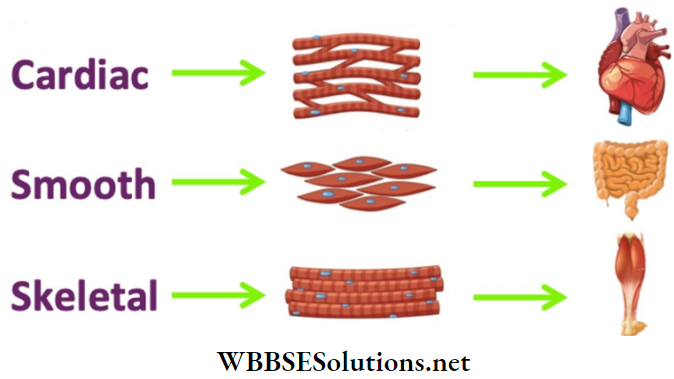
Your brain and body tell these muscles what to do without you even thinking about it. But smooth muscles are at work all over your body.
In your stomach and digestive system, they contract (tighten up) and relax to allow food to make its journey through the body. Smooth muscles are also found in your bladder.
When they are relaxed, they allow you to hold in urine until you can get to the bathroom. Then they contract so that you can push the urine out.
2. Cardiac muscles
The muscle that makes up the heart is called cardiac muscle. It is also known as the myocardium. The thick muscles of the heart contract to pump blood out and then relax to let blood in after it has circulated through the body.
Just like smooth muscle, cardiac muscle works all by itself with no help from you. A special group of cells within the heart are known as the pacemaker of the heart because it controls the heartbeat.
3. Straited muscles or Voluntary muscles
Now, let’s talk about the kind of muscle you think of when we say “muscle”-the ones that show how strong you are and let you boot a soccer ball into the goal.
These are your skeletal muscles-sometimes called striated muscles because the light and dark parts of the muscle fibers make them look striped. are voluntary muscles, which means you can control what they do.
Your leg will not bend to kick the soccer ball unless you want it to. These muscles help to make up the musculoskeletal system-the combination of your muscles and your skeleton, or bones.
Skeletal muscles are held to the bones with the help of tendons Tendons are cords made of tough tissue, and they work as special connector pieces between bone and muscle.
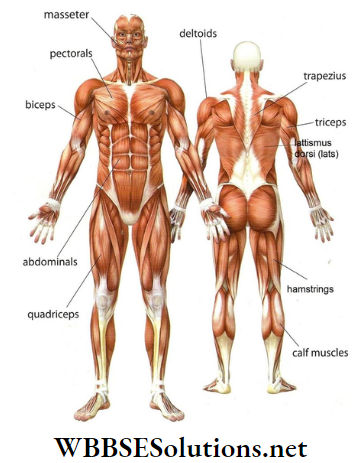
The tendons are attached so well that when you contract one of your muscles, the tendon and bone move along with it.
Skeletal muscles also give your body the power it needs to lift and push things. Muscles in your neck and the top part of your back aren’t as large, but they are capable of some pretty amazing things.
Try rotating your head around, back and forth, and up and down to feel the power of the muscles in your neck. These muscles also hold your head high.
How do muscles work? Muscles work by expanding and contracting. Muscles have long, thin cells that are grouped into bundles.
When a muscle fiber gets a signal from its nerve, proteins, and chemicals release energy to either contract the muscle or relax it.
When the muscle contracts, this pulls the bones it’s connected to, closer together. Many of our muscles come in pairs. An example of this is the biceps and triceps in our arms.
When the biceps contract the triceps will relax, which allows our arm to bend. When we want to straighten our arm back out, the biceps will relax and the triceps will contract.
Muscle pairs allow us to move back and forth. Caring muscles Muscles get most of their energy from glucose.
Glucose is made from several types of carbohydrates such as sucrose (which is usually called sugar), lactose (from milk), or fructose (from fruits).
When muscles need to get energy from glucose they do this by changing the glucose into other chemicals such as water and carbon dioxide which release the energy.
We sometimes call this ‘burning’ glucose. They use the oxygen being carried in the blood to help them do this.
Muscles need to move to remain healthy and strong. You can help your muscles stay strong and healthy by exercising every day and using moms have different sets of muscles when they exercise.
When you exercise a lot, your muscles become tired from all the contracting and relaxing. Your muscles might get hurt then.
Have you ever had a cramp? This is when your muscles seem to lock up, and you have a pain in your foot or your leg, or a ‘stitch’ in your side.
This happens when one or more of your muscles contract and will not relax again (called a spasm).
Sweating and not drinking enough on a hot day may mean that you are more likely to get a muscle cramp.
Try drinking water, and stretching and massaging the muscle that hurts and it will get better.
Diseases that can affect muscles: Polio is a virus that attacks the spinal cord. The brain can’t send messages to the muscles and they stop working.
Not long ago a lot of kids would catch this illness, but nowadays not many people get poliomyelitis (that’s its full name) because kids are given an immunization against it.

Tetanus also affects muscles and kids have already had ‘shots’ to stop them from getting this too. There are some other diseases that can affect muscles.
If a person spends long hours in front of a computer then he may sustain injuries from occupational poor posture. The most common such injuries are
- Mouse shoulder.
- Computer back
- Lumbar strains and sprains
- Disc injuries
- Tennis elbow.
Question 8. Describe the synovial joint.
Answer:
Bones, Bone-Joints, and Muscles
Every time you move your body from place to place, your bones, muscles, and joints are working together. The bones that make up your skeletal system provide shape and protection.
Your skull protects your brain, your backbones protect your spinal cord and your ribs protect your heart and lungs.
Wherever two bones meet, there is a joint to hold them together and allow them to move, but there would be no movement without the 650 muscles that make up your muscular system.
Bones form the structural framework for our body, while muscles are responsible for pulling the joints, allowing us to move.
The cartilage, muscles, ligaments, and tendons, all work as one, holding bones together and letting joints move. Muscles connect the joints to the bones.
Flexing of the muscles and the ability to bend at the joints moves the bones to accomplish skilled body motions.
1. Bones
Bones make up the framework of our bodies. We call this framework the skeleton. Bones are living, growing, and changing parts of our bodies.
Baby skeletons are made up of more than 300 parts, but by the time we become adults we only have 206 bones. No, we don’t lose any.
It’s just that some of our baby bones are made, partly or completely, of cartilage. As we grow bigger and heavier, cartilage is slowly replaced by harder bone.
Some smaller bones are joined together to make one bigger bone.
Bones are largely made of calcium and other minerals. They are hard enough to support our weight and daily stress. Bones protect our major organs and give our bodies shape.
Bones are actually living tissue. The center of the bone, or marrow, is where your blood is created.
Parts of bones: Most bones have 4 parts:
- The outside part of the bone is called the periosteum. This is a thin but very dense layer that has the nerves and blood vessels which nourish the bone.
- Compact bone is next. It is smooth and very hard.
- Cancellous bone comes next and this looks a bit like a sponge but is much stronger.
- On the very inside of many bones is the bone marrow. It looks a bit like a jelly and it makes new blood cells for the body.
Functions of bones:
- The bones of the skeleton give us our shape and our posture. Without our spine (backbone) and leg bones, we would be unable to stand erect. Bones also protect the softer parts of our bodies.
- The skull is like a natural helmet that protects the brain.
- The spine protects the nerves in the spinal column.
- The rib makes a shield around our lungs and heart.
- They act as a base for muscles, ligaments, and tendons. Ligaments connect bones to bones and tendons connect muscles to bones.
- They all work together to help us move around.

Different major bony parts of our body
- Some bones protect the brain. You can feel the bone at the back of your head and forehead.
- Some bones make the framework for your face. You can feel the bones around your eyes.
- Some bones in the middle part of your ear carry sound from your eardrum to the inner De ear.
- You can feel the jawbone under your chin and where it hinges just under your ear. It is the only bone in your skull that you can move.
2. Spine (Vertebral Column)
The spine has 26 bones which are like circles with wings on the sides and back. They are called vertebrae. There are small discs made of cartilage between each vertebra.
They act like shock absorbers and stop the bones from rubbing against each other. There is also a hole through each of the vertebrae where the spinal cord goes.
- The top 7 are called the cervical vertebrae and they support your head and neck.
- The next 12 are called the thoracic vertebrae. These hold one end of your ribs.
- The next 5 are the lumber vertebrae.
- The next, the sacrum, is a large bone that is actually made of 5 vertebrae fused (joined) together.
- At the bottom of the spine is the coccyx, which is one bone made of 4 small vertebrae fused together.

3. Ribs
Ribs make a protective cage around your lungs and heart. There are usually 12 pairs of ribs, each pair attached to the spine at the back.
Each rib is attached to the ribs above and below it by muscles and ligaments.
- At the front of the body, the top 7 ribs are attached to the sternum (or breast bone).
- The next 3 pairs are joined to the ribs above and to the sternum, by cartilage.
- The last 2 pairs of ribs are called the ‘floating’ ribs. They are called floating because they are attached only to the vertebrae and not to the sternum. They don’t have sharp edges sticking out.
4. Arms
Each arm is fastened to the scapula (the shoulder blade) at the back, (which is a triangle-shaped bone near the top of the ribs) and to the clavicle at the front (the collar bone).
The arm has 3 bones-the humerus, the radius, and the ulna. The humerus is the bone between your shoulder and the elbow.
The radius and ulna bones go from the elbow to the wrist. At the end of the radius and ulna is your wrist. Your wrist has 8 small bones, so it is really flexible. In each hand, there are 19 bones.
5. Legs
Your legs are fastened to your pelvis at the hips. The pelvis is shaped like a bowl and supports the contents of your tummy.
- Legs need to be large and strong to support something to pull them. This job is done by the rest of the body.
- The femur is the largest bone in the body and it goes from the pelvis to the knee.
- Another bone called the patella, or kneecap covers the knee joint to protect it.
- Below the knee, there are 2 bones. These are the tibia and the fibula. They join up to a large bone in the ankle called the talus.
- There are 6 other bones here so you can move your ankle around but you cannot move it as much as you can move your wrist. Your feet and ankles have a total of 52 bones in them.
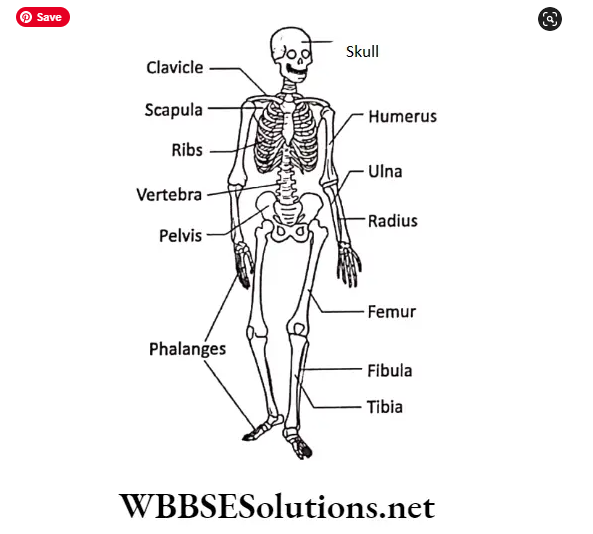
Common orthopedic problems:
Anything that is concerned with muscles, ligaments, and joints is considered orthopedic. Some common problems are
- Arthritis is a rheumatic disease that has symptoms of pain, limited movement, swelling, and pain in connective tissues.
- Osteoarthritis is a degenerative joint disease that middle-aged and older adults experience. The joint cartilage breaks down with the progress of your age and it can occur in the hands, knees, spine, or hips.
- Rheumatoid arthritis is a disease listed in the orthopedic section that causes severe inflammation of the joints. joints. The inflammation is so severe that the functioning of the extremities becomes severely limited.
- Fractures are definite orthopedic problems.
- Low back pain is an orthopedic condition that affects one in ten people. Low back pain presents from mild and annoying to persistent and severe.
- Neck pain can come from injuries or damage to the muscles and ligaments of the neck, a herniated cervical disk of arthritis.
2. Bone Joints
The human body moves in many different ways. You can bend, stretch, turn, and twist. You can move because your bones move at your joints, places where your bones meet.
But your bones can’t move by themselves-they need muscles, which are joined to your bones in order to move them.
There are many joints that help your body move. When you turn your head, bend your knees, or twist your wrists, your joints are in action. Some joints, such as those in your skull, do not move.
These are called fixed joints. Each of the other kinds of joints does a specific type of movement.
What are joints? Joints are places where bones meet. The study of joints is called “arthrology”, which is derived from the Greek words “Atheros” meaning joint, and “logos” meaning study.
One bone can have two or more joints. An example is your jaw or mandible. It is connected to the temporal bones on either side of your skull.
You can feel these joints when you place your hands on the junction of your cheeks and your ears and simulate chewing motions.
What are the functions of your joints:
Aside from smooth movement, joints also have other functions. They allow you to grow. When your brain grows, the sutures in your skull accommodate.
The primary cartilaginous joints of your knees and elbows allow you to grow to your full height. Joints also serve to minimize friction and cushion the bones against impact.
Joints are very important areas in your body. They give you space for growth and allow you to move the way you want.
What are the classifications of joints:
Joints can be classified according to what material unites the bones. The three main types of joints are fibrous joints, cartilaginous joints, and synovial joints.
Fibrous joints are joined by fibrous tissue cartilaginous joints are united by cartilage or a mix of cartilage and fibrous tissue; synovial joints are connected by a synovial membrane that surrounds the joint cavity.
1. Fibrous joints:
The movement allowed by these joints is dependent on the length of the fibrous tissue connecting the bones. In the skull, these joints are called sutures.
Sutures are connected by strong connective tissues and allow very little or no movement in adults. These are known as immovable joints.

2. Cartilaginous joints:
These joints can be primary cartilaginous joints and secondary cartilaginous joints. Primary cartilaginous joints are connected by cartilage temporarily, early in life.
An example is your knee joint. Later on, the cartilage becomes bone. Secondary cartilaginous joints. consist of bones with the ends covered by cartilage and connected with fibrous. tissue.
These joints are found in the vertebral column and allow slight movement. These are known as partly movable joints.
3. Synovial joints:
These joints are present in the shoulder, hip, knee, ankle, toes, elbow, and the joints of the limbs including the loot fingers.
Their name is derived from the fact sling that they have synovial fluid and is du enclosed within a synovial capsule.
Joints allow considerable movement but have ligaments to prevent excessive movement. These are known as movable lee joints.
What are the types of synovial joints?
Synovial joints can be categorized into six types based on the movement they allow. The first type, a plane joint, allows gliding or sliding movement, and the bones involved usually have flat surfaces.
An example of a plane joint is found in the shoulder, between the shoulder blade (acromion of the scapula) and the clavicle.
A hinge joint can move in the axis at a right angle to the joints involved. An example is the elbow joint, which connects the humerus and the ulna.
The movement allowed by this joint includes flexion (bending) and extension (straightening) of your elbow.
The third type of synovial joint is the condyloid joint.
In Greek, “condyloid” means knuckle-like. This type of joint allows movement in two axes. Therefore you can bend it, straighten it, move it from side to side, and rotate it.
An example is your wrist joint. song yen send scrawled The fourth synovial joint type is the saddle joint.

This joint is so-named because the opposing surfaces of the involved bones look like a saddle-one has a convex surface, while the other has a concave surface.
The thumb joint, which can also move in two axes, is a good example of this joint.
Ball and socket joints are perhaps the most versatile synovial joints. They are multi-axial joints, which means they can move in many axes. One joint has a ball and the other joint has a socket.
The shoulder joint and the hip joints are examples of this type. In the hip joint, the ball is the head of the leg bone (femur) while the socket is the acetabulum of the hip (pelvis).
Try to experiment with the kinds of movement you can make with your hip joint. You can bend, flex, open, close, rotate and circularly move your legs.
These movements of the hip joint are very important for ballerinas and dancers who have complex leg routines.
The last type of synovial joint is the pivot joint. These joints only allow rotation. One bone serves like a ring while the other bone has a rounded process rotating within the ring.
This type is found in your neck, particularly in your first two cervical bones called the atlas (the ring) and the dens (the rounded process). This allows you to rotate your head.
Problems of bone joints:
Joints form the connections between bones. They provide support and help you move. Any damage to the joints from disease or injury can interfere with your movement and cause a lot of pain.
Joint pain can be caused by injury affecting any of the ligaments, bursae, or tendons surrounding the joint. Injury can also affect the ligaments, cartilage, and bones within the joint.
Many different conditions can lead to painful joints including osteoarthritis, rheumatoid arthritis, bursitis, gout, strains, sprains, and other injuries. Joint pain is extremely common.
Joint pain can range from mildly irritating to debilitating. It may go away after a few weeks (acute), or last for several weeks or months (chronic).
Even short-term pain and swelling in the joints can affect your quality of life. Whatever the cause of joint pain, you can usually manage it with medication, physical therapy, or alternative treatments.
3. Muscles
Did you know you have more than 600 muscles in your body? They do everything from pumping blood throughout your body to helping you lift your heavy backpack.
You control some of your muscles, while others–like your heart- do their jobs without you thinking about them at all.
Muscles are all made of the same material, a type of elastic tissue (sort of like the material in a rubber band). Thousands or even tens of thousands of small fibers make up each muscle.
Types of muscles:
You have three different types of muscles in your body: smooth muscle, cardiac muscle, and skeletal muscle.
1. Smooth muscles or Involuntary muscles
Smooth muscles-sometimes also called involuntary muscles-are usually in sheets, or layers, with one layer of muscle behind the other. You cannot control this type of muscle.

Your brain and body tell these muscles what to do without you even thinking about it. But smooth muscles are at work all over your body.
In your stomach and digestive system, they contract (tighten up) and relax to allow food to make its journey through the body. Smooth muscles are also found in your bladder.
When they are relaxed, they allow you to hold in urine until you can get to the bathroom. Then they contract so that you can push the urine out.
2. Cardiac muscles
The muscle that makes up the heart is called cardiac muscle. It is also known as the myocardium. The thick muscles of the heart contract to pump blood out and then relax to let blood in after it has circulated through the body.
Just like smooth muscle, cardiac muscle works all by itself with no help from you. A special group of cells within the heart are known as the pacemaker of the heart because it controls the heartbeat.
3. Straited muscles or Voluntary muscles
Now, let’s talk about the kind of muscle you think of when we say “muscle”-the ones that show how strong you are and let you boot a soccer ball into the goal.
These are your skeletal muscles-sometimes called striated muscles because the light and dark parts of the muscle fibers make them look striped. are voluntary muscles, which means you can control what they do.
Your leg will not bend to kick the soccer ball unless you want it to. These muscles help to make up the musculoskeletal system-the combination of your muscles and your skeleton, or bones.
Skeletal muscles are held to the bones with the help of tendons Tendons are cords made of tough tissue, and they work as special connector pieces between bone and muscle.

The tendons are attached so well that when you contract one of your muscles, the tendon and bone move along with it.
Skeletal muscles also give your body the power it needs to lift and push things. Muscles in your neck and the top part of your back aren’t as large, but they are capable of some pretty amazing things.
Try rotating your head around, back and forth, and up and down to feel the power of the muscles in your neck. These muscles also hold your head high.
How do muscles work? Muscles work by expanding and contracting. Muscles have long, thin cells that are grouped into bundles.
When a muscle fiber gets a signal from its nerve, proteins, and chemicals release energy to either contract the muscle or relax it.
When the muscle contracts, this pulls the bones it’s connected to, closer together. Many of our muscles come in pairs. An example of this is the biceps and triceps in our arms.
When the biceps contract the triceps will relax, which allows our arm to bend. When we want to straighten our arm back out, the biceps will relax and the triceps will contract.
Muscle pairs allow us to move back and forth. Caring muscles Muscles get most of their energy from glucose.
Glucose is made from several types of carbohydrates such as sucrose (which is usually called sugar), lactose (from milk), or fructose (from fruits).
When muscles need to get energy from glucose they do this by changing the glucose into other chemicals such as water and carbon dioxide which release the energy.
We sometimes call this ‘burning’ glucose. They use the oxygen being carried in the blood to help them do this.
Muscles need to move to remain healthy and strong. You can help your muscles stay strong and healthy by exercising every day and using moms have different sets of muscles when they exercise.
When you exercise a lot, your muscles become tired from all the contracting and relaxing. Your muscles might get hurt then.
Have you ever had a cramp? This is when your muscles seem to lock up, and you have a pain in your foot or your leg, or a ‘stitch’ in your side.
This happens when one or more of your muscles contract and will not relax again (called a spasm).
Sweating and not drinking enough on a hot day may mean that you are more likely to get a muscle cramp.
Try drinking water, and stretching and massaging the muscle that hurts and it will get better.
Diseases that can affect muscles: Polio is a virus that attacks the spinal cord. The brain can’t send messages to the muscles and they stop working.
Not long ago a lot of kids would catch this illness, but nowadays not many people get poliomyelitis (that’s its full name) because kids are given an immunization against it.

Tetanus also affects muscles and kids have already had ‘shots’ to stop them from getting this too. There are some other diseases that can affect muscles.
If a person spends long hours in front of a computer then he may sustain injuries from occupational poor posture. The most common such injuries are
- Mouse shoulder.
- Computer back
- Lumbar strains and sprains
- Disc injuries
- Tennis elbow.
Question 9. Write about different types of muscles found in our body.
Answer:
Bones, Bone-Joints, and Muscles
Every time you move your body from place to place, your bones, muscles, and joints are working together. The bones that make up your skeletal system provide shape and protection.
Your skull protects your brain, your backbones protect your spinal cord and your ribs protect your heart and lungs.
Wherever two bones meet, there is a joint to hold them together and allow them to move, but there would be no movement without the 650 muscles that make up your muscular system.
Bones form the structural framework for our body, while muscles are responsible for pulling the joints, allowing us to move.
The cartilage, muscles, ligaments, and tendons, all work as one, holding bones together and letting joints move. Muscles connect the joints to the bones.
Flexing of the muscles and the ability to bend at the joints moves the bones to accomplish skilled body motions.
1. Bones
Bones make up the framework of our bodies. We call this framework the skeleton. Bones are living, growing, and changing parts of our bodies.
Baby skeletons are made up of more than 300 parts, but by the time we become adults we only have 206 bones. No, we don’t lose any.
It’s just that some of our baby bones are made, partly or completely, of cartilage. As we grow bigger and heavier, cartilage is slowly replaced by harder bone.
Some smaller bones are joined together to make one bigger bone.
Bones are largely made of calcium and other minerals. They are hard enough to support our weight and daily stress. Bones protect our major organs and give our bodies shape.
Bones are actually living tissue. The center of the bone, or marrow, is where your blood is created.
Parts of bones: Most bones have 4 parts:
- The outside part of the bone is called the periosteum. This is a thin but very dense layer that has the nerves and blood vessels which nourish the bone.
- Compact bone is next. It is smooth and very hard.
- Cancellous bone comes next and this looks a bit like a sponge but is much stronger.
- On the very inside of many bones is the bone marrow. It looks a bit like a jelly and it makes new blood cells for the body.
Functions of bones:
- The bones of the skeleton give us our shape and our posture. Without our spine (backbone) and leg bones, we would be unable to stand erect. Bones also protect the softer parts of our bodies.
- The skull is like a natural helmet that protects the brain.
- The spine protects the nerves in the spinal column.
- The rib makes a shield around our lungs and heart.
- They act as a base for muscles, ligaments, and tendons. Ligaments connect bones to bones and tendons connect muscles to bones.
- They all work together to help us move around.

Different major bony parts of our body
- Some bones protect the brain. You can feel the bone at the back of your head and forehead.
- Some bones make the framework for your face. You can feel the bones around your eyes.
- Some bones in the middle part of your ear carry sound from your eardrum to the inner De ear.
- You can feel the jawbone under your chin and where it hinges just under your ear. It is the only bone in your skull that you can move.
2. Spine (Vertebral Column)
The spine has 26 bones which are like circles with wings on the sides and back. They are called vertebrae. There are small discs made of cartilage between each vertebra.
They act like shock absorbers and stop the bones from rubbing against each other. There is also a hole through each of the vertebrae where the spinal cord goes.
- The top 7 are called the cervical vertebrae and they support your head and neck.
- The next 12 are called the thoracic vertebrae. These hold one end of your ribs.
- The next 5 are the lumber vertebrae.
- The next, the sacrum, is a large bone that is actually made of 5 vertebrae fused (joined) together.
- At the bottom of the spine is the coccyx, which is one bone made of 4 small vertebrae fused together.

3. Ribs
Ribs make a protective cage around your lungs and heart. There are usually 12 pairs of ribs, each pair attached to the spine at the back.
Each rib is attached to the ribs above and below it by muscles and ligaments.
- At the front of the body, the top 7 ribs are attached to the sternum (or breast bone).
- The next 3 pairs are joined to the ribs above and to the sternum, by cartilage.
- The last 2 pairs of ribs are called the ‘floating’ ribs. They are called floating because they are attached only to the vertebrae and not to the sternum. They don’t have sharp edges sticking out.
4. Arms
Each arm is fastened to the scapula (the shoulder blade) at the back, (which is a triangle-shaped bone near the top of the ribs) and to the clavicle at the front (the collar bone).
The arm has 3 bones-the humerus, the radius, and the ulna. The humerus is the bone between your shoulder and the elbow.
The radius and ulna bones go from the elbow to the wrist. At the end of the radius and ulna is your wrist. Your wrist has 8 small bones, so it is really flexible. In each hand, there are 19 bones.
5. Legs
Your legs are fastened to your pelvis at the hips. The pelvis is shaped like a bowl and supports the contents of your tummy.
- Legs need to be large and strong to support something to pull them. This job is done by the rest of the body.
- The femur is the largest bone in the body and it goes from the pelvis to the knee.
- Another bone called the patella, or kneecap covers the knee joint to protect it.
- Below the knee, there are 2 bones. These are the tibia and the fibula. They join up to a large bone in the ankle called the talus.
- There are 6 other bones here so you can move your ankle around but you cannot move it as much as you can move your wrist. Your feet and ankles have a total of 52 bones in them.

Common orthopedic problems:
Anything that is concerned with muscles, ligaments, and joints is considered orthopedic. Some common problems are
- Arthritis is a rheumatic disease that has symptoms of pain, limited movement, swelling, and pain in connective tissues.
- Osteoarthritis is a degenerative joint disease that middle-aged and older adults experience. The joint cartilage breaks down with the progress of your age and it can occur in the hands, knees, spine, or hips.
- Rheumatoid arthritis is a disease listed in the orthopedic section that causes severe inflammation of the joints. joints. The inflammation is so severe that the functioning of the extremities becomes severely limited.
- Fractures are definite orthopedic problems.
- Low back pain is an orthopedic condition that affects one in ten people. Low back pain presents from mild and annoying to persistent and severe.
- Neck pain can come from injuries or damage to the muscles and ligaments of the neck, a herniated cervical disk of arthritis.
2. Bone Joints
The human body moves in many different ways. You can bend, stretch, turn, and twist. You can move because your bones move at your joints, places where your bones meet.
But your bones can’t move by themselves-they need muscles, which are joined to your bones in order to move them.
There are many joints that help your body move. When you turn your head, bend your knees, or twist your wrists, your joints are in action. Some joints, such as those in your skull, do not move.
These are called fixed joints. Each of the other kinds of joints does a specific type of movement.
What are joints? Joints are places where bones meet. The study of joints is called “arthrology”, which is derived from the Greek words “Atheros” meaning joint, and “logos” meaning study.
One bone can have two or more joints. An example is your jaw or mandible. It is connected to the temporal bones on either side of your skull.
You can feel these joints when you place your hands on the junction of your cheeks and your ears and simulate chewing motions.
What are the functions of your joints:
Aside from smooth movement, joints also have other functions. They allow you to grow. When your brain grows, the sutures in your skull accommodate.
The primary cartilaginous joints of your knees and elbows allow you to grow to your full height. Joints also serve to minimize friction and cushion the bones against impact.
Joints are very important areas in your body. They give you space for growth and allow you to move the way you want.
What are the classifications of joints:
Joints can be classified according to what material unites the bones. The three main types of joints are fibrous joints, cartilaginous joints, and synovial joints.
Fibrous joints are joined by fibrous tissue cartilaginous joints are united by cartilage or a mix of cartilage and fibrous tissue; synovial joints are connected by a synovial membrane that surrounds the joint cavity.
1. Fibrous joints:
The movement allowed by these joints is dependent on the length of the fibrous tissue connecting the bones. In the skull, these joints are called sutures.
Sutures are connected by strong connective tissues and allow very little or no movement in adults. These are known as immovable joints.

2. Cartilaginous joints:
These joints can be primary cartilaginous joints and secondary cartilaginous joints. Primary cartilaginous joints are connected by cartilage temporarily, early in life.
An example is your knee joint. Later on, the cartilage becomes bone. Secondary cartilaginous joints. consist of bones with the ends covered by cartilage and connected with fibrous. tissue.
These joints are found in the vertebral column and allow slight movement. These are known as partly movable joints.
3. Synovial joints:
These joints are present in the shoulder, hip, knee, ankle, toes, elbow, and the joints of the limbs including the loot fingers.
Their name is derived from the fact sling that they have synovial fluid and is du enclosed within a synovial capsule.
joints allow considerable movement but have ligaments to prevent excessive movement. These are known as movable lee joints.
What are the types of synovial joints?
Synovial joints can be categorized into six types based on the movement they allow. The first type, a plane joint, allows gliding or sliding movement, and the bones involved usually have flat surfaces.
An example of a plane joint is found in the shoulder, between the shoulder blade (acromion of the scapula) and the clavicle.
A hinge joint can move in the axis at a right angle to the joints involved. An example is the elbow joint, which connects the humerus and the ulna.
The movement allowed by this joint includes flexion (bending) and extension (straightening) of your elbow.
The third type of synovial joint is the condyloid joint.
In Greek, “condyloid” means knuckle-like. This type of joint allows movement in two axes. Therefore you can bend it, straighten it, move it from side to side, and rotate it.
An example is your wrist joint. song yen send scrawled The fourth synovial joint type is the saddle joint.

This joint is so-named because the opposing surfaces of the involved bones look like a saddle-one has a convex surface, while the other has a concave surface.
The thumb joint, which can also move in two axes, is a good example of this joint.
Ball and socket joints are perhaps the most versatile synovial joints. They are multi-axial joints, which means they can move in many axes. One joint has a ball and the other joint has a socket.
The shoulder joint and the hip joints are examples of this type. In the hip joint, the ball is the head of the leg bone (femur) while the socket is the acetabulum of the hip (pelvis).
Try to experiment with the kinds of movement you can make with your hip joint. You can bend, flex, open, close, rotate and circularly move your legs.
These movements of the hip joint are very important for ballerinas and dancers who have complex leg routines.
The last type of synovial joint is the pivot joint. These joints only allow rotation. One bone serves like a ring while the other bone has a rounded process rotating within the ring.
This type is found in your neck, particularly in your first two cervical bones called the atlas (the ring) and the dens (the rounded process). This allows you to rotate your head.
Problems of bone joints:
Joints form the connections between bones. They provide support and help you move. Any damage to the joints from disease or injury can interfere with your movement and cause a lot of pain.
Joint pain can be caused by injury affecting any of the ligaments, bursae, or tendons surrounding the joint. Injury can also affect the ligaments, cartilage, and bones within the joint.
Many different conditions can lead to painful joints including osteoarthritis, rheumatoid arthritis, bursitis, gout, strains, sprains, and other injuries. Joint pain is extremely common.
Joint pain can range from mildly irritating to debilitating. It may go away after a few weeks (acute), or last for several weeks or months (chronic).
Even short-term pain and swelling in the joints can affect your quality of life. Whatever the cause of joint pain, you can usually manage it with medication, physical therapy, or alternative treatments.
3. Muscles
Did you know you have more than 600 muscles in your body? They do everything from pumping blood throughout your body to helping you lift your heavy backpack.
You control some of your muscles, while others–like your heart- do their jobs without you thinking about them at all.
Muscles are all made of the same material, a type of elastic tissue (sort of like the material in a rubber band). Thousands or even tens of thousands of small fibers make up each muscle.
Types of muscles:
You have three different types of muscles in your body: smooth muscle, cardiac muscle, and skeletal muscle.
1. Smooth muscles or Involuntary muscles
Smooth muscles-sometimes also called involuntary muscles-are usually in sheets, or layers, with one layer of muscle behind the other. You cannot control this type of muscle.

Your brain and body tell these muscles what to do without you even thinking about it. But smooth muscles are at work all over your body.
In your stomach and digestive system, they contract (tighten up) and relax to allow food to make its journey through the body. Smooth muscles are also found in your bladder.
When they are relaxed, they allow you to hold in urine until you can get to the bathroom. Then they contract so that you can push the urine out.
2. Cardiac muscles
The muscle that makes up the heart is called cardiac muscle. It is also known as the myocardium. The thick muscles of the heart contract to pump blood out and then relax to let blood in after it has circulated through the body.
Just like smooth muscle, cardiac muscle works all by itself with no help from you. A special group of cells within the heart are known as the pacemaker of the heart because it controls the heartbeat.
3. Straited muscles or Voluntary muscles
Now, let’s talk about the kind of muscle you think of when we say “muscle”-the ones that show how strong you are and let you boot a soccer ball into the goal.
These are your skeletal muscles-sometimes called striated muscles because the light and dark parts of the muscle fibers make them look striped. are voluntary muscles, which means you can control what they do.
Your leg will not bend to kick the soccer ball unless you want it to. These muscles help to make up the musculoskeletal system-the combination of your muscles and your skeleton, or bones.
Skeletal muscles are held to the bones with the help of tendons Tendons are cords made of tough tissue, and they work as special connector pieces between bone and muscle.

The tendons are attached so well that when you contract one of your muscles, the tendon and bone move along with it.
Skeletal muscles also give your body the power it needs to lift and push things. Muscles in your neck and the top part of your back aren’t as large, but they are capable of some pretty amazing things.
Try rotating your head around, back and forth, and up and down to feel the power of the muscles in your neck. These muscles also hold your head high.
How do muscles work? Muscles work by expanding and contracting. Muscles have long, thin cells that are grouped into bundles.
When a muscle fiber gets a signal from its nerve, proteins, and chemicals release energy to either contract the muscle or relax it.
When the muscle contracts, this pulls the bones it’s connected to, closer together. Many of our muscles come in pairs. An example of this is the biceps and triceps in our arms.
When the biceps contract the triceps will relax, which allows our arm to bend. When we want to straighten our arm back out, the biceps will relax and the triceps will contract.
Muscle pairs allow us to move back and forth. Caring muscles Muscles get most of their energy from glucose.
Glucose is made from several types of carbohydrates such as sucrose (which is usually called sugar), lactose (from milk), or fructose (from fruits).
When muscles need to get energy from glucose they do this by changing the glucose into other chemicals such as water and carbon dioxide which release the energy.
We sometimes call this ‘burning’ glucose. They use the oxygen being carried in the blood to help them do this.
Muscles need to move to remain healthy and strong. You can help your muscles stay strong and healthy by exercising every day and using moms have different sets of muscles when they exercise.
When you exercise a lot, your muscles become tired from all the contracting and relaxing. Your muscles might get hurt then.
Have you ever had a cramp? This is when your muscles seem to lock up, and you have a pain in your foot or your leg, or a ‘stitch’ in your side.
This happens when one or more of your muscles contract and will not relax again (called a spasm).
Sweating and not drinking enough on a hot day may mean that you are more likely to get a muscle cramp.
Try drinking water, and stretching and massaging the muscle that hurts and it will get better.
Diseases that can affect muscles: Polio is a virus that attacks the spinal cord. The brain can’t send messages to the muscles and they stop working.
Not long ago a lot of kids would catch this illness, but nowadays not many people get poliomyelitis (that’s its full name) because kids are given an immunization against it.

Tetanus also affects muscles and kids have already had ‘shots’ to stop them from getting this too. There are some other diseases that can affect muscles.
If a person spends long hours in front of a computer then he may sustain injuries from occupational poor posture. The most common such injuries are
- Mouse shoulder.
- Computer back
- Lumbar strains and sprains
- Disc injuries
- Tennis elbow.
Question 10. Describe the methods of caring for muscles.
Answer:
Bones, Bone-Joints, and Muscles
Every time you move your body from place to place, your bones, muscles, and joints are working together. The bones that make up your skeletal system provide shape and protection.
Your skull protects your brain, your backbones protect your spinal cord and your ribs protect your heart and lungs.
Wherever two bones meet, there is a joint to hold them together and allow them to move, but there would be no movement without the 650 muscles that make up your muscular system.
Bones form the structural framework for our body, while muscles are responsible for pulling the joints, allowing us to move.
The cartilage, muscles, ligaments, and tendons, all work as one, holding bones together and letting joints move. Muscles connect the joints to the bones.
Flexing of the muscles and the ability to bend at the joints moves the bones to accomplish skilled body motions.
1. Bones
Bones make up the framework of our bodies. We call this framework the skeleton. Bones are living, growing, and changing parts of our bodies.
Baby skeletons are made up of more than 300 parts, but by the time we become adults we only have 206 bones. No, we don’t lose any.
It’s just that some of our baby bones are made, partly or completely, of cartilage. As we grow bigger and heavier, cartilage is slowly replaced by harder bone.
Some smaller bones are joined together to make one bigger bone.
Bones are largely made of calcium and other minerals. They are hard enough to support our weight and daily stress. Bones protect our major organs and give our bodies shape.
Bones are actually living tissue. The center of the bone, or marrow, is where your blood is created.
Parts of bones: Most bones have 4 parts:
- The outside part of the bone is called the periosteum. This is a thin but very dense layer that has the nerves and blood vessels which nourish the bone.
- Compact bone is next. It is smooth and very hard.
- Cancellous bone comes next and this looks a bit like a sponge but is much stronger.
- On the very inside of many bones is the bone marrow. It looks a bit like a jelly and it makes new blood cells for the body.
Functions of bones:
- The bones of the skeleton give us our shape and our posture. Without our spine (backbone) and leg bones, we would be unable to stand erect. Bones also protect the softer parts of our bodies.
- The skull is like a natural helmet that protects the brain.
- The spine protects the nerves in the spinal column.
- The rib makes a shield around our lungs and heart.
- They act as a base for muscles, ligaments, and tendons. Ligaments connect bones to bones and tendons connect muscles to bones.
- They all work together to help us move around.

Different major bony parts of our body
- Some bones protect the brain. You can feel the bone at the back of your head and forehead.
- Some bones make the framework for your face. You can feel the bones around your eyes.
- Some bones in the middle part of your ear carry sound from your eardrum to the inner De ear.
- You can feel the jawbone under your chin and where it hinges just under your ear. It is the only bone in your skull that you can move.
2. Spine (Vertebral Column)
The spine has 26 bones which are like circles with wings on the sides and back. They are called vertebrae. There are small discs made of cartilage between each vertebra.
They act like shock absorbers and stop the bones from rubbing against each other. There is also a hole through each of the vertebrae where the spinal cord goes.
- The top 7 are called the cervical vertebrae and they support your head and neck.
- The next 12 are called the thoracic vertebrae. These hold one end of your ribs.
- The next 5 are the lumber vertebrae.
- The next, the sacrum, is a large bone that is actually made of 5 vertebrae fused (joined) together.
- At the bottom of the spine is the coccyx, which is one bone made of 4 small vertebrae fused together.

3. Ribs
Ribs make a protective cage around your lungs and heart. There are usually 12 pairs of ribs, each pair attached to the spine at the back.
Each rib is attached to the ribs above and below it by muscles and ligaments.
- At the front of the body, the top 7 ribs are attached to the sternum (or breast bone).
- The next 3 pairs are joined to the ribs above and to the sternum, by cartilage.
- The last 2 pairs of ribs are called the ‘floating’ ribs. They are called floating because they are attached only to the vertebrae and not to the sternum. They don’t have sharp edges sticking out.
4. Arms
Each arm is fastened to the scapula (the shoulder blade) at the back, (which is a triangle-shaped bone near the top of the ribs) and to the clavicle at the front (the collar bone).
The arm has 3 bones-the humerus, the radius, and the ulna. The humerus is the bone between your shoulder and the elbow.
The radius and ulna bones go from the elbow to the wrist. At the end of the radius and ulna is your wrist. Your wrist has 8 small bones, so it is really flexible. In each hand, there are 19 bones.
5. Legs
Your legs are fastened to your pelvis at the hips. The pelvis is shaped like a bowl and supports the contents of your tummy.
- Legs need to be large and strong to support something to pull them. This job is done by the rest of the body.
- The femur is the largest bone in the body and it goes from the pelvis to the knee.
- Another bone called the patella, or kneecap covers the knee joint to protect it.
- Below the knee, there are 2 bones. These are the tibia and the fibula. They join up to a large bone in the ankle called the talus.
- There are 6 other bones here so you can move your ankle around but you cannot move it as much as you can move your wrist. Your feet and ankles have a total of 52 bones in them.

Common orthopedic problems:
Anything that is concerned with muscles, ligaments, and joints is considered orthopedic. Some common problems are
- Arthritis is a rheumatic disease that has symptoms of pain, limited movement, swelling, and pain in connective tissues.
- Osteoarthritis is a degenerative joint disease that middle-aged and older adults experience. The joint cartilage breaks down with the progress of your age and it can occur in the hands, knees, spine, or hips.
- Rheumatoid arthritis is a disease listed in the orthopedic section that causes severe inflammation of the joints. joints. The inflammation is so severe that the functioning of the extremities becomes severely limited.
- Fractures are definite orthopedic problems.
- Low back pain is an orthopedic condition that affects one in ten people. Low back pain presents from mild and annoying to persistent and severe.
- Neck pain can come from injuries or damage to the muscles and ligaments of the neck, a herniated cervical disk of arthritis.
2. Bone Joints
The human body moves in many different ways. You can bend, stretch, turn, and twist. You can move because your bones move at your joints, places where your bones meet.
But your bones can’t move by themselves-they need muscles, which are joined to your bones in order to move them.
There are many joints that help your body move. When you turn your head, bend your knees, or twist your wrists, your joints are in action. Some joints, such as those in your skull, do not move.
These are called fixed joints. Each of the other kinds of joints does a specific type of movement.
What are joints? Joints are places where bones meet. The study of joints is called “arthrology”, which is derived from the Greek words “Atheros” meaning joint, and “logos” meaning study.
One bone can have two or more joints. An example is your jaw or mandible. It is connected to the temporal bones on either side of your skull.
You can feel these joints when you place your hands on the junction of your cheeks and your ears and simulate chewing motions.
What are the functions of your joints:
Aside from smooth movement, joints also have other functions. They allow you to grow. When your brain grows, the sutures in your skull accommodate.
The primary cartilaginous joints of your knees and elbows allow you to grow to your full height. Joints also serve to minimize friction and cushion the bones against impact.
Joints are very important areas in your body. They give you space for growth and allow you to move the way you want.
What are the classifications of joints:
Joints can be classified according to what material unites the bones. The three main types of joints are fibrous joints, cartilaginous joints, and synovial joints.
Fibrous joints are joined by fibrous tissue cartilaginous joints are united by cartilage or a mix of cartilage and fibrous tissue; synovial joints are connected by a synovial membrane that surrounds the joint cavity.
1. Fibrous joints:
The movement allowed by these joints is dependent on the length of the fibrous tissue connecting the bones. In the skull, these joints are called sutures.
Sutures are connected by strong connective tissues and allow very little or no movement in adults. These are known as immovable joints.

2. Cartilaginous joints:
These joints can be primary cartilaginous joints and secondary cartilaginous joints. Primary cartilaginous joints are connected by cartilage temporarily, early in life.
An example is your knee joint. Later on, the cartilage becomes bone. Secondary cartilaginous joints. consist of bones with the ends covered by cartilage and connected with fibrous. tissue.
These joints are found in the vertebral column and allow slight movement. These are known as partly movable joints.
3. Synovial joints:
These joints are present in the shoulder, hip, knee, ankle, toes, elbow, and the joints of the limbs including the loot fingers.
Their name is derived from the fact sling that they have synovial fluid and is du enclosed within a synovial capsule.
Joints allow considerable movement but have ligaments to prevent excessive movement. These are known as movable lee joints.
What are the types of synovial joints?
Synovial joints can be categorized into six types based on the movement they allow. The first type, a plane joint, allows gliding or sliding movement, and the bones involved usually have flat surfaces.
An example of a plane joint is found in the shoulder, between the shoulder blade (acromion of the scapula) and the clavicle.
A hinge joint can move in the axis at a right angle to the joints involved. An example is the elbow joint, which connects the humerus and the ulna.
The movement allowed by this joint includes flexion (bending) and extension (straightening) of your elbow.
The third type of synovial joint is the condyloid joint.
In Greek, “condyloid” means knuckle-like. This type of joint allows movement in two axes. Therefore you can bend it, straighten it, move it from side to side, and rotate it.
An example is your wrist joint. song yen send scrawled The fourth synovial joint type is the saddle joint.

This joint is so-named because the opposing surfaces of the involved bones look like a saddle-one has a convex surface, while the other has a concave surface.
The thumb joint, which can also move in two axes, is a good example of this joint.
Ball and socket joints are perhaps the most versatile synovial joints. They are multi-axial joints, which means they can move in many axes. One joint has a ball and the other joint has a socket.
The shoulder joint and the hip joints are examples of this type. In the hip joint, the ball is the head of the leg bone (femur) while the socket is the acetabulum of the hip (pelvis).
Try to experiment with the kinds of movement you can make with your hip joint. You can bend, flex, open, close, rotate and circularly move your legs.
These movements of the hip joint are very important for ballerinas and dancers who have complex leg routines.
The last type of synovial joint is the pivot joint. These joints only allow rotation. One bone serves like a ring while the other bone has a rounded process rotating within the ring.
This type is found in your neck, particularly in your first two cervical bones called the atlas (the ring) and the dens (the rounded process). This allows you to rotate your head.
Problems of bone joints:
Joints form the connections between bones. They provide support and help you move. Any damage to the joints from disease or injury can interfere with your movement and cause a lot of pain.
Joint pain can be caused by injury affecting any of the ligaments, bursae, or tendons surrounding the joint. Injury can also affect the ligaments, cartilage, and bones within the joint.
Many different conditions can lead to painful joints including osteoarthritis, rheumatoid arthritis, bursitis, gout, strains, sprains, and other injuries. Joint pain is extremely common.
Joint pain can range from mildly irritating to debilitating. It may go away after a few weeks (acute), or last for several weeks or months (chronic).
Even short-term pain and swelling in the joints can affect your quality of life. Whatever the cause of joint pain, you can usually manage it with medication, physical therapy, or alternative treatments.
3. Muscles
Did you know you have more than 600 muscles in your body? They do everything from pumping blood throughout your body to helping you lift your heavy backpack.
You control some of your muscles, while others–like your heart- do their jobs without you thinking about them at all.
Muscles are all made of the same material, a type of elastic tissue (sort of like the material in a rubber band). Thousands or even tens of thousands of small fibers make up each muscle.
Types of muscles:
You have three different types of muscles in your body: smooth muscle, cardiac muscle, and skeletal muscle.
1. Smooth muscles or Involuntary muscles
Smooth muscles-sometimes also called involuntary muscles-are usually in sheets, or layers, with one layer of muscle behind the other. You cannot control this type of muscle.

Your brain and body tell these muscles what to do without you even thinking about it. But smooth muscles are at work all over your body.
In your stomach and digestive system, they contract (tighten up) and relax to allow food to make its journey through the body. Smooth muscles are also found in your bladder.
When they are relaxed, they allow you to hold in urine until you can get to the bathroom. Then they contract so that you can push the urine out.
2. Cardiac muscles
The muscle that makes up the heart is called cardiac muscle. It is also known as the myocardium. The thick muscles of the heart contract to pump blood out and then relax to let blood in after it has circulated through the body.
Just like smooth muscle, cardiac muscle works all by itself with no help from you. A special group of cells within the heart are known as the pacemaker of the heart because it controls the heartbeat.
3. Straited muscles or Voluntary muscles
Now, let’s talk about the kind of muscle you think of when we say “muscle”-the ones that show how strong you are and let you boot a soccer ball into the goal.
These are your skeletal muscles-sometimes called striated muscles because the light and dark parts of the muscle fibers make them look striped. are voluntary muscles, which means you can control what they do.
Your leg will not bend to kick the soccer ball unless you want it to. These muscles help to make up the musculoskeletal system-the combination of your muscles and your skeleton, or bones.
Skeletal muscles are held to the bones with the help of tendons Tendons are cords made of tough tissue, and they work as special connector pieces between bone and muscle.

The tendons are attached so well that when you contract one of your muscles, the tendon and bone move along with it.
Skeletal muscles also give your body the power it needs to lift and push things. Muscles in your neck and the top part of your back aren’t as large, but they are capable of some pretty amazing things.
Try rotating your head around, back and forth, and up and down to feel the power of the muscles in your neck. These muscles also hold your head high.
How do muscles work? Muscles work by expanding and contracting. Muscles have long, thin cells that are grouped into bundles.
When a muscle fiber gets a signal from its nerve, proteins, and chemicals release energy to either contract the muscle or relax it.
When the muscle contracts, this pulls the bones it’s connected to, closer together. Many of our muscles come in pairs. An example of this is the biceps and triceps in our arms.
When the biceps contract the triceps will relax, which allows our arm to bend. When we want to straighten our arm back out, the biceps will relax and the triceps will contract.
Muscle pairs allow us to move back and forth. Caring muscles Muscles get most of their energy from glucose.
Glucose is made from several types of carbohydrates such as sucrose (which is usually called sugar), lactose (from milk), or fructose (from fruits).
When muscles need to get energy from glucose they do this by changing the glucose into other chemicals such as water and carbon dioxide which release the energy.
We sometimes call this ‘burning’ glucose. They use the oxygen being carried in the blood to help them do this.
Muscles need to move to remain healthy and strong. You can help your muscles stay strong and healthy by exercising every day and using moms have different sets of muscles when they exercise.
When you exercise a lot, your muscles become tired from all the contracting and relaxing. Your muscles might get hurt then.
Have you ever had a cramp? This is when your muscles seem to lock up, and you have a pain in your foot or your leg, or a ‘stitch’ in your side.
This happens when one or more of your muscles contract and will not relax again (called a spasm).
Sweating and not drinking enough on a hot day may mean that you are more likely to get a muscle cramp.
Try drinking water, and stretching and massaging the muscle that hurts and it will get better.
Diseases that can affect muscles: Polio is a virus that attacks the spinal cord. The brain can’t send messages to the muscles and they stop working.
Not long ago a lot of kids would catch this illness, but nowadays not many people get poliomyelitis (that’s its full name) because kids are given an immunization against it.

Tetanus also affects muscles and kids have already had ‘shots’ to stop them from getting this too. There are some other diseases that can affect muscles.
If a person spends long hours in front of a computer then he may sustain injuries from occupational poor posture. The most common such injuries are
- Mouse shoulder.
- Computer back
- Lumbar strains and sprains
- Disc injuries
- Tennis elbow.
Chapter 8 The Human Body The Growth And Development Of The Human Body Review Questions Environment Review Questions MCQ
Question 1. Rapid growth occurs during
- Adulthood
- Infancy
- Puberty
- Old age
Answer: 3. Puberty
Question 2. The head is proportionally large during
- Childhood
- Adulthood
- Old age
- None are correct
Answer: 1. Childhood
Question 3. When the rate of growth increases rapidly it is called a growth
- Spurt
- Age
- Maximum
- Final
Answer: 1. Spurt
Question 4. The peak of the growth spurt occurs at about the age of 12 for
- Boys
- Human
- Animals
- Girls
Answer: 4. Girls
Question 5. The peak of the growth spurt occurs at about the age of 14 for
- Animals
- Boys
- Girls
- Human
Answer: 2. Boys
Question 6. When a child takes the first step on his or her own, he or she is called a
- Infant
- Toddler
- Teenager
- Adult
Answer: 2. Toddler
Question 7. With age, children grow both in weight and
- Maturity
- Adulthood
- Height
- All above are correct
Answer: 3. Height
Question 8. Endocrine glands in our body produce chemical messengers called
- Hormones
- Enzymes
- Food
- Proteins
Answer: 1. Hormones
Question 9. The pituitary gland produces growth
- Substances
- Materials
- Enzymes
- Hormones
Answer: 4. Hormones
Question 10. Failure to thrive may happen when a child simply doesn’t get enough to
- Eat
- Drink
- Enjoy
- Run
Answer: 1. Eat
Question 11. The BMI is defined as the body mass divided by the square of the body
- Weight
- Height
- Growth
- None of the above
Answer: 2. Height
Question 12. Body mass index is universally expressed in units of
- Kg/m2
- Mg/cm
- G/cm2
- Height/Weight
Answer: 1. kg/m2
Chapter 8 The Human Body The Growth And Development Of The Human Body Fill In The Blanks
Question 1. There are clear stages that children pass through from _________ to adult.
Answer: Birth
Question 2. Children grow in size at a very _________ rate.
Answer: Fast
Question 3. _________ growth occurs during puberty.
Answer: Rapid
Question 4. The _________ proportions of the body at birth are very different from those of the adult.
Answer: Physical
Question 5. When the rate of growth increases rapidly it is called a growth _________.
Answer: Spurt
Question 6. The growth spurt and puberty occur at _________ ages for girls and boys.
Answer: Different
Question 7. Most babies double their birth weight at _________ months.
Answer: 5
Question 8. Glands in our body produce chemical messengers called _________.
Answer: Hormones
Question 9. _________ is the stage of your life when sexual development happens.
Answer: Puberty
Question 10. Growth hormone is produced by _________ gland.
Answer: Pituitary
Question 11. BMI stands for Body Mass _________.
Answer: Index
Question 12. BMI is a crude method to estimate _________.
Answer: Obesity
Chapter 8 The Human Body The Growth And Development Of The Human Body Identify As True Or False
Question 1. There are clear stages that children pass through from birth to adulthood.
Answer: True
Question 2. Girls generally mature before boys.
Answer: True
Question 3. At birth, infants are only about half of their adult height.
Answer: False
Question 4. Rapid growth occurs during puberty.
Answer:
Question 5. Rapid slowing down of growth occurs in adolescence until adult height is reached.
Answer: True
Question 6. When the rate of growth decreases rapidly it is called a growth spurt.
Answer: False
Question 7. The growth spurt and puberty occur at different ages for girls and boys.
Answer: True
Question 8. The changes in size and proportion are easily observed signs of development.
Answer: True
Question 9. Everyone grows and matures at the same rate.
Answer: False
Question 10. Hormones play a major role in growth.
Answer: True
Chapter 8 The Human Body The Growth And Development Of The Human Body Match The Column
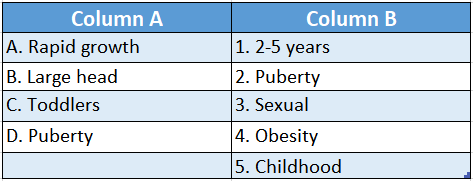
Answer: A-2,B-5,C-1,D-3
Chapter 8 The Human Body The Growth And Development Of The Human Body Answer in words or a sentence
Question 1. What type of growth occurs during infancy and childhood?
Answer: Rapid growth.
Question 2. When, during growth, legs are proportionately short?
Answer: During Childhood.
Question 3. What is the term used to denote the rate of rapid increase of growth during puberty?
Answer: Growth spurt.
Question 4. What is the period of infancy?
Answer: Birth to 2 years.
Question 5. Who are toddlers?
Answer: Children between the ages of 2-5 years.
Question 6. Name the gland which secretes growth hormone.
Answer: Pituitary gland.
Question 7. What is the full form of FTT?
Answer: Failure to Thrive.
Question 8. What is the full form of BMI?
Answer: Body Mass Index.
Chapter 8 The Human Body The Growth And Development Of The Human Body Short Answer Type Questions
Question 1. What is human development?
Answer: Human development is a lifelong process of physical, behavioral, cognitive, and emotional growth and change.
In the early stage of life- from babyhood to childhood, childhood to adolescence, and adolescence to adulthood- enormous changes take place.
Question 2. What is growth?
Answer: Growth refers to a positive change in size, and/ or maturation, often over a period of time. Growth can occur as a stage of maturation or a process toward fullness or fulfillment.
Question 3. What is a growth spurt?
Answer: When the rate of growth increases rapidly it is called a growth spurt. The most important growth spurt is the one that occurs at puberty. This spurt produces a rapid increase in both weight and height.
Question 4. How is the growth spurt of boys and girls different?
Answer: The growth spurt and puberty occur at different ages for girls and boys. Girls usually start and finish the stages of puberty and adolescence earlier than boys.
Question 5. What is psychological development?
Answer: Psychological development is the development of human beings’ cognitive, emotional, intellectual, and social capabilities and functioning over the course of the life span, from infancy through old age.
Question 6. What is adolescence?
Answer: It is the period following the onset of puberty during which a young person develops from a child into an adult.
Question 7. What is meant by growth disorder?
Answer: Growth disorders are problems that prevent children from developing normal height, weight, sexual maturity, or other features.
Question 8. What is BMI?
Answer: The body mass index (BMI) is a value derived from the mass (weight) and height of an Individual. The BMI is defined as the body mass divided by the square of the body height and is universally expressed in units of kg/m2.
Question 9. Calculate the BMI of your friend whose weight and height are 40kg and 4 feet respectively. Answer: What is your inference?
Answer:
BMI=\(\frac{Weight in kg}{(height in m)2}\)
Height = 4 feet = (4×0.305) m1.22 m
Since the BMI falls in the range of 25-29.9, my friend belongs to the overweight category. He should carry out a little bit of exercise to control his body weight in proportion to his height.
Chapter 8 The Human Body The Growth And Development Of The Human Body Long Answer Type Questions
Question 1. Write about the patterns of human growth.
Answer:
The Growth And Development Of The Human Body
There are clear stages that children pass through from birth to adulthood. These stages are the same for boys and girls, but girls generally mature before boys. This is clearly shown in the diagram below.
Physical development:
Physical growth is obviously important to performance. We will start by looking at how the body changes during development.
There are important changes in body size and proportions. These changes affect the way where children can perform different skills and activities. our gas Patterns of growth ou mot varans
1. Changes in size
Children grow in size at a very fast rate. At birth, infants are only about a quarter of their adult height.
This final adult height is usually reached at about twenty years of age. There are four characteristic stages of growth from birth to adulthood.
- Rapid growth in infancy and early childhood
- Slow, steady growth in middle childhood
- Rapid growth during puberty bow sort
- Gradual slowing down of growth in adolescence until adult height is reached. Both sexes are of comparable shape and size during infancy and childhood.
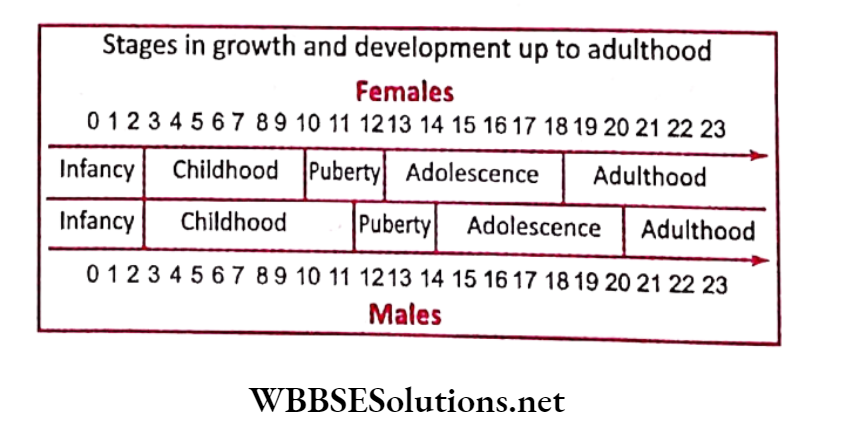
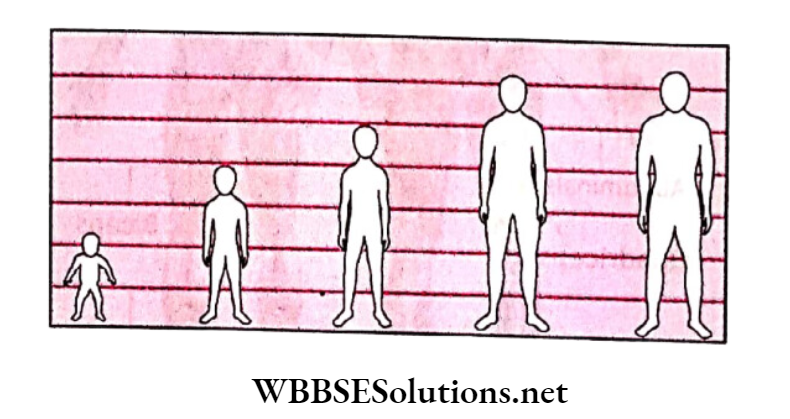
2. Changes in proportions
The physical proportions of the body at birth are very different from those of the adult. Some body parts grow more than others during g development to each of the final adult proportions.
The illustration shows the relative size of body parts at different ages. The head is proportionally large and the legs are proportionally short during childhood.
At birth, the head is one-quarter of the length of the body compared with about one-sixth in the adult. The legs are about one-third the length of the body at birth and one-half in the adult.
Because the body proportions change this means that not all of the body segments grow by the same amount.
Changes in the size and shape of the body. are caused by different segments growing at different times.
These changes in body proportions will have a great influence on how skills will be performed.
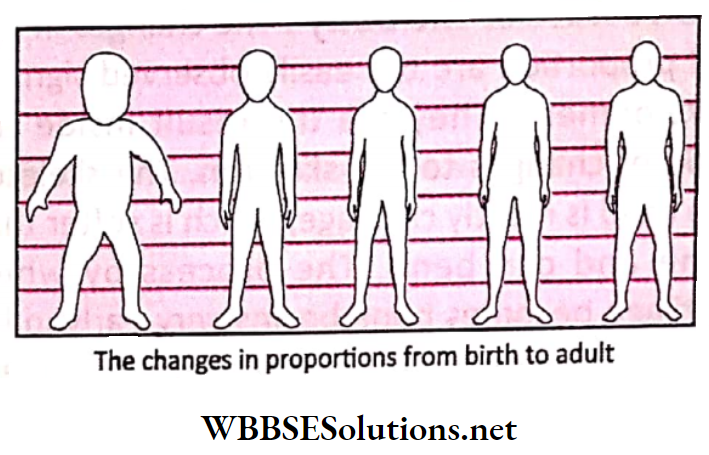
For example, changes in the relative size of the head in childhood affect the balance of the body during movement and the relative shortness of the legs at a very young limit running ability.
At the beginning of puberty, children have long arms and legs. They are better suited for running but the rapid growth may make them appear to be clumsy and to have difficulty in coordination.
Nous Growth spurts:
When the rate of growth increases rapidly it is called a growth spurt. The most important growth spurt is the one that occurs at puberty. This spurt produces a rapid increase in both weight and height.
The peak of this growth spurt occurs at about age 12 for girls and age 14 for boys. Before this growth spurt, there are no important differences between boys and girls in weight and height.
During growth spurts, most of the child’s energy is used for growing.
Children will be easily tired and may not be able to keep up their usual Birth to 1 year to puberty Adolescence growth of trunk growth of legs growth of trunk Areas of growth volume or intensity of training.
Light training will stimulate bodily growth if the child has enough energy.
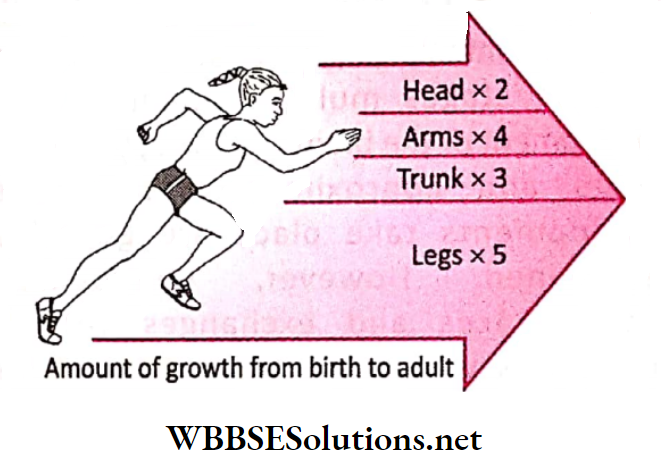
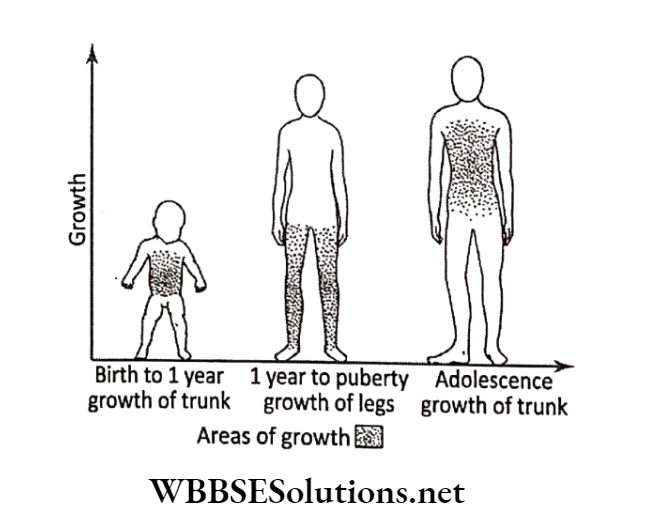
Difference between boys and girls:
The growth spurt and puberty occur at different ages for girls and boys. Girls usually start and finish the stages of puberty and adolescence earlier than boys.
The characteristic differences between boys and girls occur at puberty in response to changes in hormones produced by shoulders and little change in hip width in boys’ bodies.
Typically, this results in broader and broader hips and little change in shoulder width in girls.
Structure of the body:
The changes in size and proportion are easily observed signs of development. They are the result inside the body of changes to the skeleton.
The skeleton of a child is mostly cartilage, which is softer than bone and can bend. The process by which cartilage becomes bone begins very early in life in special growth areas in the bones.
These special growth areas are called growth plates.
Psychological development:
Children go through distinct periods of development as they move from infants to young adults. During each of these stages, multiple changes in the development of the brain are taking place.
What occurs and approximately when these developments take place are genetically determined.
However, environmental circumstances and exchanges with key individuals within that environment have a significant influence on how each child benefits from each development event.
Ages and stages is a term used to broadly outline key periods in the human development timeline.
During each stage growth and development occur in the primary developmental domains including physical, intellectual, language, and social-emotional.
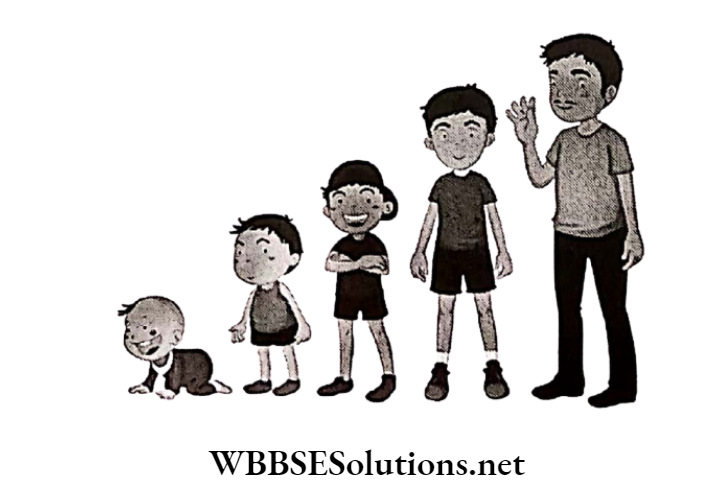
1. Infants/Babies (0-2 years)
This is a time for developing the bonds that will last a lifetime providing the child with the inner resources to develop self-esteem and the ability to relate positively with others.
2. Toddlers/Pre-schoolers (2-5 years)
When a child takes the first step on his or her own, a new phase in development begins. At this stage, children are now free to roam around the world.
It is a time for active exploration of their environment.
Language development takes major leaps which leads to learning the names of objects of interest, the ability to ask for things, and as they discover their independent nature.
During this developmental stage, a major challenge is developing what psychologists call emotional regulation.
This is also a stage of rapid physical and intellectual development preparing these children for starting school which includes interacting cooperatively with peers while at the same time being able to compete physically and intellectually.
3. School-age children (6-12 years)
While toddlers and pre-schoolers need constant supervision, school-age children become gradually ready for more independence.
However, learning to make good choices and exercise self-discipline does not come easily for many. Parents need to impart a moral code that the child gradually internalizes.
As children struggle with these important tasks parents must be able to provide praise and encouragement for achievement but parents must also be able to allow them to sometimes experience the natural consequences for their behavior or provide logical consequences to help them learn from mistakes.
4. Adolescents/Teenagers (13-18 years)
It is a time to really begin defining one’s self and realistically contemplating the future. Skill development is accelerated to prepare for college or job training programs.
Talents are perfected. Social skills are honed and relationships take on more of a serious nature. Peer pressure is at its maximum and in today’s teen society there are more tempting sidetracks than ever.
During adolescence, kids need their parents more than ever.
With age, children grow both in weight and height. Their rates of growth are not uniform throughout the whole of childhood.
Growth in the first few years of life is very rapid, and then it slows down later.
Another spurt of growth their birth weight at 5 months and treble it at 1 takes place in adolescence. Most babies have a double year.
While the average length of the baby at birth is about 50 cm (20 inches), it rises to 75 cm (30 inches) at 1 year, i.e., one and a half times more than at birth.
Boys, even in infancy, tend to be taller, heavier and grow faster than girls do. There is a lot of difference in height and weight of children at different ages.
There are also significant variations in the height and weight of children from different regions and communities in a vast and diverse country like India.
The expected average weight and height of Indian children of different ages are given below:
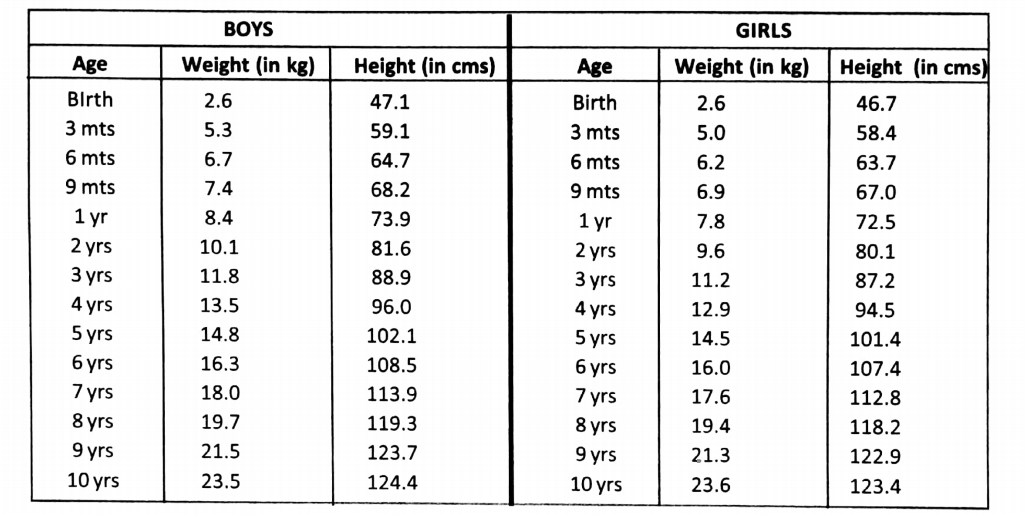
Abnormal development:
Fairy tales are filled with stories of giants and little people. The stories were written hundreds of years ago, and they sometimes tried to explain why these people looked different from others around them.
These old-fashioned fairy tales might have been different if the writers had known what today’s doctors have learned about growth.
What is Growth Disorder? Everyone grows and matures differently. You may be taller than your best friend in fourth grade. But then in sixth grade, your best friend may be an inch taller than you.
Usually, this is totally normal. A growth disorder, however, means that a kid has abnormal growth-for example, growing a lot slower or a lot faster than other kids at the same age.
What is Normal Growth? If growth is not the same for all kids, how do doctors know what is normal? By feet and inches (or meters and centimeters).
Over the years, lots of height and weight measurements have been taken for lots of children of different ages.
These measurements have been put together in what is called a standard growth chart, which tells doctors about how most kids grow.
From the time you were a baby; your doctor has weighed and measured you whenever you have had a checkup.
Because kids grow differently, your doctor checks your height against the standard growth chart.
If you are in the 50th percentile on the growth chart, it means half of the kids of your age are taller than you are and half are shorter.
If you fall in the 25th percentile that means 75% of the kids of your age are taller and 25% are shorter, and so on.
But some children who are under the 3rd percentile or over the 97th percentile, or who are growing a lot slower or faster than most other kids, may have a growth problem. In this situation, the doctor will usually want to check things out.
One thing your doctor will want to know is how tall your mother and father are and how they grew when they were children.
You may have inherited short or tall genes from them. You may also have inherited the tendency to have your growth spurt earlier or later than most other kids do.
Problems with puberty:
Glands in your body produce chemical messengers called hormones. Normal increases in the amounts of some of these hormones being produced trigger the changes your body goes through during puberty.
Puberty is the stage of your life when sexual development happens, like breast development and menstrual periods in girls and growth of the penis and testicles in boys.
One of the body changes that happen during puberty is a big increase in your rate of growth-a growth spurt.
When these changes happen before the age of 7 or 8 in girls or 9 in boys, it’s called precocious or early puberty.
At first, these kids may be taller than their friends. Later, however, they may stop growing sooner than most other kids do, and they may not become as tall when they are adults as they might have been otherwise.
Usually, kids with precocious puberty can be treated with medications that help correct this problem.
Delayed or late puberty occurs when the hormonal and body changes that should happen with puberty take place later than normal, or sometimes not at all.
Girls who have not begun puberty by age 13 and boys who have not begun by age 15 have delayed puberty and are sometimes called late bloomers.
When puberty finally occurs, either by itself or with treatment, these teens have a growth spurt and tend to catch up to their peers. Sometimes they even grow to be taller than their friends.
Hormones and Growth Disorders:
One of the glands in your body is called the pituitary gland. It’s found at the bottom of your brain and is shaped like a peanut. It may be small in size, but it’s pretty big in importance.
One of the chemical messengers the pituitary gland sends out to your body is called growth hormone, which is essential for growth.
When the pituitary gland doesn’t make enough growth hormone and sometimes other pituitary hormones as well, the condition is called hypopituitarism. This can slow down a kid’s growth.
Special tests can find out if kids don’t produce enough growth hormone. If they don’t, daily shots of growth hormone can often help them grow to be normal-sized adults.
Another gland that produces hormones important for growth is your thyroid. You may be able to feel it if you press gently with your fingers across the front of your neck, just under your Adam’s apple (elevated throat region of males).
It is shaped like a butterfly and moves up and down when you swallow.
Your thyroid makes a hormone called thyroxin. If it makes too little, the condition is called hypothyroidism.
Having too little thyroxin makes a kid grow more slowly. Doctors can do a simple blood test for hypothyroidism. If it’s needed, a kid can take the missing hormone as a pill.
Other reasons why kids might not grow normally:
Hormones play a major role in growth, but kids might not grow normally for other reasons, including:
1. Chronic diseases:
These include heart and kidney problems, cystic fibrosis, juvenile rheumatoid arthritis, and sickle cell anemia, which may slow growth in some cases.
2. Complications during pregnancy:
One of the reasons a pregnant woman is warned not to smoke or drink is because it may slow down her baby’s growth. A baby may be too small when it’s born and some remain small for life.
Some infections during pregnancy, other pregnancy problems, and certain. genetic diseases can also cause this problem.
3. Failure to thrive :
Some babies do not grow and gain weight normally after they are born. This is called failure to thrive (FTT). FTT may happen when a child simply doesn’t get enough to eat.
Some babies may have an illness that needs to be treated, but most will grow normally after they start
4. Genetic conditions:
Some genetics eating enough food. conditions can also cause children to not grow as they should.
Many of these growth disorders can be successfully treated today. With help, kids who might once have ended up very short can grow up more like other children.
Body Mass Index (BMI):
The body mass index (BMI) or Quetelet index is a value derived from the mass (weight) and height of an individual.
The BMI is defined as the body mass divided by the square of the body height and is universally expressed in units of kg/m2, resulting from mass in kilograms and height in meters.
The BMI is an attempt to quantify the amount of tissue mass (muscle, fat, and bone) in an individual, and then categorize that person as underweight, normal weight, overweight, or obese based on that value.
However, there is some debate about where on the BMI scale the dividing lines between categories should be placed.
The body mass index (BMI) is a statistic developed by Adolphe Quetelet in the 1900s for evaluating body mass.
It is not related to gender and age. It used the same formula for men as for women and children.
The body mass index is calculated based on the following formula:
BMI=\(\frac{Weight in Kilograms}{height in Metre2}\)
Example for 175 cm height and 70 kg weight: BMI-70/(1.75 x 1.75) = 22.86
The result is in kilograms by meter square, or kg/m2. BMI is a crude method to estimate obesity. Body Mass Index (BMI) is one of the ways to determine when extra fat accumulates.
Translates into health risks. Body mass index is a measure that takes into account a person’s weight and height to gauge total body fat in adults.
The higher the body mass index, the greater the risk of developing additional health problems. The following chart describes the various categories of obesity based on body mass index.
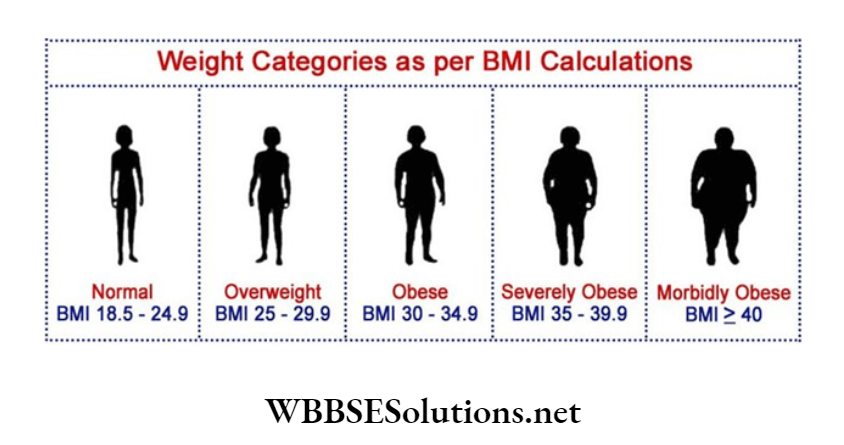
BMI < 15 (Excessively low weight)
BMI 16-18 (Low weight)
BMI 19-24.9 (Desirable)
BMI 25-29.9 (Overweight)
BMI30-34.9 (Obese, category 1)
BMI 35-39.9 (Obese, category 2)
BMI > 40 (Severe obesity)
Heart disease, diabetes, and high blood pressure are all linked to being overweight and obese.
Interesting Facts About Human Body
The human body is made up of a head, a neck, a torso (trunk), two arms, and two legs. The average height of an adult human is about 5 to 6 feet.
The human body is made to stand erect, walk on two feet, use the arms to carry and lift, and have opposable thumbs (able to grasp).
The adult body is made up of 100 trillion cells, 206 bones, 650 muscles, and 22 internal organs.
Every square inch of the human body has about 19 million skin cells.
In every hour about 1 billion cells in the human body must be replaced.
The average human head has about 100,000 hairs.
The average adult takes over 20,000 breaths a day.
The circulatory system of arteries, veins, and capillaries is about 60,000 miles long.
The heart beats more than 2.5 billion times in an average lifetime.
There are about 9,000 taste buds on the surface of the tongue, in the throat, and on the roof of the mouth.
The strongest (powerful) muscle in the body is the tongue.
The human heart creates enough pressure when it pumps out to the body to squirt blood bo 30 feet.
You blink over 10,000,000 times a year.
The human brain weighs about 3 pounds.
The brain uses over a quarter of the oxygen used by the human body.
Your heart beats around 100000 times a day, 36500000 times a year, and over a billion times if you live beyond 30.
Red blood cells carry oxygen around the body. They are created inside the bone marrow of your bones.
The color of human skin is determined by the level of pigment melanin that the body produces. Those with a small amount of melanin have light skin while those with a large amount have dark skin.
Adult lungs have a surface area of around 70 square meters.
Humans have a stage of sleep that features rapid eye movement (REM). REM sleep makes up around 25% of total sleep time and is often when you have your most vivid dreams.
Most adults have 32 teeth.
The smallest bone found in the human body is located in the middle ear. The stapes (or stirrup) bone is only 2.8 millimeters long.
Infants blink only once or twice a minute while adults average around 10.
As well as having unique fingerprints, humans also have unique tongue prints.
The left side of your body is controlled by the right side of your brain while the right side of your body is controlled by the left side of your brain.
Antibiotics are only effective against bacteria; they do not help in fighting off a virus.
It takes about 12 hours to completely digest eaten food.
Your sense of smell is around 10000 times more sensitive than your sense of taste.
It takes about 20 seconds for a red blood cell to circle the whole body.
One-fourth of the bones in your body are in your feet.
The blood processing in the kidneys amounts to some 1.25 liters a minute, or 1800 liters a day (1.25 × 60 × 24 = 1800), which is about 400 times the total blood volume and roughly one-fourth the volume pumped each day by the heart.
Every 24 hours, 170 liters of water is filtered from the bloodstream into the renal tubules; and by far the greater part of this- some 168.5 liters of water together with salts dissolved in it is reabsorbed by the cells lining the tubules and returned to the blood.
In a 24-hour period, an average man eliminates only 1.5 liters of water, containing the waste products of metabolism, but the actual volume varies with fluid intake and occupational and environmental factors.
Question 2. What is a growth spurt?
Answer:
The Growth And Development Of The Human Body
There are clear stages that children pass through from birth to adulthood. These stages are the same for boys and girls, but girls generally mature before boys. This is clearly shown in the diagram below.
Physical development:
Physical growth is obviously important to performance. We will start by looking at how the body changes during development.
There are important changes in body size and proportions. These changes affect the way where children can perform different skills and activities. our gas Patterns of growth ou mot varans
1. Changes in size
Children grow in size at a very fast rate. At birth, infants are only about a quarter of their adult height.
This final adult height is usually reached at about twenty years of age. There are four characteristic stages of growth from birth to adulthood.
- Rapid growth in infancy and early childhood
- Slow, steady growth in middle childhood
- Rapid growth during puberty bow sort
- Gradual slowing down of growth in adolescence until adult height is reached. Both sexes are of comparable shape and size during infancy and childhood.


2. Changes in proportions
The physical proportions of the body at birth are very different from those of the adult. Some body parts grow more than others during g development to each of the final adult proportions.
The illustration shows the relative size of body parts at different ages. The head is proportionally large and the legs are proportionally short during childhood.
At birth, the head is one-quarter of the length of the body compared with about one-sixth in the adult. The legs are about one-third the length of the body at birth and one-half in the adult.
Because the body proportions change this means that not all of the body segments grow by the same amount.
Changes in the size and shape of the body. are caused by different segments growing at different times.
These changes in body proportions will have a great influence on how skills will be performed.

For example, changes in the relative size of the head in childhood affect the balance of the body during movement and the relative shortness of the legs at a very young limit running ability.
At the beginning of puberty, children have long arms and legs. They are better suited for running but the rapid growth may make them appear to be clumsy and to have difficulty in coordination.
Nous Growth spurts:
When the rate of growth increases rapidly it is called a growth spurt. The most important growth spurt is the one that occurs at puberty. This spurt produces a rapid increase in both weight and height.
The peak of this growth spurt occurs at about age 12 for girls and age 14 for boys. Before this growth spurt, there are no important differences between boys and girls in weight and height.
During growth spurts, most of the child’s energy is used for growing.
Children will be easily tired and may not be able to keep up their usual Birth to 1 year to puberty Adolescence growth of trunk growth of legs growth of trunk Areas of growth volume or intensity of training.
Light training will stimulate bodily growth if the child has enough energy.


Difference between boys and girls:
The growth spurt and puberty occur at different ages for girls and boys. Girls usually start and finish the stages of puberty and adolescence earlier than boys.
The characteristic differences between boys and girls occur at puberty in response to changes in hormones produced by shoulders and little change in hip width in boys’ bodies.
Typically, this results in broader and broader hips and little change in shoulder width in girls.
Structure of the body:
The changes in size and proportion are easily observed signs of development. They are the result inside the body of changes to the skeleton.
The skeleton of a child is mostly cartilage, which is softer than bone and can bend. The process by which cartilage becomes bone begins very early in life in special growth areas in the bones.
These special growth areas are called growth plates.
Psychological development:
Children go through distinct periods of development as they move from infants to young adults. During each of these stages, multiple changes in the development of the brain are taking place.
What occurs and approximately when these developments take place are genetically determined.
However, environmental circumstances and exchanges with key individuals within that environment have a significant influence on how each child benefits from each development event.
Ages and stages is a term used to broadly outline key periods in the human development timeline.
During each stage growth and development occur in the primary developmental domains including physical, intellectual, language, and social-emotional.

1. Infants/Babies (0-2 years)
This is a time for developing the bonds that will last a lifetime providing the child with the inner resources to develop self-esteem and the ability to relate positively with others.
2. Toddlers/Pre-schoolers (2-5 years)
When a child takes the first step on his or her own, a new phase in development begins. At this stage, children are now free to roam around the world.
It is a time for active exploration of their environment.
Language development takes major leaps which leads to learning the names of objects of interest, the ability to ask for things, and as they discover their independent nature.
During this developmental stage, a major challenge is developing what psychologists call emotional regulation.
This is also a stage of rapid physical and intellectual development preparing these children for starting school which includes interacting cooperatively with peers while at the same time being able to compete physically and intellectually.
3. School-age children (6-12 years)
While toddlers and pre-schoolers need constant supervision, school-age children become gradually ready for more independence.
However, learning to make good choices and exercise self-discipline does not come easily for many. Parents need to impart a moral code that the child gradually internalizes.
As children struggle with these important tasks parents must be able to provide praise and encouragement for achievement but parents must also be able to allow them to sometimes experience the natural consequences for their behavior or provide logical consequences to help them learn from mistakes.
4. Adolescents/Teenagers (13-18 years)
It is a time to really begin defining one’s self and realistically contemplating the future. Skill development is accelerated to prepare for college or job training programs.
Talents are perfected. Social skills are honed and relationships take on more of a serious nature. Peer pressure is at its maximum and in today’s teen society there are more tempting sidetracks than ever.
During adolescence, kids need their parents more than ever.
With age, children grow both in weight and height. Their rates of growth are not uniform throughout the whole of childhood.
Growth in the first few years of life is very rapid, and then it slows down later.
Another spurt of growth their birth weight at 5 months and treble it at 1 takes place in adolescence. Most babies have a double year.
While the average length of the baby at birth is about 50 cm (20 inches), it rises to 75 cm (30 inches) at 1 year, i.e., one and a half times more than at birth.
Boys, even in infancy, tend to be taller, heavier and grow faster than girls do. There is a lot of difference in height and weight of children at different ages.
There are also significant variations in the height and weight of children from different regions and communities in a vast and diverse country like India.
The expected average weight and height of Indian children of different ages are given below:

Abnormal development:
Fairy tales are filled with stories of giants and little people. The stories were written hundreds of years ago, and they sometimes tried to explain why these people looked different from others around them.
These old-fashioned fairy tales might have been different if the writers had known what today’s doctors have learned about growth.
What is Growth Disorder? Everyone grows and matures differently. You may be taller than your best friend in fourth grade. But then in sixth grade, your best friend may be an inch taller than you.
Usually, this is totally normal. A growth disorder, however, means that a kid has abnormal growth-for example, growing a lot slower or a lot faster than other kids at the same age.
What is Normal Growth? If growth is not the same for all kids, how do doctors know what is normal? By feet and inches (or meters and centimeters).
Over the years, lots of height and weight measurements have been taken for lots of children of different ages.
These measurements have been put together in what is called a standard growth chart, which tells doctors about how most kids grow.
From the time you were a baby; your doctor has weighed and measured you whenever you have had a checkup.
Because kids grow differently, your doctor checks your height against the standard growth chart.
If you are in the 50th percentile on the growth chart, it means half of the kids of your age are taller than you are and half are shorter.
If you fall in the 25th percentile that means 75% of the kids of your age are taller and 25% are shorter, and so on.
But some children who are under the 3rd percentile or over the 97th percentile, or who are growing a lot slower or faster than most other kids, may have a growth problem. In this situation, the doctor will usually want to check things out.
One thing your doctor will want to know is how tall your mother and father are and how they grew when they were children.
You may have inherited short or tall genes from them. You may also have inherited the tendency to have your growth spurt earlier or later than most other kids do.
Problems with puberty:
Glands in your body produce chemical messengers called hormones. Normal increases in the amounts of some of these hormones being produced trigger the changes your body goes through during puberty.
Puberty is the stage of your life when sexual development happens, like breast development and menstrual periods in girls and growth of the penis and testicles in boys.
One of the body changes that happen during puberty is a big increase in your rate of growth-a growth spurt.
When these changes happen before the age of 7 or 8 in girls or 9 in boys, it’s called precocious or early puberty.
At first, these kids may be taller than their friends. Later, however, they may stop growing sooner than most other kids do, and they may not become as tall when they are adults as they might have been otherwise.
Usually, kids with precocious puberty can be treated with medications that help correct this problem.
Delayed or late puberty occurs when the hormonal and body changes that should happen with puberty take place later than normal, or sometimes not at all.
Girls who have not begun puberty by age 13 and boys who have not begun by age 15 have delayed puberty and are sometimes called late bloomers.
When puberty finally occurs, either by itself or with treatment, these teens have a growth spurt and tend to catch up to their peers. Sometimes they even grow to be taller than their friends.
Hormones and Growth Disorders:
One of the glands in your body is called the pituitary gland. It’s found at the bottom of your brain and is shaped like a peanut. It may be small in size, but it’s pretty big in importance.
One of the chemical messengers the pituitary gland sends out to your body is called growth hormone, which is essential for growth.
When the pituitary gland doesn’t make enough growth hormone and sometimes other pituitary hormones as well, the condition is called hypopituitarism. This can slow down a kid’s growth.
Special tests can find out if kids don’t produce enough growth hormone. If they don’t, daily shots of growth hormone can often help them grow to be normal-sized adults.
Another gland that produces hormones important for growth is your thyroid. You may be able to feel it if you press gently with your fingers across the front of your neck, just under your Adam’s apple (elevated throat region of males).
It is shaped like a butterfly and moves up and down when you swallow.
Your thyroid makes a hormone called thyroxin. If it makes too little, the condition is called hypothyroidism.
Having too little thyroxin makes a kid grow more slowly. Doctors can do a simple blood test for hypothyroidism. If it’s needed, a kid can take the missing hormone as a pill.
Other reasons why kids might not grow normally:
Hormones play a major role in growth, but kids might not grow normally for other reasons, including
1. Chronic diseases:
These include heart and kidney problems, cystic fibrosis, juvenile rheumatoid arthritis, and sickle cell anemia, which may slow growth in some cases.
2. Complications during pregnancy:
One of the reasons a pregnant woman is warned not to smoke or drink is because it may slow down her baby’s growth. A baby may be too small when it’s born and some remain small for life.
Some infections during pregnancy, other pregnancy problems, and certain. genetic diseases can also cause this problem.
3. Failure to thrive :
Some babies do not grow and gain weight normally after they are born. This is called failure to thrive (FTT). FTT may happen when a child simply doesn’t get enough to eat.
Some babies may have an illness that needs to be treated, but most will grow normally after they start
4. Genetic conditions:
Some genetics eating enough food. conditions can also cause children to not grow as they should.
Many of these growth disorders can be successfully treated today. With help, kids who might once have ended up very short can grow up more like other children.
Body Mass Index (BMI):
The body mass index (BMI) or Quetelet index is a value derived from the mass (weight) and height of an individual.
The BMI is defined as the body mass divided by the square of the body height and is universally expressed in units of kg/m2, resulting from mass in kilograms and height in meters.
The BMI is an attempt to quantify the amount of tissue mass (muscle, fat, and bone) in an individual, and then categorize that person as underweight, normal weight, overweight, or obese based on that value.
However, there is some debate about where on the BMI scale the dividing lines between categories should be placed.
The body mass index (BMI) is a statistic developed by Adolphe Quetelet in the 1900s for evaluating body mass.
It is not related to gender and age. It used the same formula for men as for women and children.
The body mass index is calculated based on the following formula:
BMI=\(\frac{Weight in Kilograms}{height in Metre2}\)
Example for 175 cm height and 70 kg weight: BMI-70/(1.75 x 1.75) = 22.86
The result is in kilograms by meter square, or kg/m2. BMI is a crude method to estimate obesity. Body Mass Index (BMI) is one of the ways to determine when extra fat accumulates.
translates into health risks. Body mass index is a measure that takes into account a person’s weight and height to gauge total body fat in adults.
The higher the body mass index, the greater the risk of developing additional health problems. The following chart describes the various categories of obesity based on body mass index

BMI < 15 (Excessively low weight)
BMI 16-18 (Low weight)
BMI 19-24.9 (Desirable)
BMI 25-29.9 (Overweight)
BMI30-34.9 (Obese, category 1)
BMI 35-39.9 (Obese, category 2)
BMI > 40 (Severe obesity)
Heart disease, diabetes, and high blood pressure are all linked to being overweight and obese.
Interesting Facts About Human Body
The human body is made up of a head, a neck, a torso (trunk), two arms, and two legs. The average height of an adult human is about 5 to 6 feet.
The human body is made to stand erect, walk on two feet, use the arms to carry and lift, and have opposable thumbs (able to grasp).
The adult body is made up of 100 trillion cells, 206 bones, 650 muscles, and 22 internal organs.
Every square inch of the human body has about 19 million skin cells.
In every hour about 1 billion cells in the human body must be replaced.
The average human head has about 100,000 hairs.
The average adult takes over 20,000 breaths a day.
The circulatory system of arteries, veins, and capillaries is about 60,000 miles long.
The heart beats more than 2.5 billion times in an average lifetime.
There are about 9,000 taste buds on the surface of the tongue, in the throat, and on the roof of the mouth.
The strongest (powerful) muscle in the body is the tongue.
The human heart creates enough pressure when it pumps out to the body to squirt blood bo 30 feet.
You blink over 10,000,000 times a year.
The human brain weighs about 3 pounds.
The brain uses over a quarter of the oxygen used by the human body.
Your heart beats around 100000 times a day, 36500000 times a year, and over a billion times if you live beyond 30.
Red blood cells carry oxygen around the body. They are created inside the bone marrow of your bones.
The color of human skin is determined by the level of pigment melanin that the body produces. Those with a small amount of melanin have light skin while those with a large amount have dark skin.
Adult lungs have a surface area of around 70 square meters.
Humans have a stage of sleep that features rapid eye movement (REM). REM sleep makes up around 25% of total sleep time and is often when you have your most vivid dreams.
Most adults have 32 teeth.
The smallest bone found in the human body is located in the middle ear. The stapes (or stirrup) bone is only 2.8 millimeters long.
Infants blink only once or twice a minute while adults average around 10.
As well as having unique fingerprints, humans also have unique tongue prints.
The left side of your body is controlled by the right side of your brain while the right side of your body is controlled by the left side of your brain.
Antibiotics are only effective against bacteria; they do not help in fighting off a virus.
It takes about 12 hours to completely digest eaten food.
Your sense of smell is around 10000 times more sensitive than your sense of taste.
It takes about 20 seconds for a red blood cell to circle the whole body.
One-fourth of the bones in your body are in your feet.
The blood processing in the kidneys amounts to some 1.25 liters a minute, or 1800 liters a day (1.25 × 60 × 24 = 1800), which is about 400 times the total blood volume and roughly one-fourth the volume pumped each day by the heart.
Every 24 hours, 170 liters of water is filtered from the bloodstream into the renal tubules; and by far the greater part of this- some 168.5 liters of water together with salts dissolved in it is reabsorbed by the cells lining the tubules and returned to the blood.
In a 24-hour period, an average man eliminates only 1.5 liters of water, containing the waste products of metabolism, but the actual volume varies with fluid intake and occupational and environmental factors.
Question 3. Write about the change during adolescence.
Answer:
The Growth And Development Of The Human Body
There are clear stages that children pass through from birth to adulthood. These stages are the same for boys and girls, but girls generally mature before boys. This is clearly shown in the diagram below.
Physical development:
Physical growth is obviously important to performance. We will start by looking at how the body changes during development.
There are important changes in body size and proportions. These changes affect the way where children can perform different skills and activities. our gas Patterns of growth ou mot varans
1. Changes in size
Children grow in size at a very fast rate. At birth, infants are only about a quarter of their adult height.
This final adult height is usually reached at about twenty years of age. There are four characteristic stages of growth from birth to adulthood.
- Rapid growth in infancy and early childhood
- Slow, steady growth in middle childhood
- Rapid growth during puberty bow sort
- Gradual slowing down of growth in adolescence until adult height is reached. Both sexes are of comparable shape and size during infancy and childhood.


2. Changes in proportions
The physical proportions of the body at birth are very different from those of the adult. Some body parts grow more than others during g development to each of the final adult proportions.
The illustration shows the relative size of body parts at different ages. The head is proportionally large and the legs are proportionally short during childhood.
At birth, the head is one-quarter of the length of the body compared with about one-sixth in the adult. The legs are about one-third the length of the body at birth and one-half in the adult.
Because the body proportions change this means that not all of the body segments grow by the same amount.
Changes in the size and shape of the body. are caused by different segments growing at different times.
These changes in body proportions will have a great influence on how skills will be performed.

For example, changes in the relative size of the head in childhood affect the balance of the body during movement and the relative shortness of the legs at a very young limits running ability.
At the beginning of puberty, children have long arms and legs. They are better suited for running but the rapid growth may make them appear to be clumsy and to have difficulty in coordination.
Nous Growth spurts:
When the rate of growth increases rapidly it is called a growth spurt. The most important growth spurt is the one that occurs at puberty. This spurt produces a rapid increase in both weight and height.
The peak of this growth spurt occurs at about age 12 for girls and age 14 for boys. Before this growth spurt, there are no important differences between boys and girls in weight and height.
During growth spurts, most of the child’s energy is used for growing.
Children will be easily tired and may not be able to keep up their usual Birth to 1 year to puberty Adolescence growth of trunk growth of legs growth of trunk Areas of growth volume or intensity of training.
Light training will stimulate bodily growth if the child has enough energy.


Difference between boys and girls:
The growth spurt and puberty occur at different ages for girls and boys. Girls usually start and finish the stages of puberty and adolescence earlier than boys.
The characteristic differences between boys and girls occur at puberty in response to changes in hormones produced by shoulders and little change in hip width in boys’ bodies.
Typically, this results in broader and broader hips and little change in shoulder width in girls.
Structure of the body:
The changes in size and proportion are easily observed signs of development. They are the result inside the body of changes to the skeleton.
The skeleton of a child is mostly cartilage, which is softer than bone and can bend. The process by which cartilage becomes bone begins very early in life in special growth areas in the bones.
These special growth areas are called growth plates.
Psychological development:
Children go through distinct periods of development as they move from infants to young adults. During each of these stages, multiple changes in the development of the brain are taking place.
What occurs and approximately when these developments take place are genetically determined.
However, environmental circumstances and exchanges with key individuals within that environment have a significant influence on how each child benefits from each development event.
Ages and stages is a term used to broadly outline key periods in the human development timeline.
During each stage growth and development occur in the primary developmental domains including physical, intellectual, language, and social-emotional.

1. Infants/Babies (0-2 years)
This is a time for developing the bonds that will last a lifetime providing the child with the inner resources to develop self-esteem and the ability to relate positively with others.
2. Toddlers/Pre-schoolers (2-5 years)
When a child takes the first step on his or her own, a new phase in development begins. At this stage, children are now free to roam around the world.
It is a time for active exploration of their environment.
Language development takes major leaps which leads to learning the names of objects of interest, the ability to ask for things, and as they discover their independent nature.
During this developmental stage, a major challenge is developing what psychologists call emotional regulation.
This is also a stage of rapid physical and intellectual development preparing these children for starting school which includes interacting cooperatively with peers while at the same time being able to compete physically and intellectually.
3. School-age children (6-12 years)
While toddlers and pre-schoolers need constant supervision, school-age children become gradually ready for more independence.
However, learning to make good choices and exercise self-discipline does not come easily for many. Parents need to impart a moral code that the child gradually internalizes.
As children struggle with these important tasks parents must be able to provide praise and encouragement for achievement but parents must also be able to allow them to sometimes experience the natural consequences for their behavior or provide logical consequences to help them learn from mistakes.
4. Adolescents/Teenagers (13-18 years)
It is a time to really begin defining one’s self and realistically contemplating the future. Skill development is accelerated to prepare for college or job training programs.
Talents are perfected. Social skills are honed and relationships take on more of a serious nature. Peer pressure is at its maximum and in today’s teen society there are more tempting sidetracks than ever.
During adolescence, kids need their parents more than ever.
With age, children grow both in weight and height. Their rates of growth are not uniform throughout the whole of childhood.
Growth in the first few years of life is very rapid, and then it slows down later.
Another spurt of growth their birth weight at 5 months and treble it at 1 takes place in adolescence. Most babies have a double year.
While the average length of the baby at birth is about 50 cm (20 inches), it rises to 75 cm (30 inches) at 1 year, i.e., one and a half times more than at birth.
Boys, even in infancy, tend to be taller, heavier and grow faster than girls do. There is a lot of difference in height and weight of children at different ages.
There are also significant variations in the height and weight of children from different regions and communities in a vast and diverse country like India.
The expected average weight and height of Indian children of different ages are given below:

Abnormal development:
Fairy tales are filled with stories of giants and little people. The stories were written hundreds of years ago, and they sometimes tried to explain why these people looked different from others around them.
These old-fashioned fairy tales might have been different if the writers had known what today’s doctors have learned about growth.
What is Growth Disorder? Everyone grows and matures differently. You may be taller than your best friend in fourth grade. But then in sixth grade, your best friend may be an inch taller than you.
Usually, this is totally normal. A growth disorder, however, means that a kid has abnormal growth-for example, growing a lot slower or a lot faster than other kids at the same age.
What is Normal Growth? If growth is not the same for all kids, how do doctors know what is normal? By feet and inches (or meters and centimeters).
Over the years, lots of height and weight measurements have been taken for lots of children of different ages.
These measurements have been put together in what is called a standard growth chart, which tells doctors about how most kids grow.
From the time you were a baby; your doctor has weighed and measured you whenever you have had a checkup.
Because kids grow differently, your doctor checks your height against the standard growth chart.
If you are in the 50th percentile on the growth chart, it means half of the kids of your age are taller than you are and half are shorter.
If you fall in the 25th percentile that means 75% of the kids of your age are taller and 25% are shorter, and so on.
But some children who are under the 3rd percentile or over the 97th percentile, or who are growing a lot slower or faster than most other kids, may have a growth problem. In this situation, the doctor will usually want to check things out.
One thing your doctor will want to know is how tall your mother and father are and how they grew when they were children.
You may have inherited short or tall genes from them. You may also have inherited the tendency to have your growth spurt earlier or later than most other kids do.
Problems with puberty:
Glands in your body produce chemical messengers called hormones. Normal increases in the amounts of some of these hormones being produced trigger the changes your body goes through during puberty.
Puberty is the stage of your life when sexual development happens, like breast development and menstrual periods in girls and growth of the penis and testicles in boys.
One of the body changes that happen during puberty is a big increase in your rate of growth-a growth spurt.
When these changes happen before the age of 7 or 8 in girls or 9 in boys, it’s called precocious or early puberty.
At first, these kids may be taller than their friends. Later, however, they may stop growing sooner than most other kids do, and they may not become as tall when they are adults as they might have been otherwise.
Usually, kids with precocious puberty can be treated with medications that help correct this problem.
Delayed or late puberty occurs when the hormonal and body changes that should happen with puberty take place later than normal, or sometimes not at all.
Girls who have not begun puberty by age 13 and boys who have not begun by age 15 have delayed puberty and are sometimes called late bloomers.
When puberty finally occurs, either by itself or with treatment, these teens have a growth spurt and tend to catch up to their peers. Sometimes they even grow to be taller than their friends.
Hormones and Growth Disorders:
One of the glands in your body is called the pituitary gland. It’s found at the bottom of your brain and is shaped like a peanut. It may be small in size, but it’s pretty big in importance.
One of the chemical messengers the pituitary gland sends out to your body is called growth hormone, which is essential for growth.
When the pituitary gland doesn’t make enough growth hormone and sometimes other pituitary hormones as well, the condition is called hypopituitarism. This can slow down a kid’s growth.
Special tests can find out if kids don’t produce enough growth hormone. If they don’t, daily shots of growth hormone can often help them grow to be normal-sized adults.
Another gland that produces hormones important for growth is your thyroid. You may be able to feel it if you press gently with your fingers across the front of your neck, just under your Adam’s apple (elevated throat region of males).
It is shaped like a butterfly and moves up and down when you swallow.
Your thyroid makes a hormone called thyroxin. If it makes too little, the condition is called hypothyroidism.
Having too little thyroxin makes a kid grow more slowly. Doctors can do a simple blood test for hypothyroidism. If it’s needed, a kid can take the missing hormone as a pill.
Other reasons why kids might not grow normally:
Hormones play a major role in growth, but kids might not grow normally for other reasons, including:
1. Chronic diseases:
These include heart and kidney problems, cystic fibrosis, juvenile rheumatoid arthritis, and sickle cell anemia, which may slow growth in some cases.
2. Complications during pregnancy:
One of the reasons a pregnant woman is warned not to smoke or drink is because it may slow down her baby’s growth. A baby may be too small when it’s born and some remain small for life.
Some infections during pregnancy, other pregnancy problems, and certain. genetic diseases can also cause this problem.
3. Failure to thrive :
Some babies do not grow and gain weight normally after they are born. This is called failure to thrive (FTT). FTT may happen when a child simply doesn’t get enough to eat.
Some babies may have an illness that needs to be treated, but most will grow normally after they start
4. Genetic conditions:
Some genetics eating enough food. conditions can also cause children to not grow as they should.
Many of these growth disorders can be successfully treated today. With help, kids who might once have ended up very short can grow up more like other children.
Body Mass Index (BMI):
The body mass index (BMI) or Quetelet index is a value derived from the mass (weight) and height of an individual.
The BMI is defined as the body mass divided by the square of the body height and is universally expressed in units of kg/m2, resulting from mass in kilograms and height in meters.
The BMI is an attempt to quantify the amount of tissue mass (muscle, fat, and bone) in an individual, and then categorize that person as underweight, normal weight, overweight, or obese based on that value.
However, there is some debate about where on the BMI scale the dividing lines between categories should be placed.
The body mass index (BMI) is a statistic developed by Adolphe Quetelet in the 1900s for evaluating body mass.
It is not related to gender and age. It used the same formula for men as for women and children.
The body mass index is calculated based on the following formula:
BMI=\(\frac{Weight in Kilograms}{height in Metre2}\)
Example for 175 cm height and 70 kg weight: BMI-70/(1.75 x 1.75) = 22.86
The result is in kilograms by meter square, or kg/m2. BMI is a crude method to estimate obesity. Body Mass Index (BMI) is one of the ways to determine when extra fat accumulates.
Translates into health risks. Body mass index is a measure that takes into account a person’s weight and height to gauge total body fat in adults.
The higher the body mass index, the greater the risk of developing additional health problems. The following chart describes the various categories of obesity based on body mass index

BMI < 15 (Excessively low weight)
BMI 16-18 (Low weight)
BMI 19-24.9 (Desirable)
BMI 25-29.9 (Overweight)
BMI30-34.9 (Obese, category 1)
BMI 35-39.9 (Obese, category 2)
BMI > 40 (Severe obesity)
Heart disease, diabetes, and high blood pressure are all linked to being overweight and obese.
Interesting Facts About Human Body
The human body is made up of a head, a neck, a torso (trunk), two arms, and two legs. The average height of an adult human is about 5 to 6 feet.
The human body is made to stand erect, walk on two feet, use the arms to carry and lift, and have opposable thumbs (able to grasp).
The adult body is made up of 100 trillion cells, 206 bones, 650 muscles, and 22 internal organs.
Every square inch of the human body has about 19 million skin cells.
In every hour about 1 billion cells in the human body must be replaced.
The average human head has about 100,000 hairs.
The average adult takes over 20,000 breaths a day.
The circulatory system of arteries, veins, and capillaries is about 60,000 miles long.
The heart beats more than 2.5 billion times in an average lifetime.
There are about 9,000 taste buds on the surface of the tongue, in the throat, and on the roof of the mouth.
The strongest (powerful) muscle in the body is the tongue.
The human heart creates enough pressure when it pumps out to the body to squirt blood bo 30 feet.
You blink over 10,000,000 times a year.
The human brain weighs about 3 pounds.
The brain uses over a quarter of the oxygen used by the human body.
Your heart beats around 100000 times a day, 36500000 times a year, and over a billion times if you live beyond 30.
Red blood cells carry oxygen around the body. They are created inside the bone marrow of your bones.
The color of human skin is determined by the level of pigment melanin that the body produces. Those with a small amount of melanin have light skin while those with a large amount have dark skin.
Adult lungs have a surface area of around 70 square meters.
Humans have a stage of sleep that features rapid eye movement (REM). REM sleep makes up around 25% of total sleep time and is often when you have your most vivid dreams.
Most adults have 32 teeth.
The smallest bone found in the human body is located in the middle ear. The stapes (or stirrup) bone is only 2.8 millimeters long.
Infants blink only once or twice a minute while adults average around 10.
As well as having unique fingerprints, humans also have unique tongue prints.
The left side of your body is controlled by the right side of your brain while the right side of your body is controlled by the left side of your brain.
Antibiotics are only effective against bacteria; they do not help in fighting off a virus.
It takes about 12 hours to completely digest eaten food.
Your sense of smell is around 10000 times more sensitive than your sense of taste.
It takes about 20 seconds for a red blood cell to circle the whole body.
One-fourth of the bones in your body are in your feet.
The blood processing in the kidneys amounts to some 1.25 liters a minute, or 1800 liters a day (1.25 × 60 × 24 = 1800), which is about 400 times the total blood volume and roughly one-fourth the volume pumped each day by the heart.
Every 24 hours, 170 liters of water is filtered from the bloodstream into the renal tubules; and by far the greater part of this- some 168.5 liters of water together with salts dissolved in it is reabsorbed by the cells lining the tubules and returned to the blood.
In a 24-hour period, an average man eliminates only 1.5 liters of water, containing the waste products of metabolism, but the actual volume varies with fluid intake and occupational and environmental factors.
Question 4. Briefly describe human growth disorders.
Answer:
Hormones and Growth Disorders:
One of the glands in your body is called the pituitary gland. It’s found at the bottom of your brain and is shaped like a peanut. It may be small in size, but it’s pretty big in importance.
One of the chemical messengers the pituitary gland sends out to your body is called growth hormone, which is essential for growth.
When the pituitary gland doesn’t make enough growth hormone and sometimes other pituitary hormones as well, the condition is called hypopituitarism. This can slow down a kid’s growth.
Special tests can find out if kids don’t produce enough growth hormone. If they don’t, daily shots of growth hormone can often help them grow to be normal-sized adults.
Another gland that produces hormones important for growth is your thyroid. You may be able to feel it if you press gently with your fingers across the front of your neck, just under your Adam’s apple (elevated throat region of males).
It is shaped like a butterfly and moves up and down when you swallow.
Your thyroid makes a hormone called thyroxin. If it makes too little, the condition is called hypothyroidism.
Having too little thyroxin makes a kid grow more slowly. Doctors can do a simple blood test for hypothyroidism. If it’s needed, a kid can take the missing hormone as a pill.
Other reasons why kids might not grow normally:
Hormones play a major role in growth, but kids might not grow normally for other reasons, including:
1. Chronic diseases:
These include heart and kidney problems, cystic fibrosis, juvenile rheumatoid arthritis, and sickle cell anemia, which may slow growth in some cases.
2. Complications during pregnancy:
One of the reasons a pregnant woman is warned not to smoke or drink is because it may slow down her baby’s growth. A baby may be too small when it’s born and some remain small for life.
Some infections during pregnancy, other pregnancy problems, and certain. genetic diseases can also cause this problem.
3. Failure to thrive :
Some babies do not grow and gain weight normally after they are born. This is called failure to thrive (FTT). FTT may happen when a child simply doesn’t get enough to eat.
Some babies may have an illness that needs to be treated, but most will grow normally after they start
4. Genetic conditions:
Some genetics eating enough food. conditions can also cause children to not grow as they should.
Many of these growth disorders can be successfully treated today. With help, kids who might once have ended up very short can grow up more like other children.
Body Mass Index (BMI):
The body mass index (BMI) or Quetelet index is a value derived from the mass (weight) and height of an individual.
The BMI is defined as the body mass divided by the square of the body height and is universally expressed in units of kg/m2, resulting from mass in kilograms and height in meters.
The BMI is an attempt to quantify the amount of tissue mass (muscle, fat, and bone) in an individual, and then categorize that person as underweight, normal weight, overweight, or obese based on that value.
However, there is some debate about where on the BMI scale the dividing lines between categories should be placed.
The body mass index (BMI) is a statistic developed by Adolphe Quetelet in the 1900s for evaluating body mass.
It is not related to gender and age. It used the same formula for men as for women and children.
The body mass index is calculated based on the following formula:
BMI=\(\frac{Weight in Kilograms}{height in Metre2}\)
Example for 175 cm height and 70 kg weight: BMI-70/(1.75 x 1.75) = 22.86
The result is in kilograms by meter square, or kg/m2. BMI is a crude method to estimate obesity. Body Mass Index (BMI) is one of the ways to determine when extra fat accumulates.
translates into health risks. Body mass index is a measure that takes into account a person’s weight and height to gauge total body fat in adults.
The higher the body mass index, the greater the risk of developing additional health problems. The following chart describes the various categories of obesity based on body mass index.
Question 5. What is BMI? The height and weight of a person are 1.5 m and 50 kg respectively. Calculate the BMI of that person. Find out if the person is desirable or obese.
Answer:
The Growth And Development Of The Human Body
There are clear stages that children pass through from birth to adulthood. These stages are the same for boys and girls, but girls generally mature before boys. This is clearly shown in the diagram below.
Physical development:
Physical growth is obviously important to performance. We will start by looking at how the body changes during development.
There are important changes in body size and proportions. These changes affect the way where children can perform different skills and activities. our gas Patterns of growth ou mot varans
1. Changes in size
Children grow in size at a very fast rate. At birth, infants are only about a quarter of their adult height.
This final adult height is usually reached at about twenty years of age. There are four characteristic stages of growth from birth to adulthood.
- Rapid growth in infancy and early childhood
- Slow, steady growth in middle childhood
- Rapid growth during puberty bow sort
- Gradual slowing down of growth in adolescence until adult height is reached. Both sexes are of comparable shape and size during infancy and childhood.


2. Changes in proportions
The physical proportions of the body at birth are very different from those of the adult. Some body parts grow more than others during g development to each of the final adult proportions.
The illustration shows the relative size of body parts at different ages. The head is proportionally large and the legs are proportionally short during childhood.
At birth, the head is one-quarter of the length of the body compared with about one-sixth in the adult. The legs are about one-third the length of the body at birth and one-half in the adult.
Because the body proportions change this means that not all of the body segments grow by the same amount.
Changes in the size and shape of the body. are caused by different segments growing at different times.
These changes in body proportions will have a great influence on how skills will be performed.

For example, changes in the relative size of the head in childhood affect the balance of the body during movement and the relative shortness of the legs at a very young limit running ability.
At the beginning of puberty, children have long arms and legs. They are better suited for running but the rapid growth may make them appear to be clumsy and to have difficulty in coordination.
Nous Growth spurts:
When the rate of growth increases rapidly it is called a growth spurt. The most important growth spurt is the one that occurs at puberty. This spurt produces a rapid increase in both weight and height.
The peak of this growth spurt occurs at about age 12 for girls and age 14 for boys. Before this growth spurt, there are no important differences between boys and girls in weight and height.
During growth spurts, most of the child’s energy is used for growing.
Children will be easily tired and may not be able to keep up their usual Birth to 1 year to puberty Adolescence growth of trunk growth of legs growth of trunk Areas of growth volume or intensity of training.
Light training will stimulate bodily growth if the child has enough energy.


Difference between boys and girls:
The growth spurt and puberty occur at different ages for girls and boys. Girls usually start and finish the stages of puberty and adolescence earlier than boys.
The characteristic differences between boys and girls occur at puberty in response to changes in hormones produced by shoulders and little change in hip width in boys’ bodies.
Typically, this results in broader and broader hips and little change in shoulder width in girls.
Structure of the body:
The changes in size and proportion are easily observed signs of development. They are the result inside the body of changes to the skeleton.
The skeleton of a child is mostly cartilage, which is softer than bone and can bend. The process by which cartilage becomes bone begins very early in life in special growth areas in the bones.
These special growth areas are called growth plates.
Psychological development:
Children go through distinct periods of development as they move from infants to young adults. During each of these stages, multiple changes in the development of the brain are taking place.
What occurs and approximately when these developments take place are genetically determined.
However, environmental circumstances and exchanges with key individuals within that environment have a significant influence on how each child benefits from each development event.
Ages and stages is a term used to broadly outline key periods in the human development timeline.
During each stage growth and development occur in the primary developmental domains including physical, intellectual, language, and social-emotional.

1. Infants/Babies (0-2 years)
This is a time for developing the bonds that will last a lifetime providing the child with the inner resources to develop self-esteem and the ability to relate positively with others.
2. Toddlers/Pre-schoolers (2-5 years)
When a child takes the first step on his or her own, a new phase in development begins. At this stage, children are now free to roam around the world.
It is a time for active exploration of their environment.
Language development takes major leaps which leads to learning the names of objects of interest, the ability to ask for things, and as they discover their independent nature.
During this developmental stage, a major challenge is developing what psychologists call emotional regulation.
This is also a stage of rapid physical and intellectual development preparing these children for starting school which includes interacting cooperatively with peers while at the same time being able to compete physically and intellectually.
3. School-age children (6-12 years)
While toddlers and pre-schoolers need constant supervision, school-age children become gradually ready for more independence.
However, learning to make good choices and exercise self-discipline does not come easily for many. Parents need to impart a moral code that the child gradually internalizes.
As children struggle with these important tasks parents must be able to provide praise and encouragement for achievement but parents must also be able to allow them to sometimes experience the natural consequences for their behavior or provide logical consequences to help them learn from mistakes.
4. Adolescents/Teenagers (13-18 years)
It is a time to really begin defining one’s self and realistically contemplating the future. Skill development is accelerated to prepare for college or job training programs.
Talents are perfected. Social skills are honed and relationships take on more of a serious nature. Peer pressure is at its maximum and in today’s teen society there are more tempting sidetracks than ever.
During adolescence, kids need their parents more than ever.
With age, children grow both in weight and height. Their rates of growth are not uniform throughout the whole of childhood.
Growth in the first few years of life is very rapid, and then it slows down later.
Another spurt of growth their birth weight at 5 months and treble it at 1 takes place in adolescence. Most babies have a double year.
While the average length of the baby at birth is about 50 cm (20 inches), it rises to 75 cm (30 inches) at 1 year, i.e., one and a half times more than at birth.
Boys, even in infancy, tend to be taller, heavier and grow faster than girls do. There is a lot of difference in height and weight of children at different ages.
There are also significant variations in the height and weight of children from different regions and communities in a vast and diverse country like India.
The expected average weight and height of Indian children of different ages are given below:

Abnormal development:
Fairy tales are filled with stories of giants and little people. The stories were written hundreds of years ago, and they sometimes tried to explain why these people looked different from others around them.
These old-fashioned fairy tales might have been different if the writers had known what today’s doctors have learned about growth.
What is Growth Disorder? Everyone grows and matures differently. You may be taller than your best friend in fourth grade. But then in sixth grade, your best friend may be an inch taller than you.
Usually, this is totally normal. A growth disorder, however, means that a kid has abnormal growth-for example, growing a lot slower or a lot faster than other kids at the same age.
What is Normal Growth? If growth is not the same for all kids, how do doctors know what is normal? By feet and inches (or meters and centimeters).
Over the years, lots of height and weight measurements have been taken for lots of children of different ages.
These measurements have been put together in what is called a standard growth chart, which tells doctors about how most kids grow.
From the time you were a baby; your doctor has weighed and measured you whenever you have had a checkup.
Because kids grow differently, your doctor checks your height against the standard growth chart.
If you are in the 50th percentile on the growth chart, it means half of the kids of your age are taller than you are and half are shorter.
If you fall in the 25th percentile that means 75% of the kids of your age are taller and 25% are shorter, and so on.
But some children who are under the 3rd percentile or over the 97th percentile, or who are growing a lot slower or faster than most other kids, may have a growth problem. In this situation, the doctor will usually want to check things out.
One thing your doctor will want to know is how tall your mother and father are and how they grew when they were children.
You may have inherited short or tall genes from them. You may also have inherited the tendency to have your growth spurt earlier or later than most other kids do.
Problems with puberty:
Glands in your body produce chemical messengers called hormones. Normal increases in the amounts of some of these hormones being produced trigger the changes your body goes through during puberty.
Puberty is the stage of your life when sexual development happens, like breast development and menstrual periods in girls and growth of the penis and testicles in boys.
One of the body changes that happen during puberty is a big increase in your rate of growth-a growth spurt.
When these changes happen before the age of 7 or 8 in girls or 9 in boys, it’s called precocious or early puberty.
At first, these kids may be taller than their friends. Later, however, they may stop growing sooner than most other kids do, and they may not become as tall when they are adults as they might have been otherwise.
Usually, kids with precocious puberty can be treated with medications that help correct this problem.
Delayed or late puberty occurs when the hormonal and body changes that should happen with puberty take place later than normal, or sometimes not at all.
Girls who have not begun puberty by age 13 and boys who have not begun by age 15 have delayed puberty and are sometimes called late bloomers.
When puberty finally occurs, either by itself or with treatment, these teens have a growth spurt and tend to catch up to their peers. Sometimes they even grow to be taller than their friends.
Hormones and Growth Disorders:
One of the glands in your body is called the pituitary gland. It’s found at the bottom of your brain and is shaped like a peanut. It may be small in size, but it’s pretty big in importance.
One of the chemical messengers the pituitary gland sends out to your body is called growth hormone, which is essential for growth.
When the pituitary gland doesn’t make enough growth hormone and sometimes other pituitary hormones as well, the condition is called hypopituitarism. This can slow down a kid’s growth.
Special tests can find out if kids don’t produce enough growth hormone. If they don’t, daily shots of growth hormone can often help them grow to be normal-sized adults.
Another gland that produces hormones important for growth is your thyroid. You may be able to feel it if you press gently with your fingers across the front of your neck, just under your Adam’s apple (elevated throat region of males).
It is shaped like a butterfly and moves up and down when you swallow.
Your thyroid makes a hormone called thyroxin. If it makes too little, the condition is called hypothyroidism.
Having too little thyroxin makes a kid grow more slowly. Doctors can do a simple blood test for hypothyroidism. If it’s needed, a kid can take the missing hormone as a pill.
Other reasons why kids might not grow normally:
Hormones play a major role in growth, but kids might not grow normally for other reasons, including:
1. Chronic diseases:
These include heart and kidney problems, cystic fibrosis, juvenile rheumatoid arthritis, and sickle cell anemia, which may slow growth in some cases.
2. Complications during pregnancy:
One of the reasons a pregnant woman is warned not to smoke or drink is because it may slow down her baby’s growth. A baby may be too small when it’s born and some remain small for life.
Some infections during pregnancy, other pregnancy problems, and certain. genetic diseases can also cause this problem.
3. Failure to thrive :
Some babies do not grow and gain weight normally after they are born. This is called failure to thrive (FTT). FTT may happen when a child simply doesn’t get enough to eat.
Some babies may have an illness that needs to be treated, but most will grow normally after they start
4. Genetic conditions:
Some genetics eating enough food. conditions can also cause children to not grow as they should.
Many of these growth disorders can be successfully treated today. With help, kids who might once have ended up very short can grow up more like other children.
Body Mass Index (BMI):
The body mass index (BMI) or Quetelet index is a value derived from the mass (weight) and height of an individual.
The BMI is defined as the body mass divided by the square of the body height and is universally expressed in units of kg/m2, resulting from mass in kilograms and height in meters.
The BMI is an attempt to quantify the amount of tissue mass (muscle, fat, and bone) in an individual, and then categorize that person as underweight, normal weight, overweight, or obese based on that value.
However, there is some debate about where on the BMI scale the dividing lines between categories should be placed.
The body mass index (BMI) is a statistic developed by Adolphe Quetelet in the 1900s for evaluating body mass.
It is not related to gender and age. It used the same formula for men as for women and children.
The body mass index is calculated based on the following formula:
BMI=\(\frac{Weight in Kilograms}{height in Metre2}\)
Example for 175 cm height and 70 kg weight: BMI-70/(1.75 x 1.75) = 22.86
The result is in kilograms by meter square, or kg/m2. BMI is a crude method to estimate obesity. Body Mass Index (BMI) is one of the ways to determine when extra fat accumulates.
translates into health risks. Body mass index is a measure that takes into account a person’s weight and height to gauge total body fat in adults.
The higher the body mass index, the greater the risk of developing additional health problems. The following chart describes the various categories of obesity based on body mass index

BMI < 15 (Excessively low weight)
BMI 16-18 (Low weight)
BMI 19-24.9 (Desirable)
BMI 25-29.9 (Overweight)
BMI30-34.9 (Obese, category 1)
BMI 35-39.9 (Obese, category 2)
BMI > 40 (Severe obesity)
Heart disease, diabetes, and high blood pressure are all linked to being overweight and obese.
Interesting Facts About Human Body
The human body is made up of a head, a neck, a torso (trunk), two arms, and two legs. The average height of an adult human is about 5 to 6 feet.
The human body is made to stand erect, walk on two feet, use the arms to carry and lift, and have opposable thumbs (able to grasp).
The adult body is made up of 100 trillion cells, 206 bones, 650 muscles, and 22 internal organs.
Every square inch of the human body has about 19 million skin cells.
In every hour about 1 billion cells in the human body must be replaced.
The average human head has about 100,000 hairs.
The average adult takes over 20,000 breaths a day.
The circulatory system of arteries, veins, and capillaries is about 60,000 miles long.
The heart beats more than 2.5 billion times in an average lifetime.
There are about 9,000 taste buds on the surface of the tongue, in the throat, and on the roof of the mouth.
The strongest (powerful) muscle in the body is the tongue.
The human heart creates enough pressure when it pumps out to the body to squirt blood bo 30 feet.
You blink over 10,000,000 times a year.
The human brain weighs about 3 pounds.
The brain uses over a quarter of the oxygen used by the human body.
Your heart beats around 100000 times a day, 36500000 times a year, and over a billion times if you live beyond 30.
Red blood cells carry oxygen around the body. They are created inside the bone marrow of your bones.
The color of human skin is determined by the level of pigment melanin that the body produces. Those with a small amount of melanin have light skin while those with a large amount have dark skin.
Adult lungs have a surface area of around 70 square meters.
Humans have a stage of sleep that features rapid eye movement (REM). REM sleep makes up around 25% of total sleep time and is often when you have your most vivid dreams.
Most adults have 32 teeth.
The smallest bone found in the human body is located in the middle ear. The stapes (or stirrup) bone is only 2.8 millimeters long.
Infants blink only once or twice a minute while adults average around 10.
As well as having unique fingerprints, humans also have unique tongue prints.
The left side of your body is controlled by the right side of your brain while the right side of your body is controlled by the left side of your brain.
Antibiotics are only effective against bacteria; they do not help in fighting off a virus.
It takes about 12 hours to completely digest eaten food.
Your sense of smell is around 10000 times more sensitive than your sense of taste.
It takes about 20 seconds for a red blood cell to circle the whole body.
One-fourth of the bones in your body are in your feet.
The blood processing in the kidneys amounts to some 1.25 liters a minute, or 1800 liters a day (1.25 × 60 × 24 = 1800), which is about 400 times the total blood volume and roughly one-fourth the volume pumped each day by the heart.
Every 24 hours, 170 liters of water is filtered from the bloodstream into the renal tubules; and by far the greater part of this- some 168.5 liters of water together with salts dissolved in it is reabsorbed by the cells lining the tubules and returned to the blood.
In a 24-hour period, an average man eliminates only 1.5 liters of water, containing the waste products of metabolism, but the actual volume varies with fluid intake and occupational and environmental factors.
